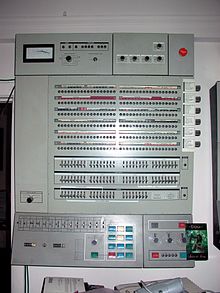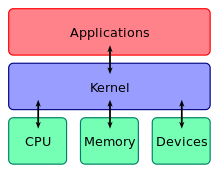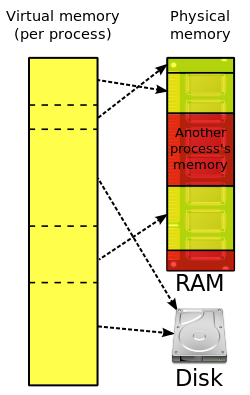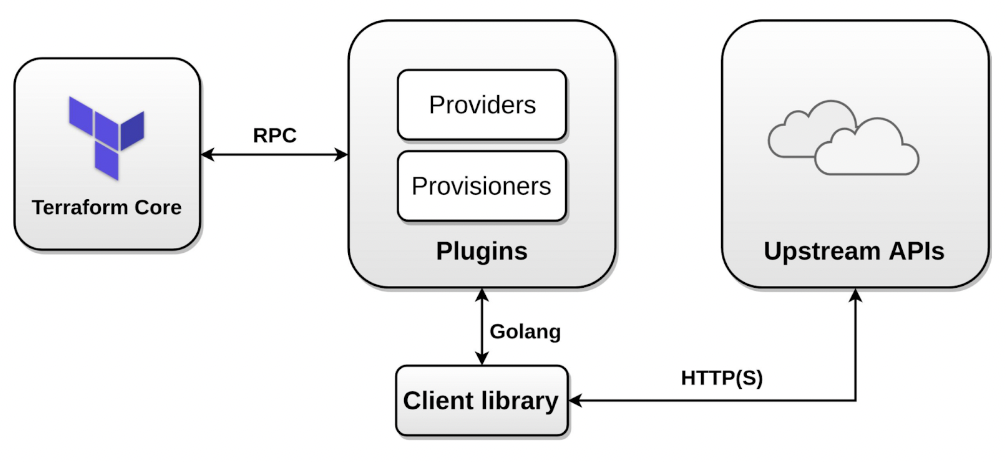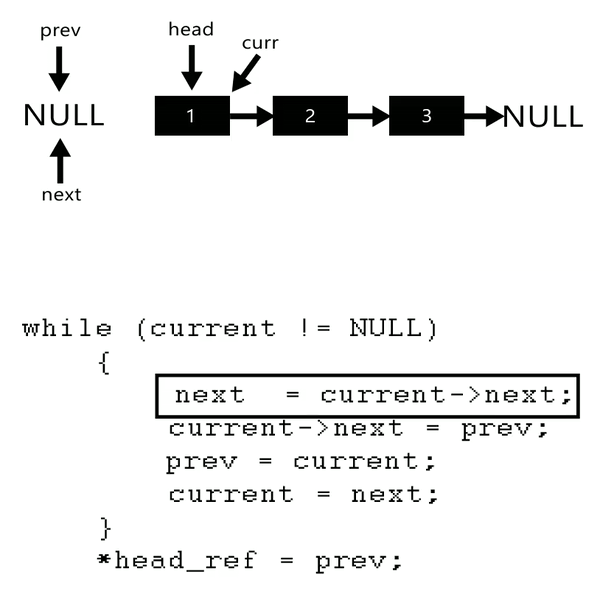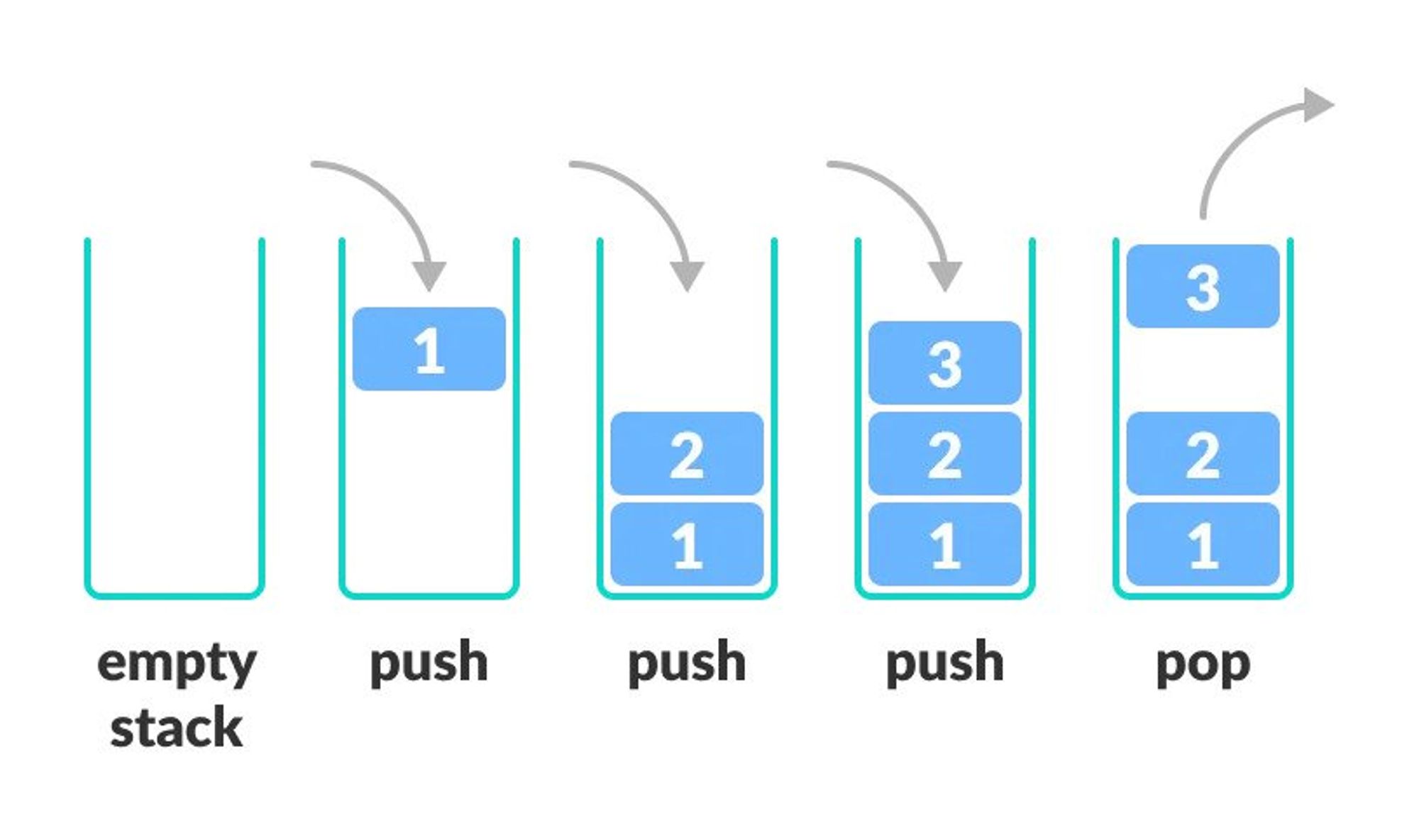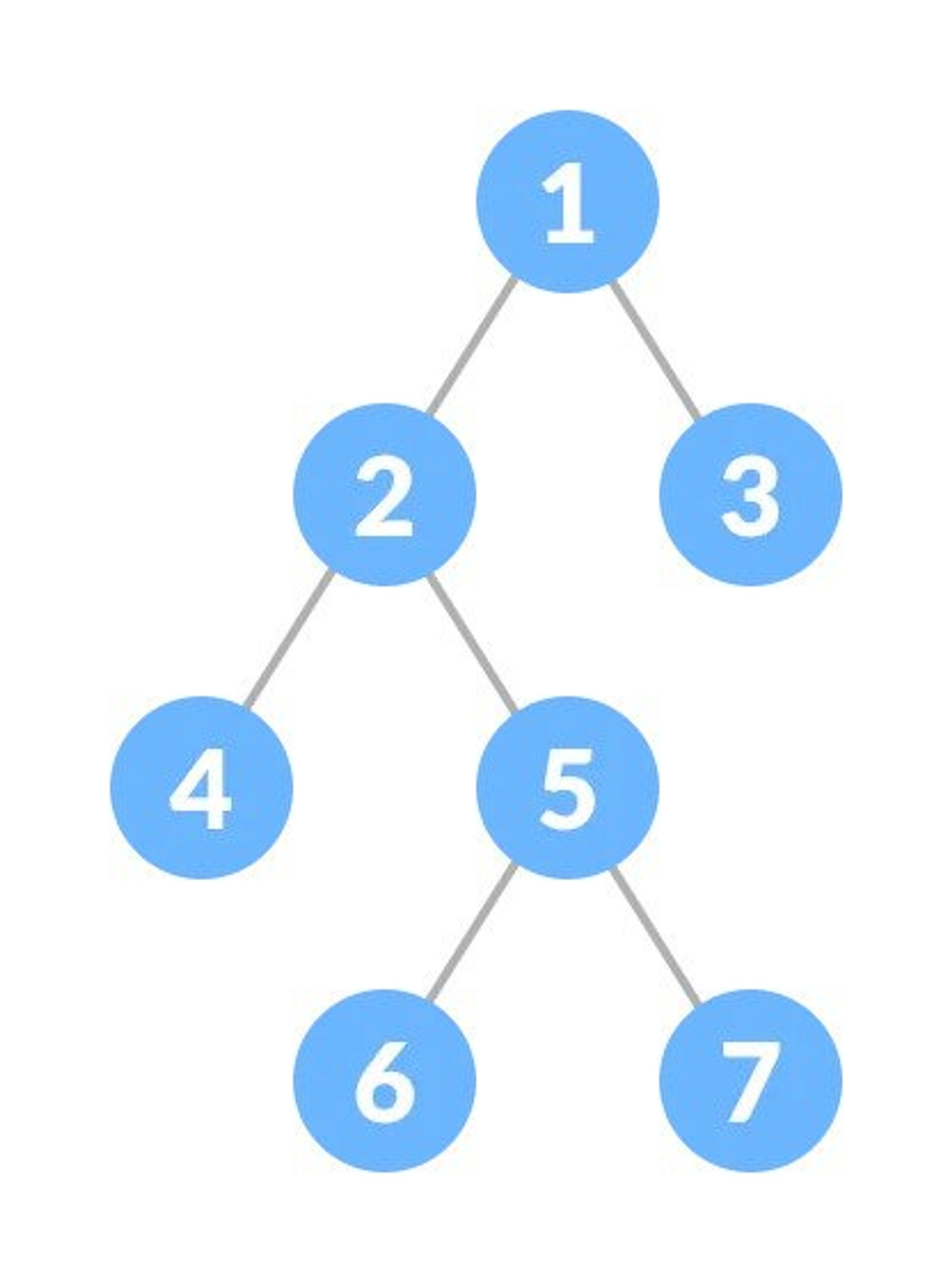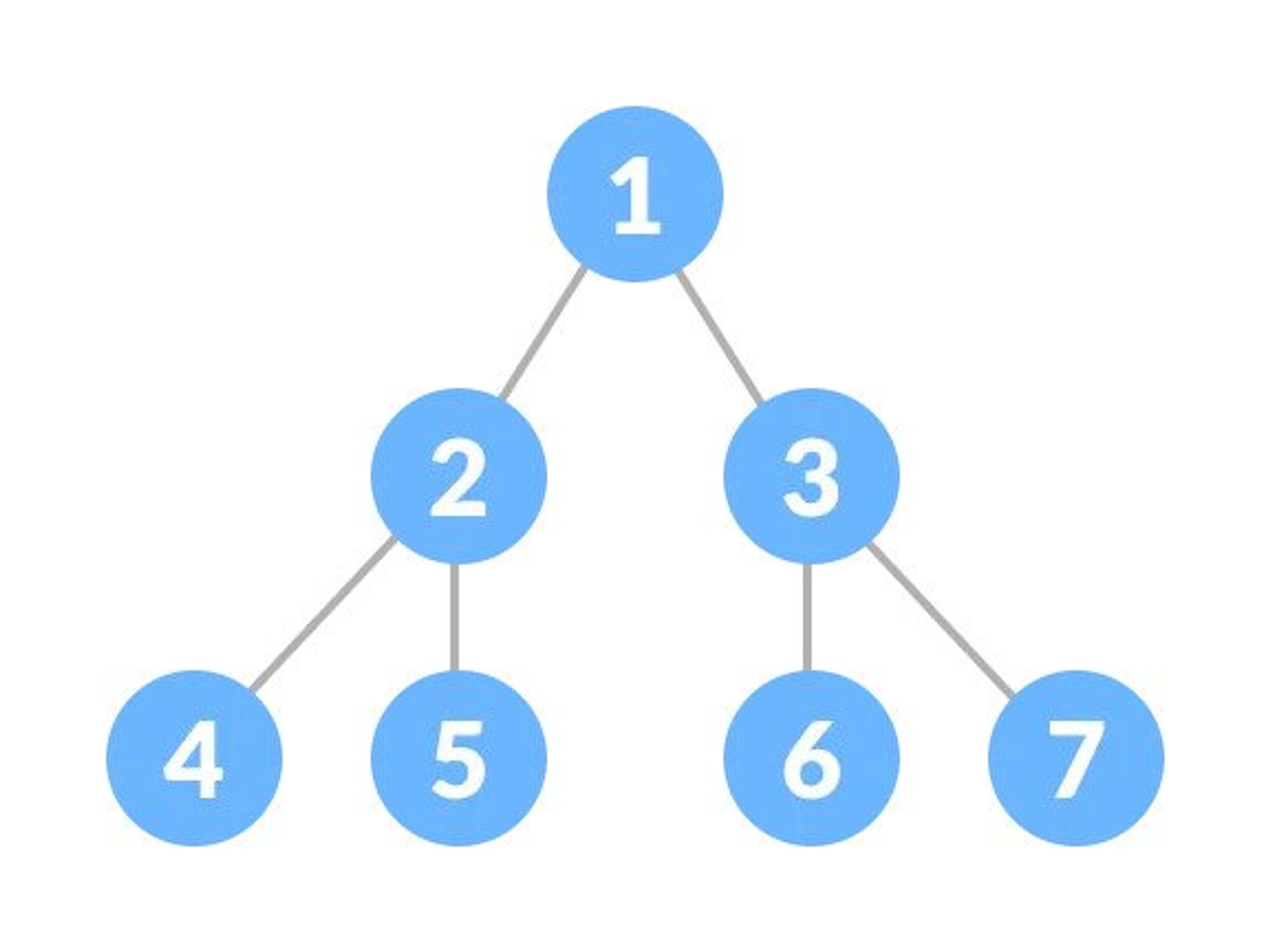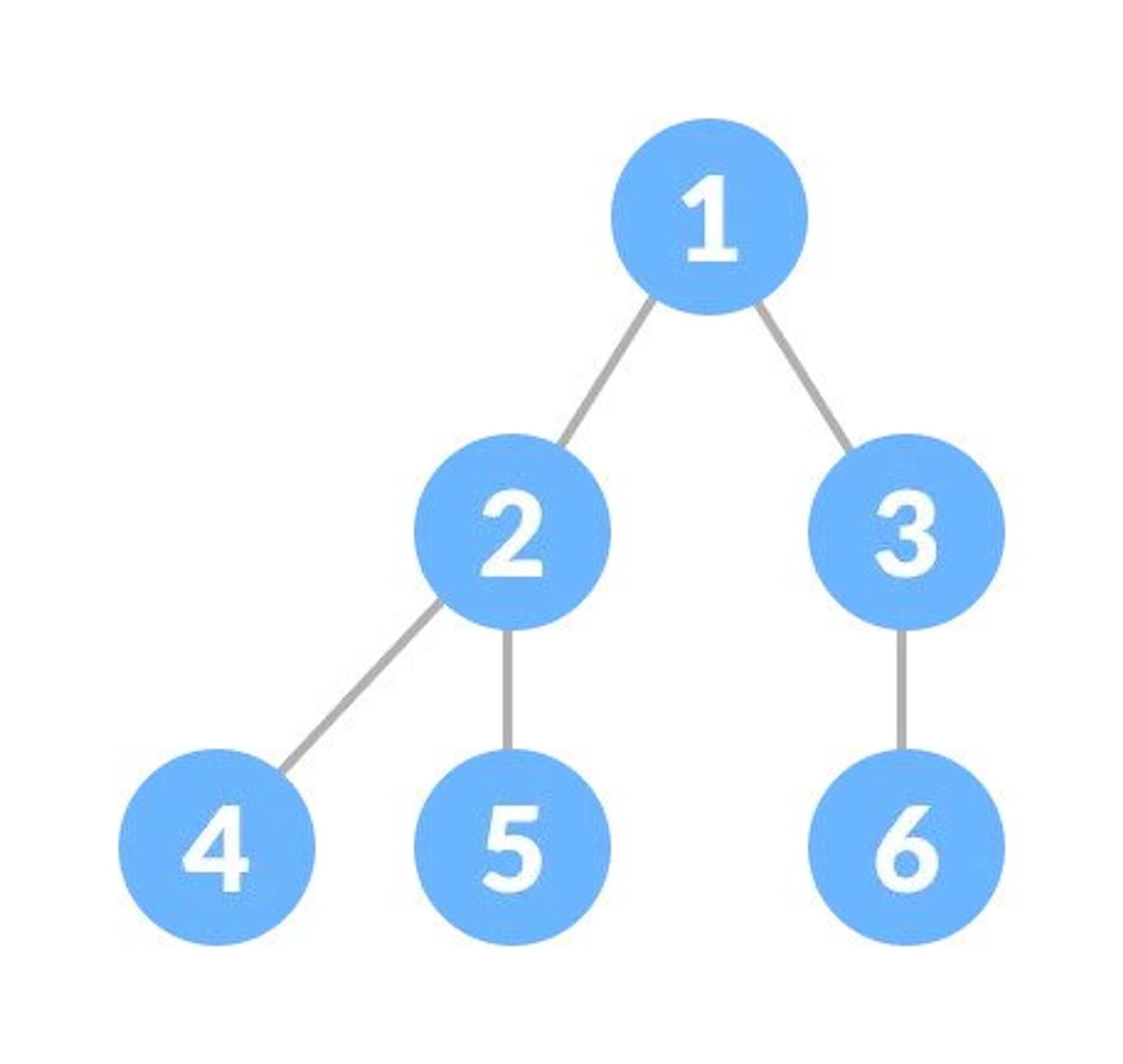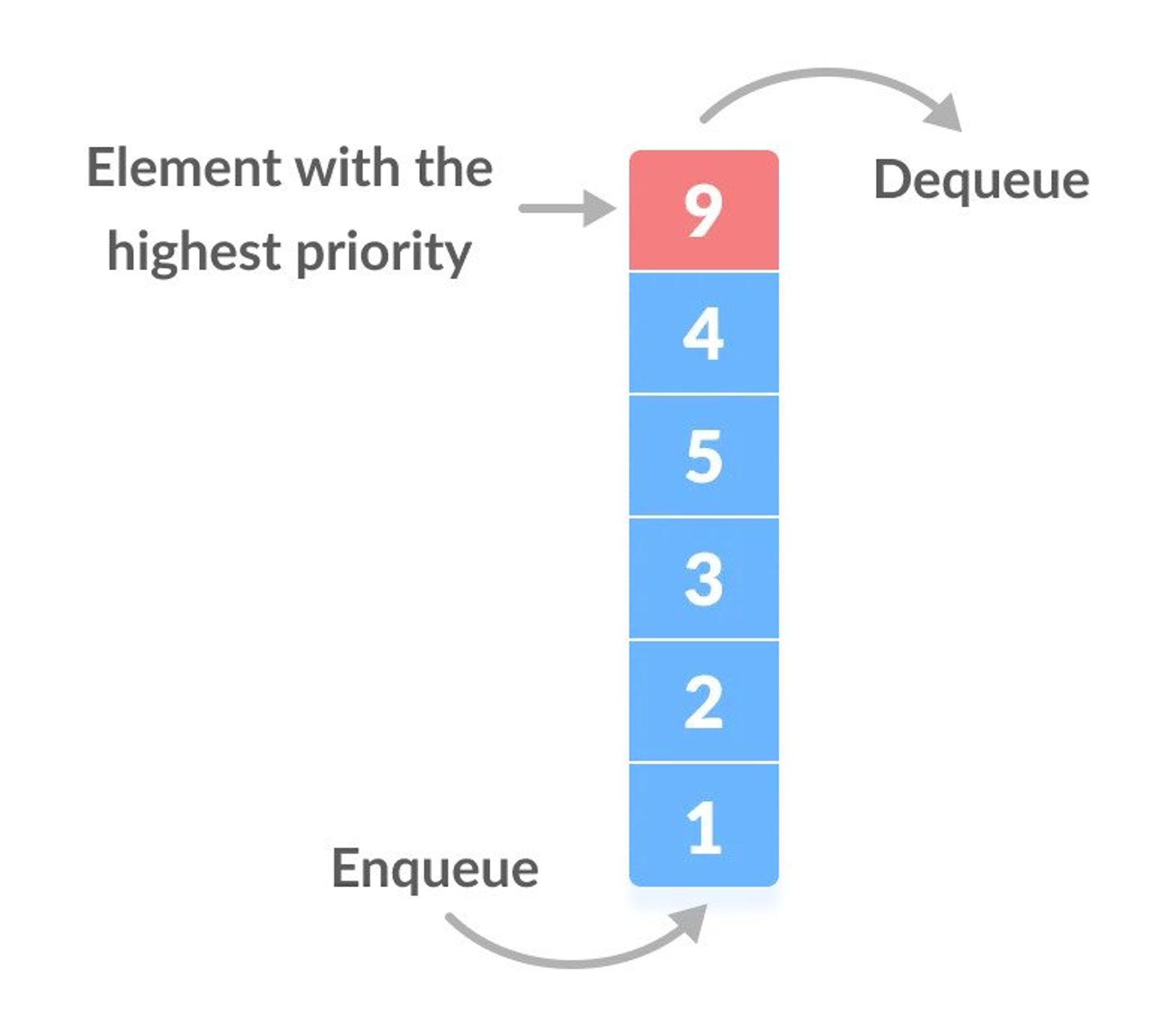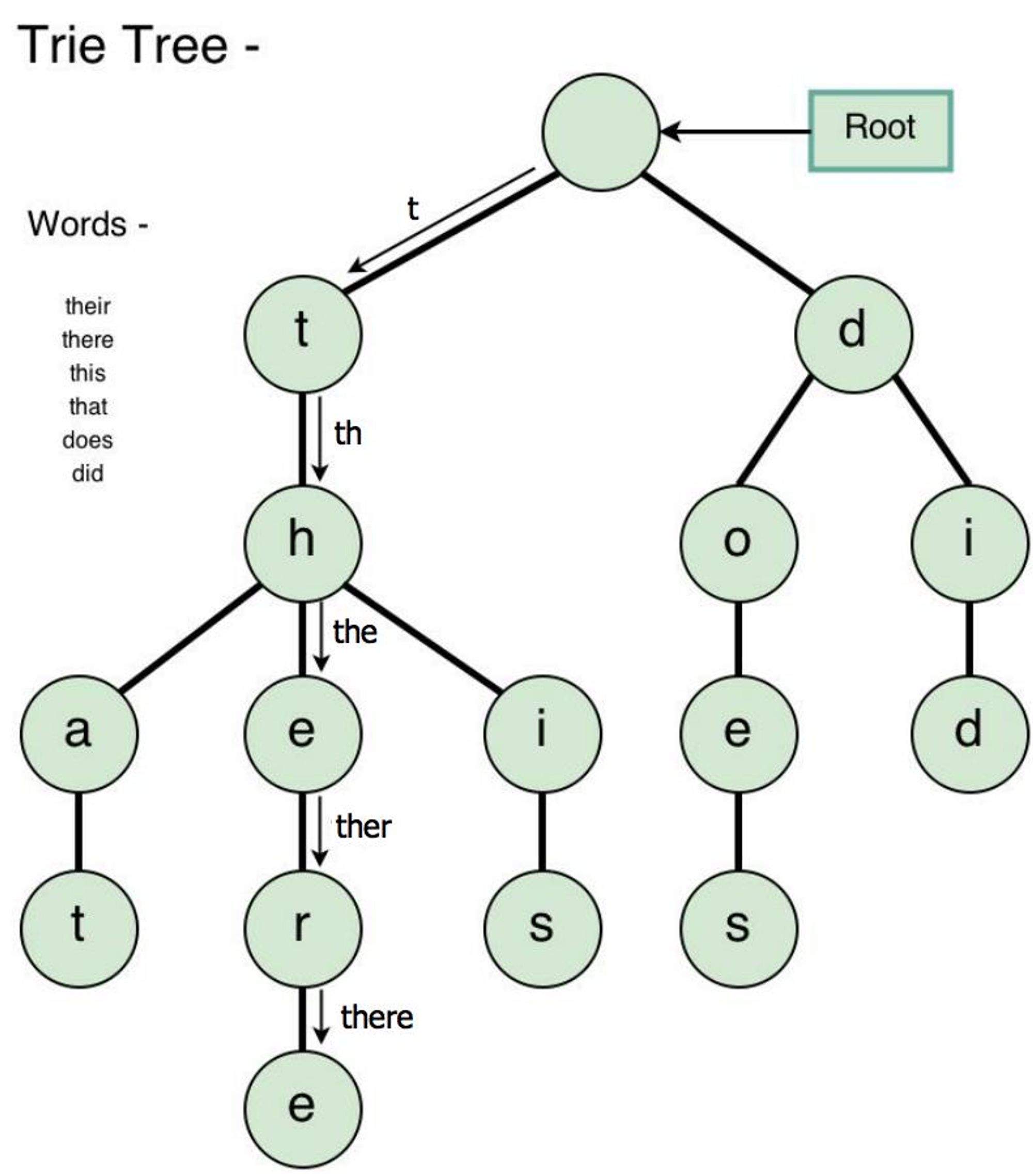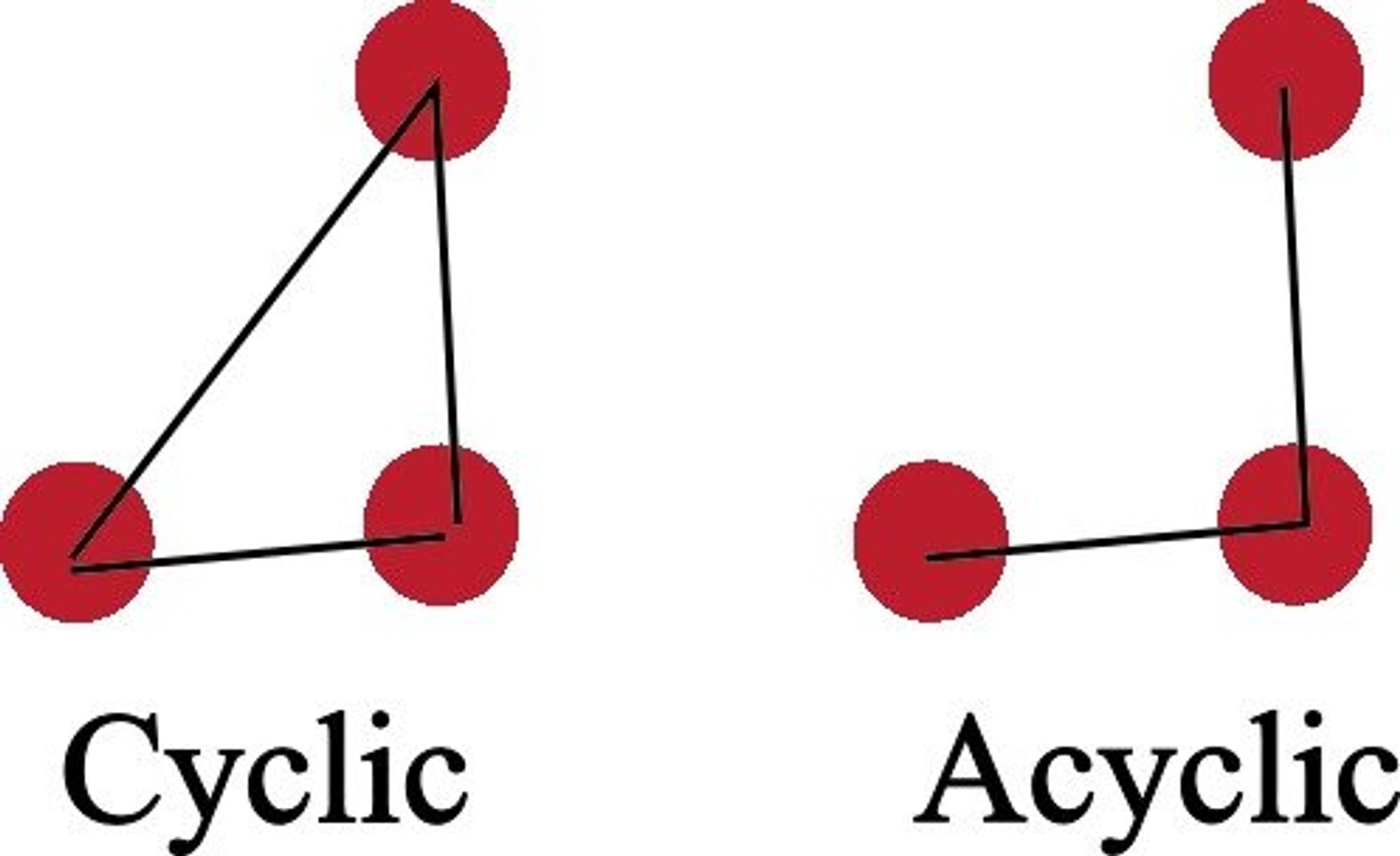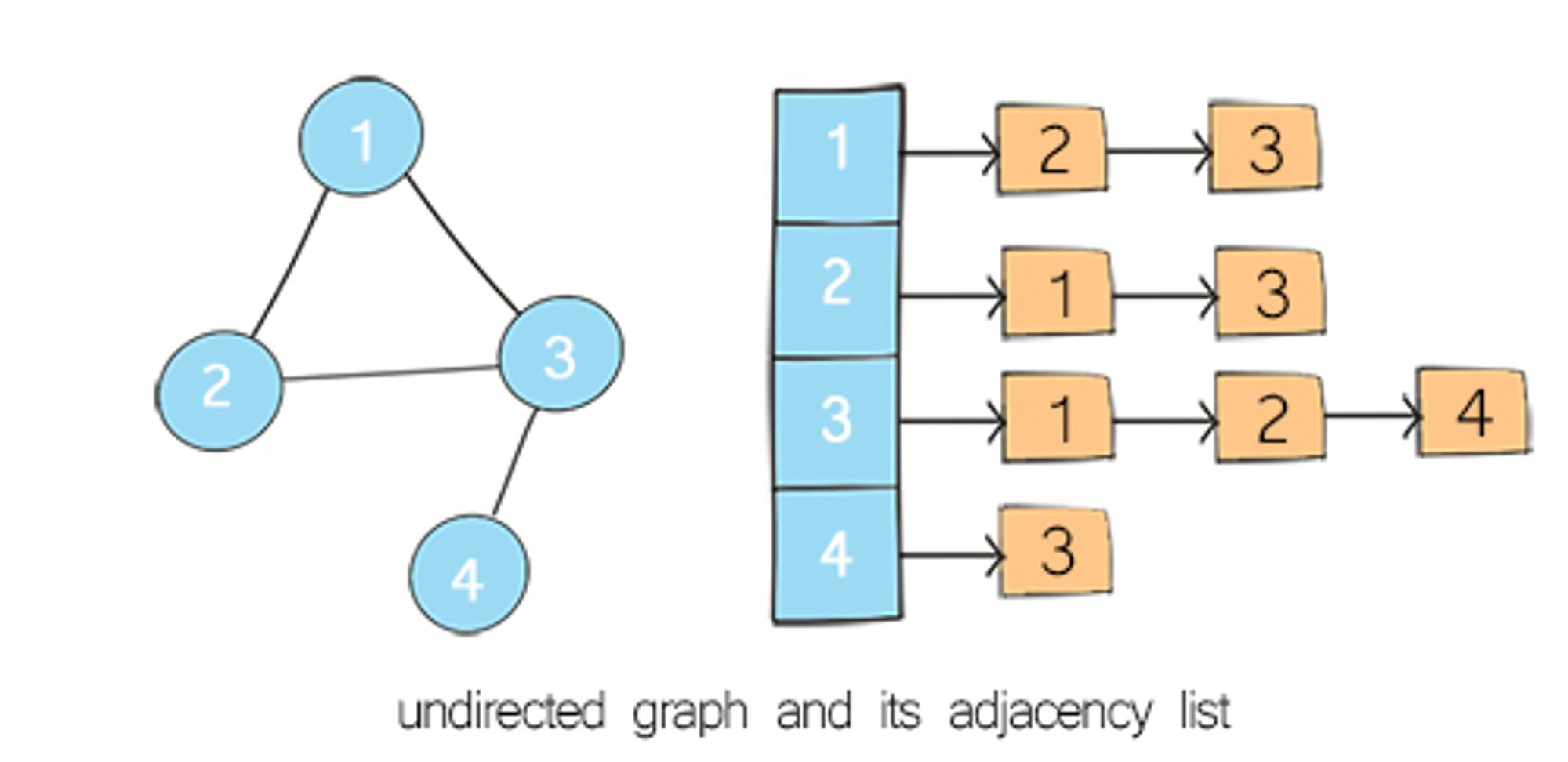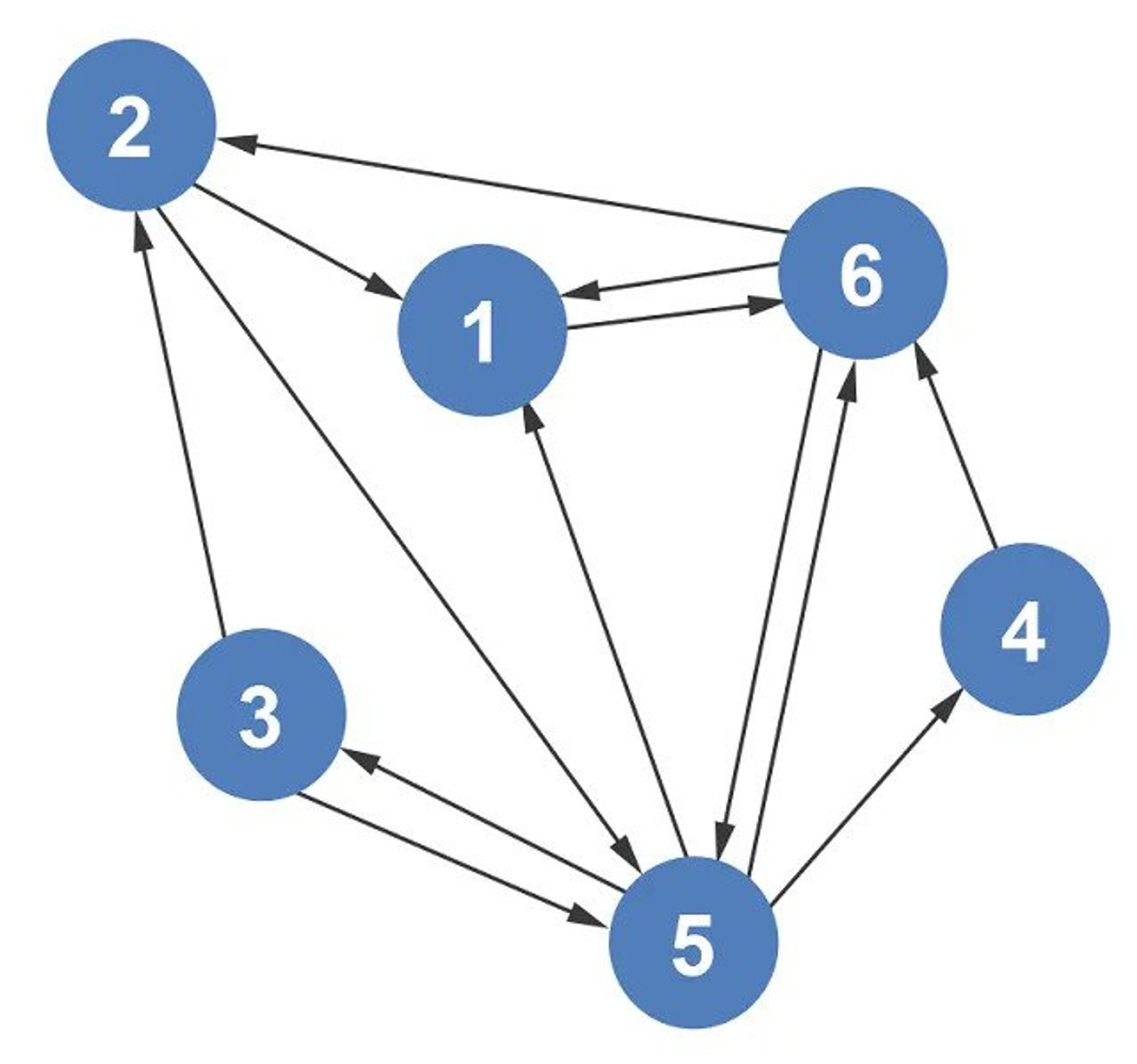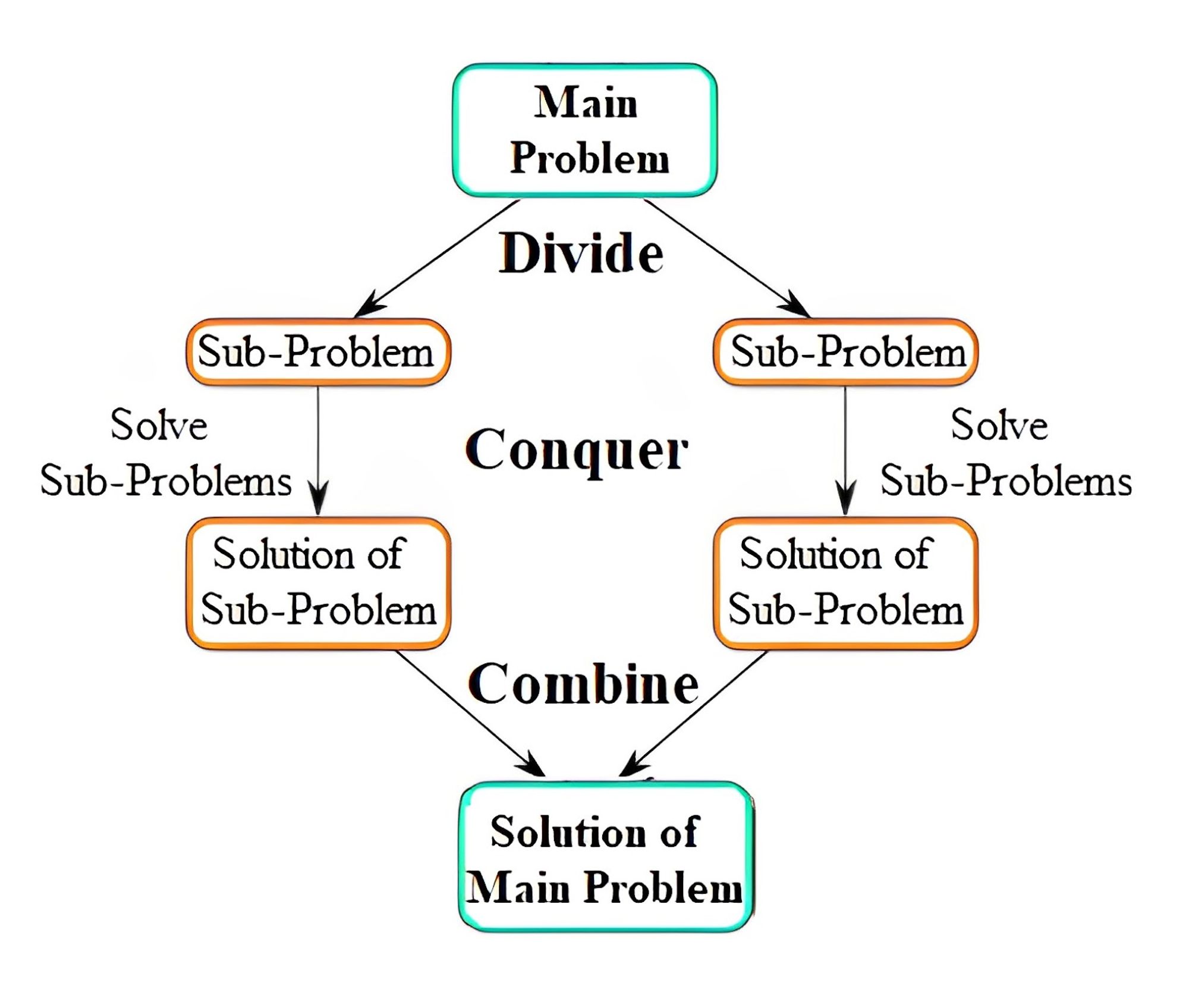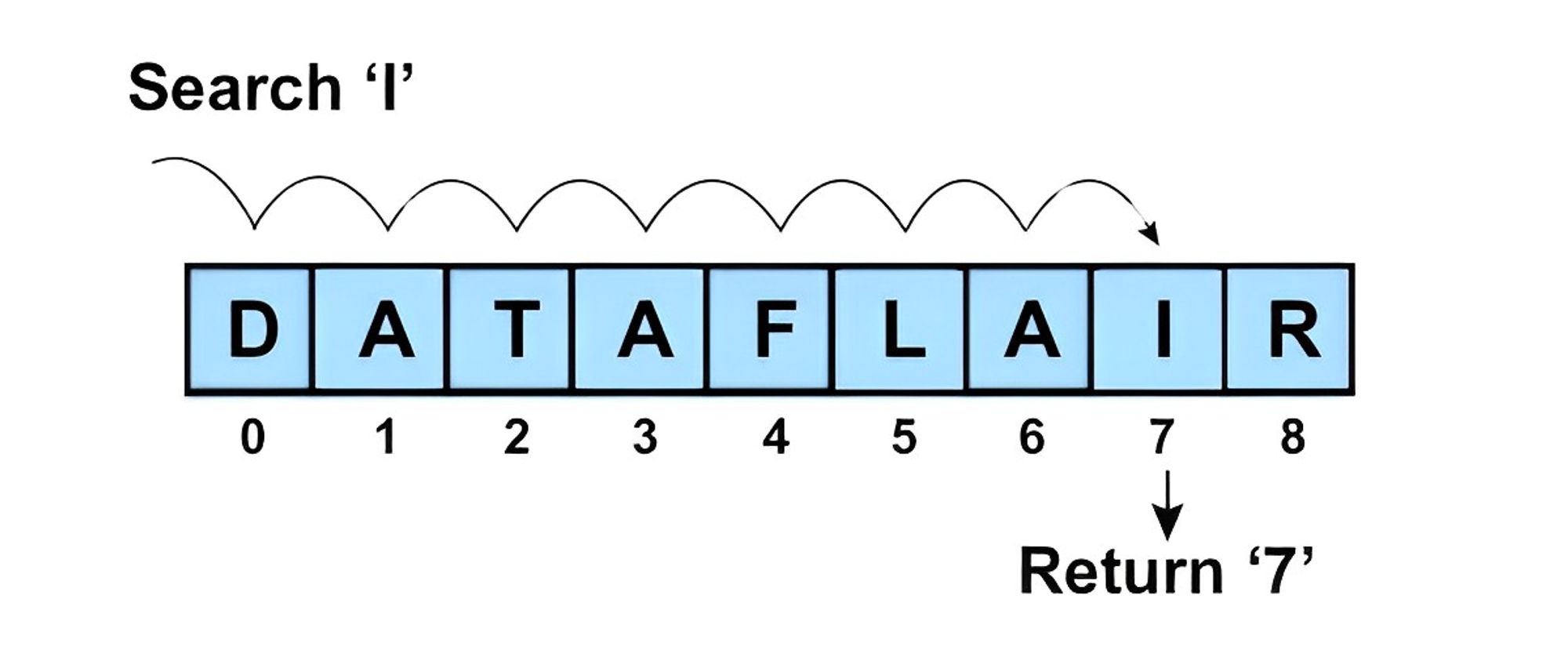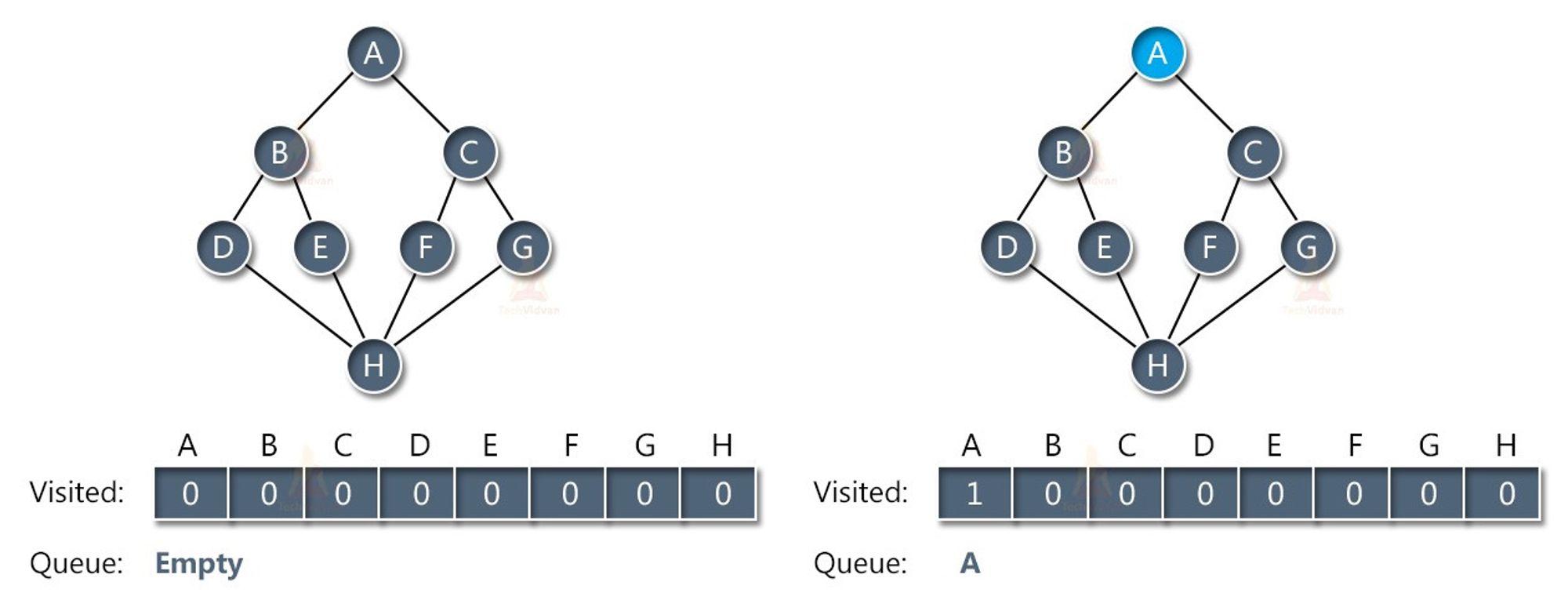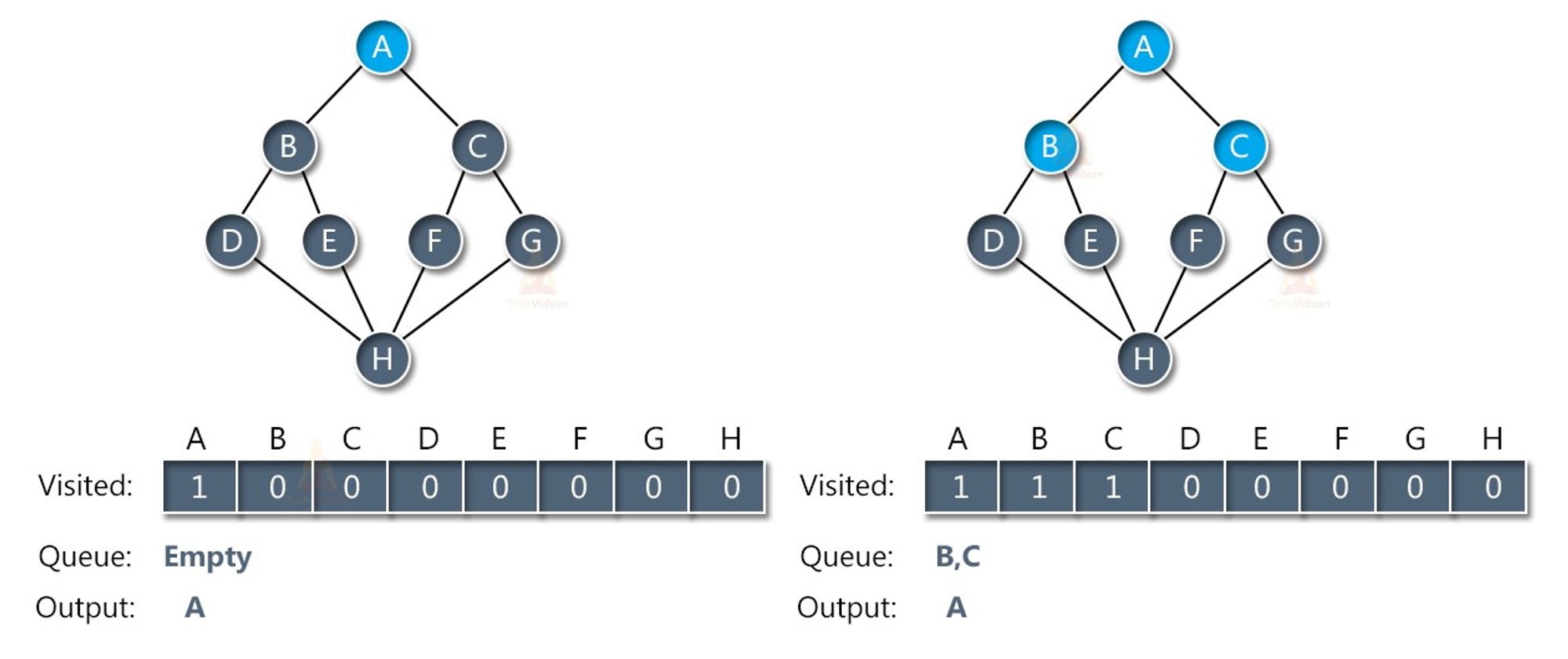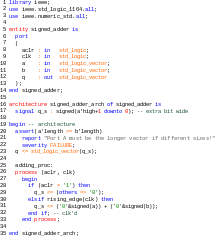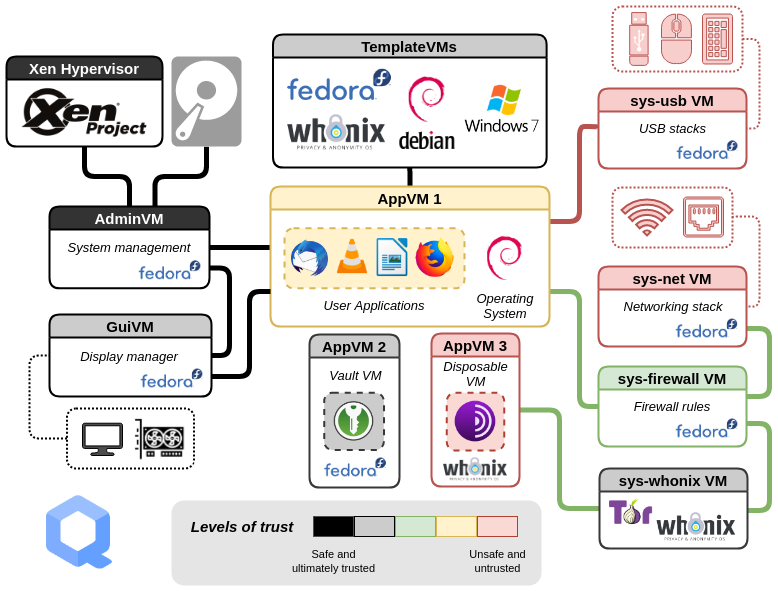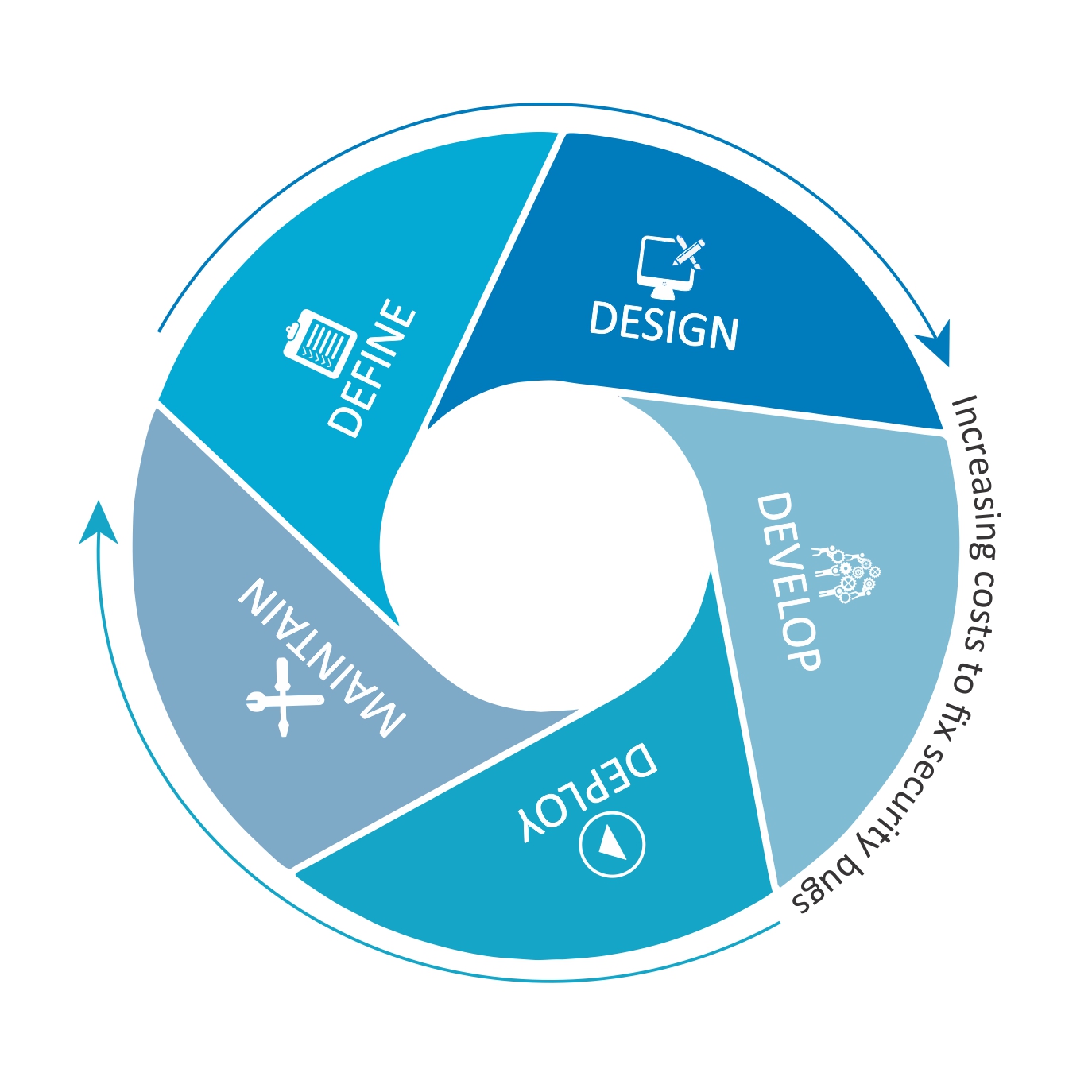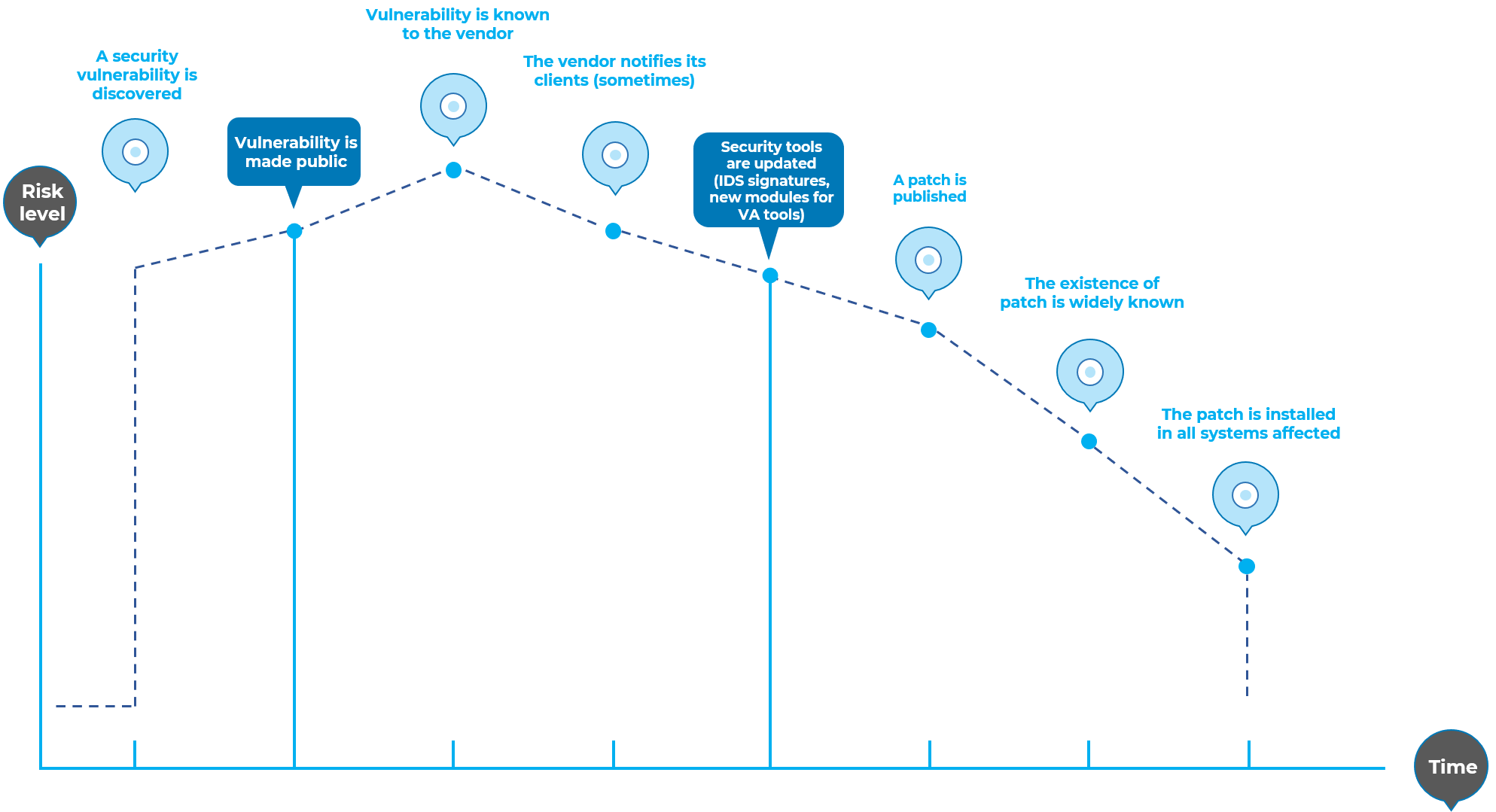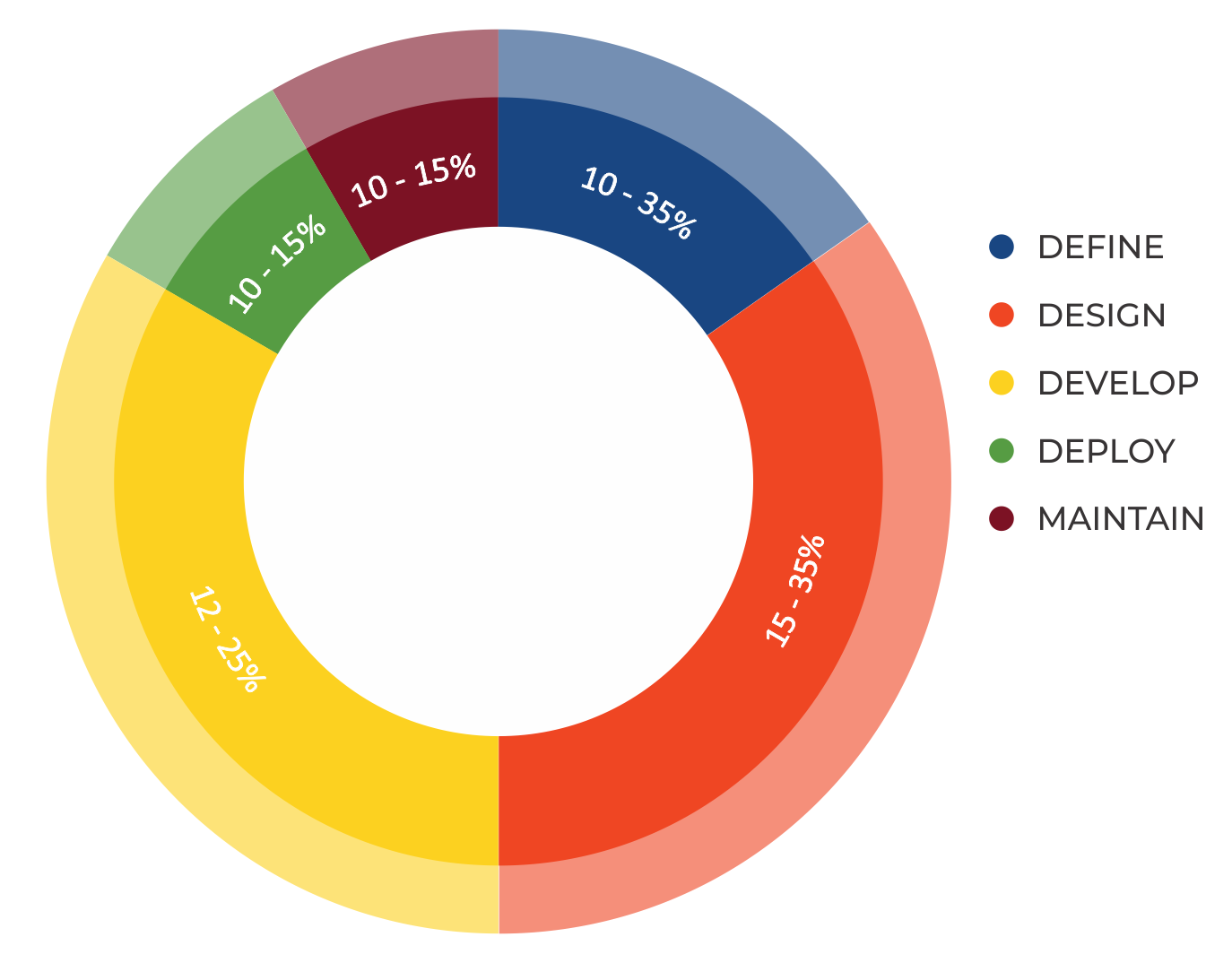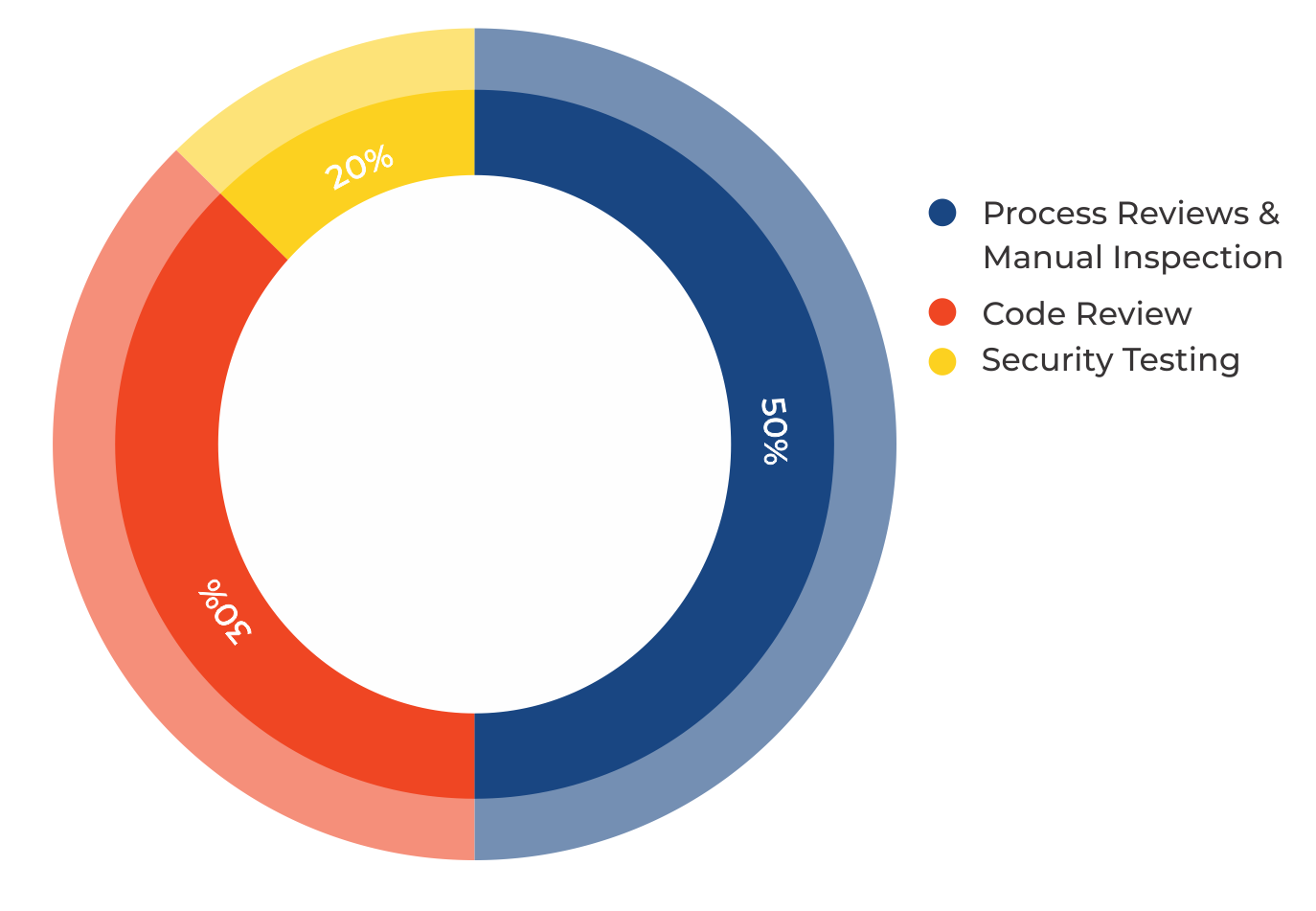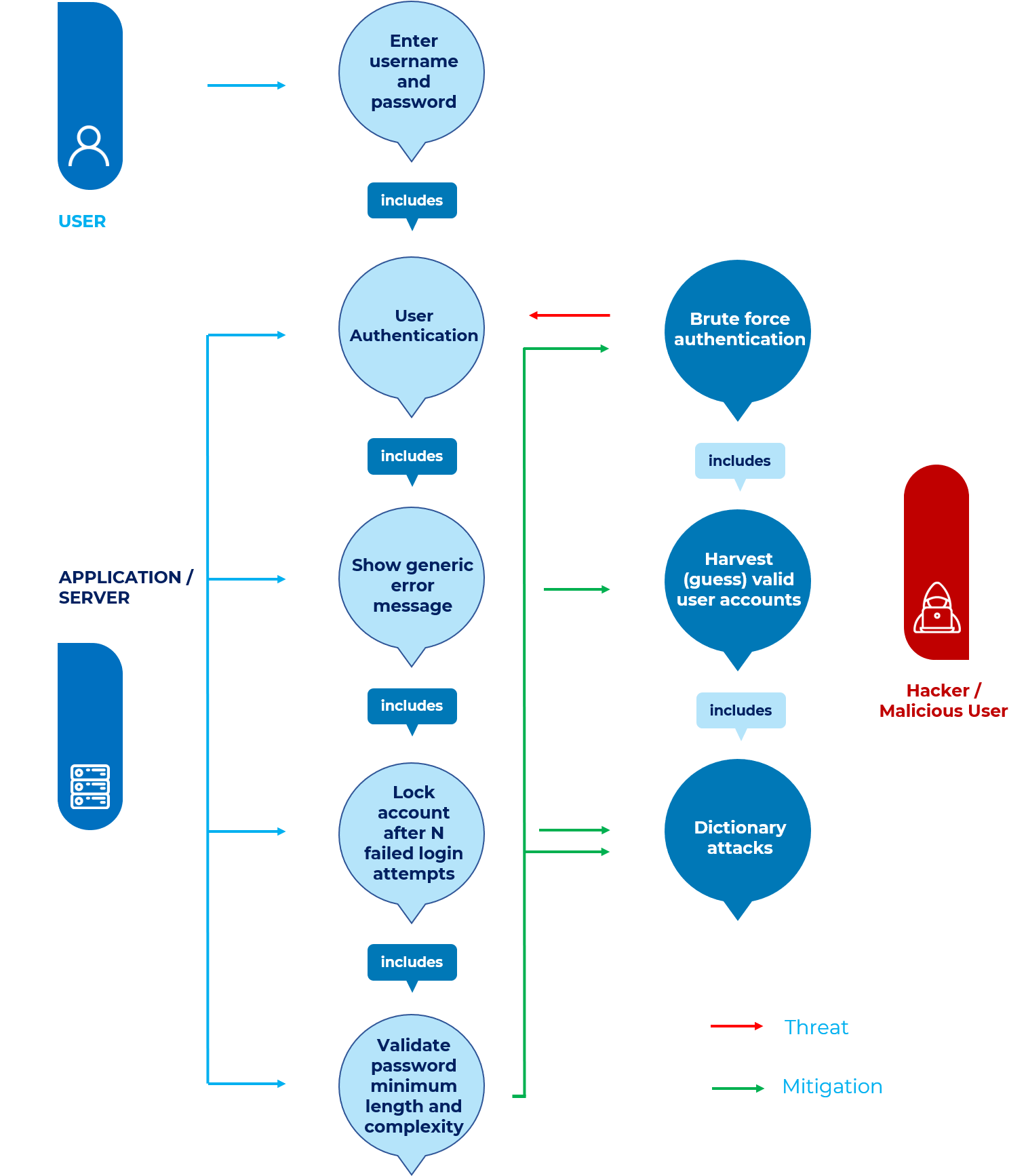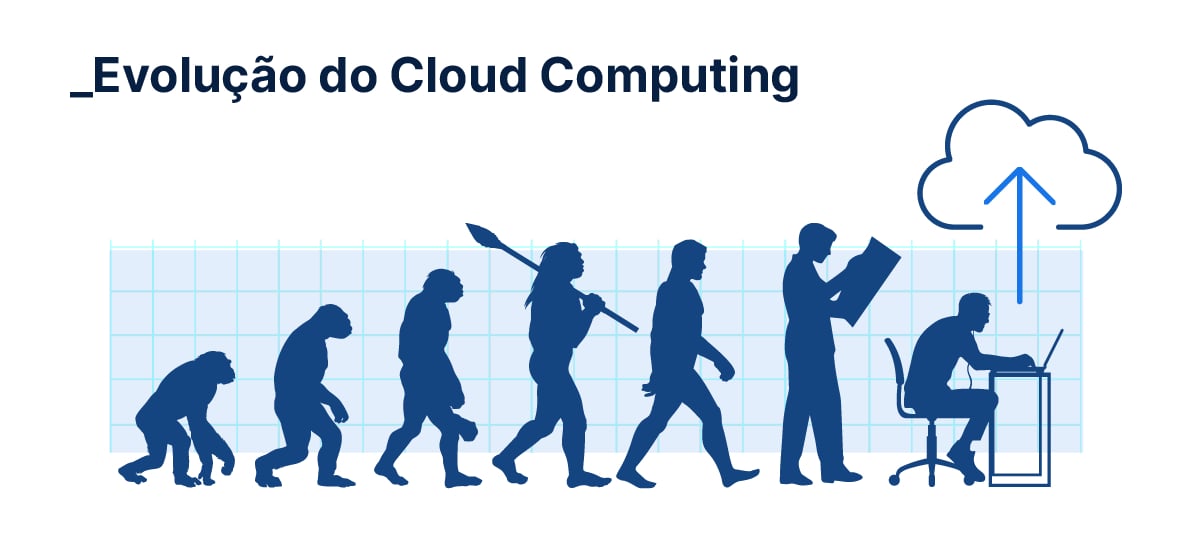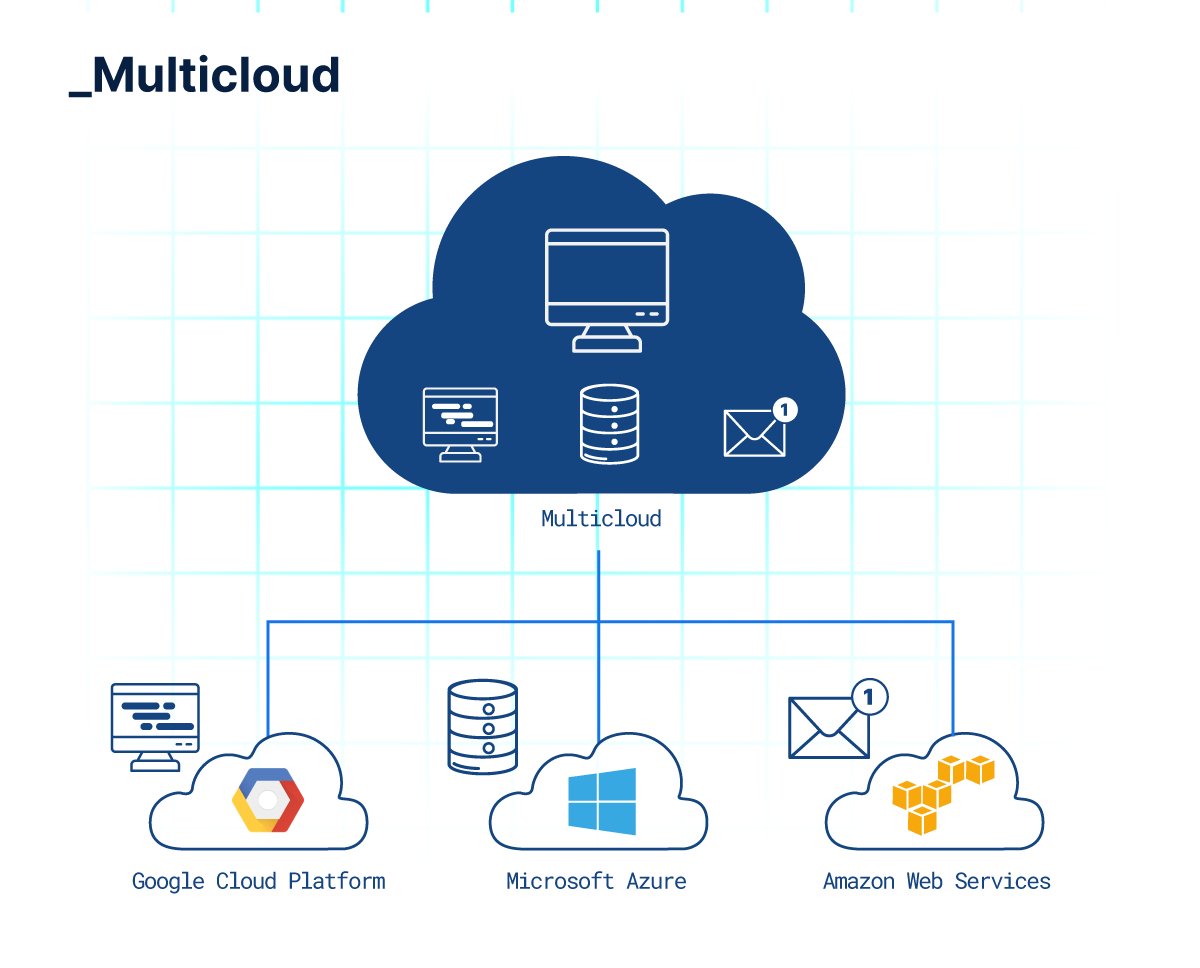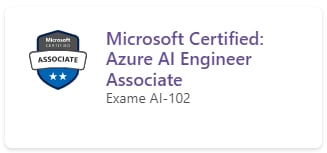REDES DE COMPUTADORES I
Professor: Luiz Carlos Pessoa Albini
Sumário:
Modelos de Referência 5
Modelo de Referência OSI 5
Modelo de Referência TCP/IP 7
Topologias 9
Comunicação Serial X Comunicação Paralela 11
Síncrono X Assíncrona 11
Equipamentos 13
Analógica 14
Ondas 14
Transmissão de rádio 15
Transmissão de micro-ondas 16
Transmissão em Infravermelho 16
Transmissão via luz 17
Satélites de comunicação 17
Modulação 18
GFSK 18
DSSS 19
Transmissão em banda Passante 19
Duplexação e Multiplexação 22
Multiplexação 22
Duplexação + Multiplexação 25
Codificação Digital 27
Taxa de Sinalização X Taxa de TX 27
Enlace 29
MAC 29
Aloha 30
Aloha e Aloha Discreta 30
CSMA 30
CSMA-CD 31
CSMA-CA 31
Passagem de bastão 32
LLC 32
Enquadramento 32
Sequencialização 34
Controle de Fluxo 36
Para-e-Espera 36
Janelas Deslizantes 37
Detecção de Erros 37
Teste de Paridade 37
Paridade Horizontal 37
Paridade Vertical 38
Checksum 39
CRC 40
Protocolo Kermit 42
Códigos Corretores de Erro 45
Códigos de Hamming 46
Códigos de Reed-Solomon 46
Compactação 48
LZW 48
Pseudocódigo 49
Pseudocódigo para descompactação 49
Ethernet 51
Redes Ethernet de 10 MBPS 51
Barramento 52
Estrela 52
Switches 53
Full-Duplex 54
Redes Ethernet de 100 MBPS 54
Redes Ethernet de 1 GBPS 55
Redes Ethernet de 10 GBPS 55
Hardware 56
Repetidores 56
Hubs 56
Bridges e Switches 57
Meios de transmissão guiados 57
Cabos de Pares Trançado 57
Cabo Coaxial 59
Fibra óticas 59
Telefonia 60
DSL e Cable Modem 62
A tecnologia DSL 62
Componentes da DSL 62
Funcionamento da DSL 64
Tipos de DSL 64
A tecnologia Cable Modem 67
Componentes do Cable Modem 68
Telefonia Celular 72
Primeira Geração - 1G 72
Segunda Geração - 2G 74
Segunda Geração e Meia - 2, 5G 76
Terceira Geração - 3G 76
Quarta Geração - 4G 78
Gerenciamento de Chamadas 79
FDDI / TOKEN RI-Y 80
FDDI 80
Token Ring 82
FDDI versus Token Ring 85
Redes sem fio 802.11 86
Protocolos usados na subcamada MAC 86
Fragmentação 88
Formato das Mensagens 88
Bluetooth + WiMax 90
Bluetooth 90
Piconets e scatternets 91
WiMax 92
Modelos de Referência
Existem duas importantes arquiteturas de rede: o modelo de referência OSI (Open Systems Interconnection) e o modelo TCP/IP. O modelo OSI foi desenvolvido pela ISO (International Organization for Standardization)
e possui 7 camadas, cada camada possui um subconjunto de funções e
depende da camada inferior para realizar funções mais primitivas e
ocultar os detalhes destas funções, e oferece serviços a próxima camada
mais alta.
A
ISO definiu um conjunto de camadas e os serviços realizados por cada
camada, com o objetivo de ter camadas o suficiente para cada camada ser
pequena e não ter tantas camadas a ponto de sobrecarregar o sistema. Os
projetistas desse modelo consideraram que esse modelo e os protocolos
desenvolvidos dentro do modelo dominaria o mercado, mas isso não
aconteceu, em vez disso, a arquitetura TCP/IP dominou o mercado. Existem
vários motivos para isso, por exemplo: na época, os principais
protocolos TCP/IP estavam bem testados enquanto que os protocolos OSI
estavam no estágio de desenvolvimento, e somente o TCP/IP estava pronto
para interoperar entre as redes. Além disso, o modelo OSI é complexo, e
possui 7 camadas, enquanto o modelo TCP/IP realiza as mesmas funções com
duas camadas a menos. Os subcapítulos abaixo abrangerão cada modelo,
explicando suas camadas separadamente.
Modelo de Referência OSI
Também
conhecido como Modelo de Referência ISO OSI (figura 1), este modelo se
baseia em uma proposta desenvolvida pela ISO para a padronização
internacional dos protocolos, e possui 7 camadas que são:
Camada Física: é responsável pela estruturação de hardware, ou seja, a transmissão de bits por um canal de comunicação. Essa transmissão deve garantir que, quando um lado enviar 1 bit, o outro lado deve realmente receber 1 bit, e não o bit 0.
Camada de Enlace: é responsável pela comunicação entre duas máquinas, ou seja, transforma um canal de transmissão normal em uma linha livre de erros de transmissão, para isso, essa camada mascara os erros reais, de modo que a camada de rede não os veja, isto é possível usando o quadro de dados, ou seja, o transmissor divide os dados de entrada em quadro de dados e transmite os quadros sequencialmente. Se esse serviço for confiável, o receptor confirmará o recebimento através do quadro de confirmação. Um quadro consiste em um conjunto de bits agrupados, que transportam informações de usuário e de controle de enlace.
Camada de Rede: é responsável pelo roteamento e endereçamento (IP), para isso, esta camada determina como os pacotes são roteados da origem até o destino. Estas rotas podem ser divididas em três formas:
tabelas estáticas, que raramente são alteradas, ou podem ser atualizadas de forma automática, evitando componentes defeituosos.
determinadas no início de cada conversação, por exemplo, uma sessão de terminal em uma máquina remota.
dinâmicas, sendo determinadas para cada pacote, refletindo a carga atual da rede.
Esta
camada tem como função controlar o congestionamento de pacotes. A
qualidade do serviço fornecido – atraso, tempo em trânsito,
instabilidade, entre outros – também pertence a camada de rede. Outra
função desta camada, é trafegar pacotes de uma rede para outra, onde o
endereçamento das redes podem ser diferentes, ou a rede pode não receber
o pacote por este muito grande, os protocolos podem ser diferentes. A
camada de rede deve permitir que redes heterogêneas sejam
interconectadas.
Camada de Transporte: é responsável pela comunicação entre origem e destino, para isso, essa camada aceita dados da camada acima dela, e se for preciso, divide em unidades menores e repassa essas unidades á camada abaixo dela (camada de rede), garantindo que todos os fragmentos chegarão corretamente a outra extremidade. Todas essas etapas devem ser feitas de forma eficiente e de forma que as demais camadas superiores não percebam as mudanças de tecnologia de hardware. Esta camada também é responsável por determinar que tipo de serviço (determinado quando a conexão é estabelecida) deve ser fornecido a camada de sessão e aos usuários da rede, entre eles, são:
canal ponto a ponto – é o mais popular, livre de erros e entrega as mensagens ou bytes na ordem em que foram enviados.
mensagens isoladas – não possui nenhuma garantia relativa a ordem de entrega e à propagação da mensagem para vários destinos.
Camada de Sessão: permite estabelecer sessões de comunicação entre os usuários de diferentes máquinas. Esta sessão oferece diversos serviços, como por exemplo:
controle de diálogo – mantêm o controle de quem deve transmitir em cada momento.
gerenciamento de tokens – impede que duas partes tentem executar a mesma operação crítica ao mesmo tempo.
sincronização – realiza a verificação periódica de longas transmissões para permitir que elas continuem a partir do ponto em que estavam ao ocorrer uma falha e a subsequente recuperação.
Camada de Apresentação: é responsável pela uniformização das mensagens, ou seja, a camada de apresentação está relacionada a sintaxe e à semântica das informações transmitidas. Esta camada gerencia as estruturas de dados abstratas, essas estruturas permitem a comunicação entre os computadores com diferentes representações internas dos dados.
Camada de Aplicação: é responsável pela utilização das mensagens, esta camada possui vários protocolos necessários para o usuário. O protocolo mais usado é o HTTP (HyperText Transfer Protocol), quando digitado um endereço de site no navegador, o navegador, usando o HTTP, envia o nome da página desejada ao servidor que hospeda a página, o servidor então transmite a página ao navegador. Além deste protocolo, outros são usados para transferências de arquivos, correio eletrônico e transmissão de notícias pela rede.
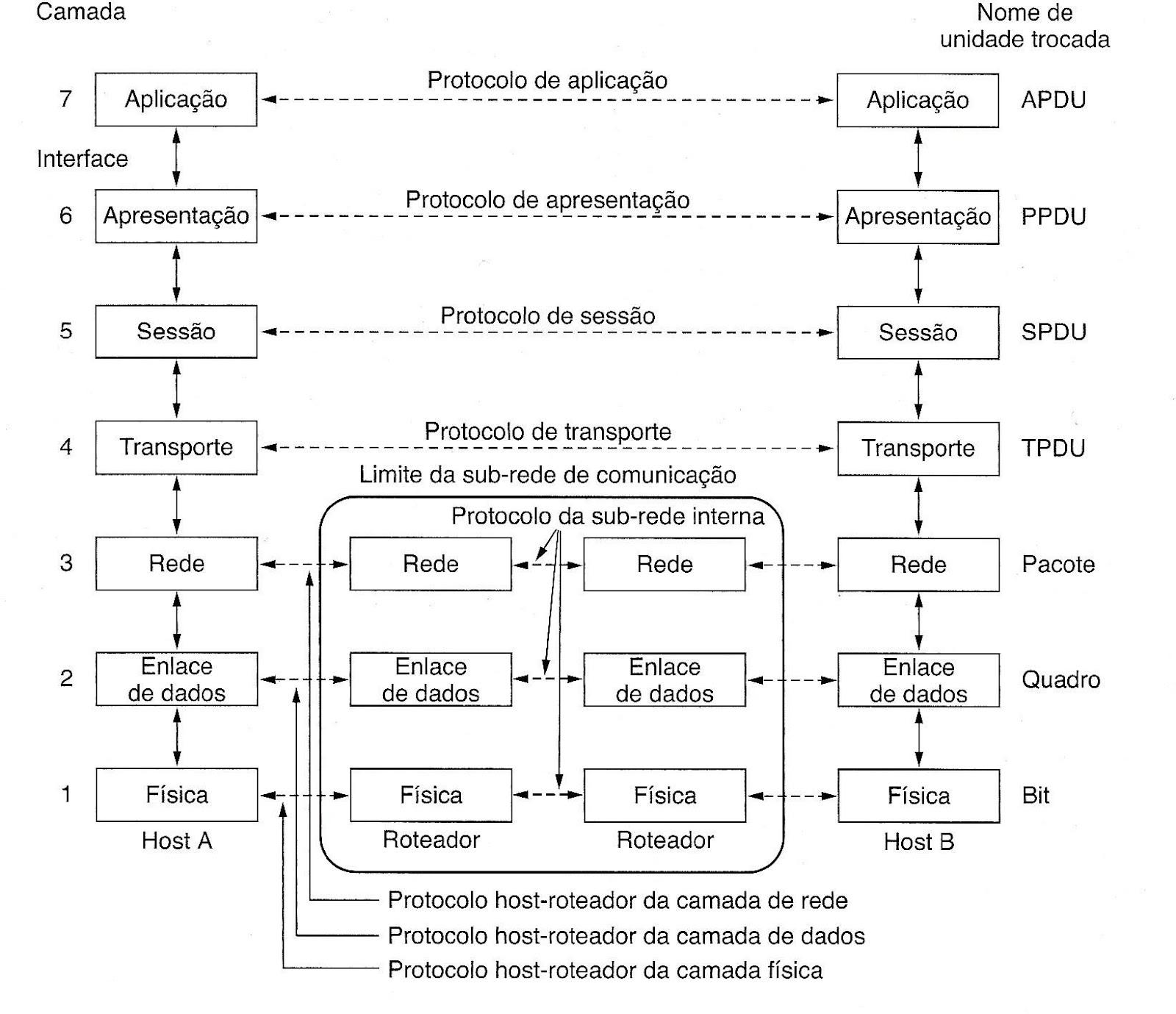
Figura 1: O modelo de referência OSI.
Modelo de Referência TCP/IP
A partir de um projeto do Departamento de Defesa dos Estados Unidos (DARP) chamado ARPANET, financiado pela Advanced Research Projects Agency
(ARPA), foi desenvolvido um novo modelo baseado no modelo de referência
OSI, este novo modelo foi denominado Modelo TCP/IP, composto por cinco
camadas, que são:
Camada Física: essa camada especifica as características do meio de transmissão, da natureza dos sinais, da taxa de dados e de questões relacionadas.
Camada de Enlace: é responsável pela troca de dados entre um sistema final e a rede a qual está conectado. Para isso, o computador de envio precisa fornecer à rede o endereço do computador de destino, de tal forma que, a rede possa rotear os dados para o destino apropriado. O computador de envio pode requerer serviços como prioridade, que podem ser fornecidos pela rede. O software utilizado nesta camada depende do tipo de rede a ser utilizado.
Camada de Rede: Também conhecida como IP ou inter-rede, esta camada tem como função o
roteamento
entre as várias redes. Um roteador tem a função de repassar dados de
uma rede para a outra rede em uma rota da origem ao destino.
Camada de Transporte: Também conhecida como TCP, esta camada absorveu a camada de Sessão do modelo OSI, esta camada garante que todos os dados chegam no destino na mesma ordem em que foram enviados. O protocolo TCP (Transmission Control Protocol) é o mais utilizado nesta camada.
Camada de Aplicação: Esta camada absorveu a camada de apresentação do modelo OSI, e possui a lógica necessária para dar suporte a diversas aplicações do usuário.
Topologias
Existem
várias formas de interconectar os componentes de uma rede de
comunicação de dados, essas várias formas são denominadas de topologias,
e os computadores da rede são denominados de nós ou nodos. As
topologias são:
Ponto-a-ponto: chamada de ligação ponto-a-ponto, é a mais simples das topologias, é formada por dois computadores conectados entre si por um único meio.
Estrela: é formada por vários computadores conectados entre si, o computador do meio é o nó central e é ligado com os demais através de linha ponto-a-ponto.
Anel: é formada por vários computadores, interligados por linhas ponto-a-ponto, e cada nó deve passar adiante as mensagens endereçadas aos demais.
Malha: são usadas ligações ponto-a-ponto para interconectar os nós, esta topologia é mais utilizada para interconectar roteadores ou gateways, para atribuir redundância a links de internet ou de serviços como VPNs (Virtual Private Network).
Token Ring: trabalha com o pacote token passing que serve de ticket de autorização (token), que permite a transmissão de dados para a estação que estiver de posse dele. Nos momentos em que as estações não precisam transmitir informações, o token circula pela rede, passando pelos dispositivos. Quando uma estação transmite uma determinada quantidade de informação, essa estação deve o token a estação seguinte, esta é a restrição desta topologia.
Barramento: todos os nós se conectam através de uma barra ou cabo de dados. Quando um nó transmite uma mensagem, todos os demais recebe essa mensagem. Assim, os nós ligados a esse barramento devem cooperar entre si para acessar o meio físico, pois é compartilhado entre todos eles.
Radiodifusão: é usada transmissão de ondas de rádio, ou seja, as mensagens ou pacotes de dados são transmitidos através da atmosfera.
Enlace via satélite: cada nó envia sua mensagem para o satélite, este retransmite para os demais nós.
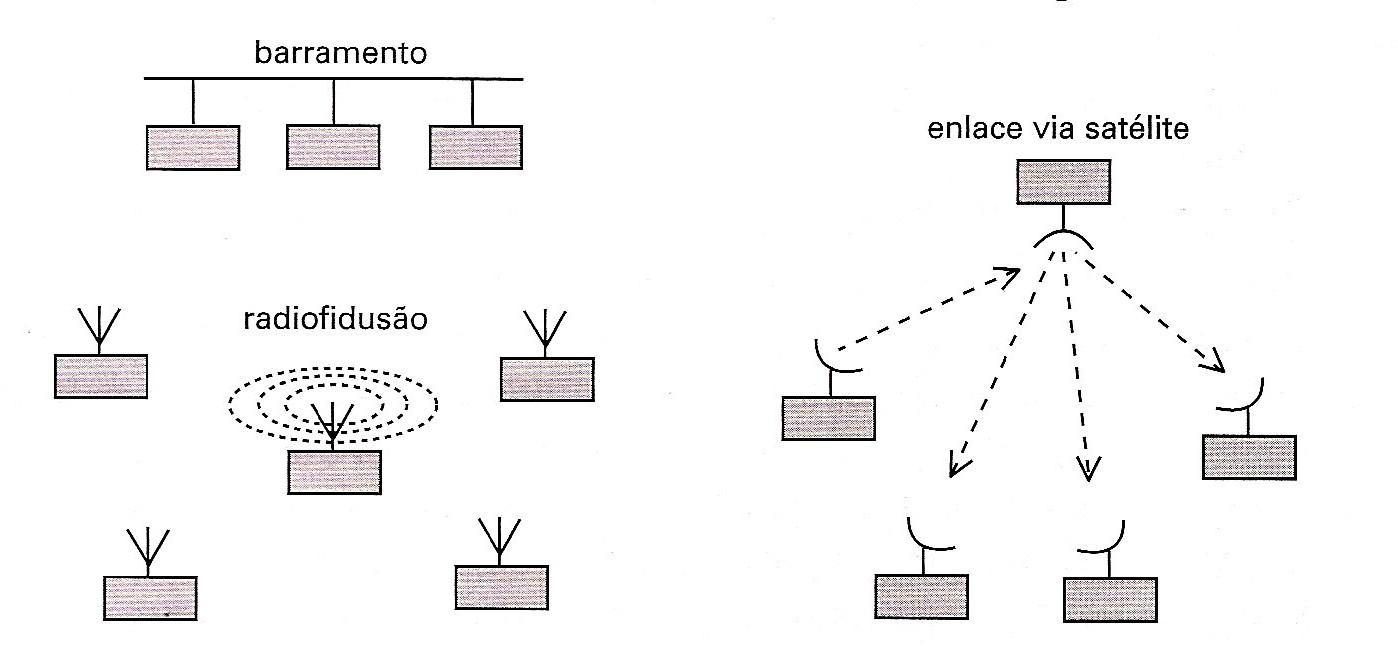
Figura 2: Topologias baseadas em difusão.
A
transmissão é chamada de “guiada” quando um cabo ou barramento é usado
na transmissão de sinais, pois os sinais elétricos permanecem confinados
nos limites físicos do cabo. A transmissão é chamada de “livre” quando a
difusão se dá através do ar ou do vácuo, porque os sinais se propagam
livremente pelo espaço. As topologias ponto-a-ponto, anel, estrela e
malha são mostradas na figura 2, e as topologias barramento, enlace via
satélite e radiodifusão são mostradas na figura 3.
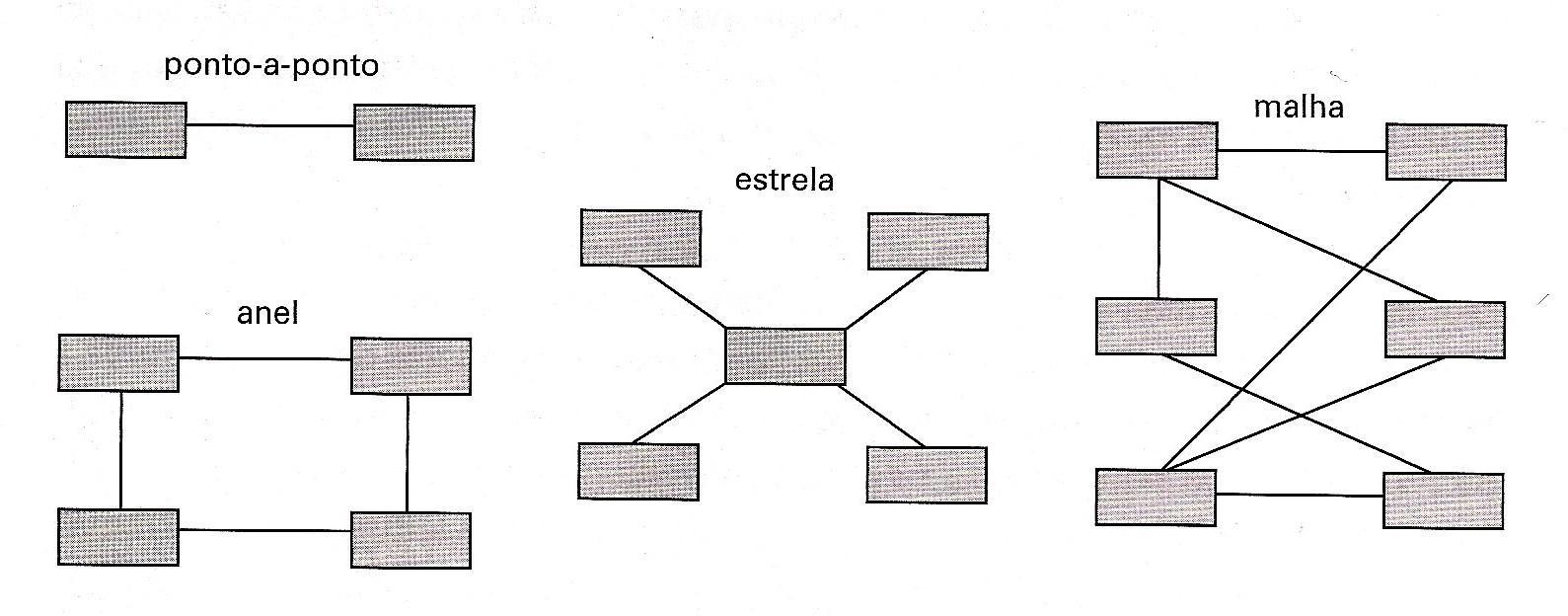
Figura 3: Topologias de barramento, radiodifusão e enlace via satélite.
Comunicação Serial X Comunicação Paralela
A
comunicação/transmissão serial transmite um único bit por vez, em
sequência, por um único canal de comunicação, e sua velocidade é
limitada; enquanto que, na comunicação/transmissão paralela são
transmitidos vários bits por vez, de forma aleatória, por diferentes
canais. Considerando uma mesma velocidade na linha e a mesma quantidade
de tempo requerida para transmissão, na comunicação serial transmite um
bit e na comunicação paralela podemos transmitir oito (ou mais) bits de
dados.
A
comunicação paralela é mais rápida, porém, menos segura, pois não
garante como os bits serão enviados e recebidos, além da necessidade de
um canal de comunicação mais complexo, usando grandes cabos de cobre.
Quanto mais distante a ligação paralela, pior é a degradação do sinal
elétrico para os nós mais distantes.
A
comunicação serial em sistemas de comunicação propicia a redução de
custos, pois utiliza menos fios na transmissão de dados, por isso, a
comunicação serial é muito utilizada em sistemas de comunicação de dados
de longas distâncias, porém a sua transmissão é mais lenta, além de
permitir a sua transmissão através de sistemas de comunicação já
existentes que originalmente não foram projetadas para este tipo de
transmissão, como exemplo, conexões de terminais a sistemas, conexões
via linhas telefônicas para transferência de dados, conexões por linhas
discadas e linhas de fibra ótica.
A
informação processada por softwares é paralela, e para ter segurança em
sua transmissão, deve ser convertida em uma representação serial, para
isto, o transmissor e o receptor devem concordar sobre a que bit, na
representação serial, corresponde cada bit na representação paralela.
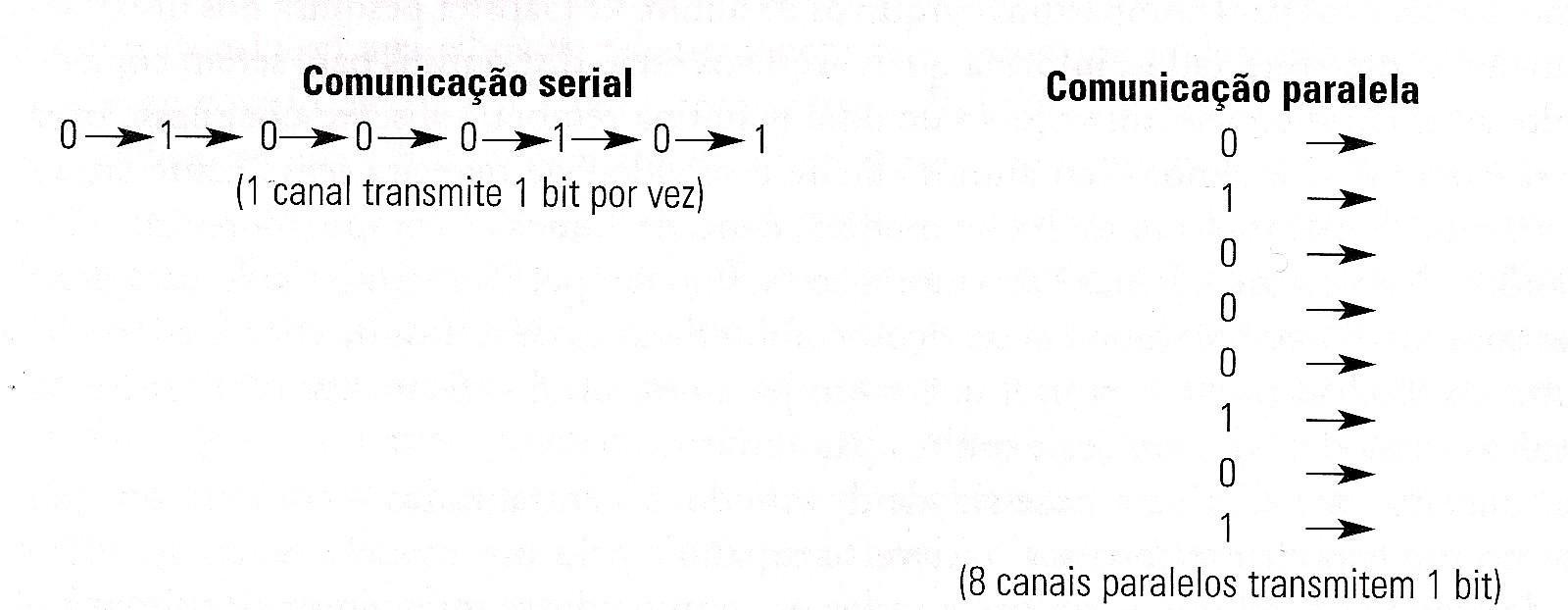
Figura
4: Comunicações serial e paralela. Aqui, o caractere E, que é 01000101
em representação binária, é transmitido 1 bit por vez na comunicação
serial e 8 bits de uma vez na comunicação paralela.
Síncrono X Assíncrona
Na figura 4, na comunicação serial foi transferido um único caractere, porém, pode ser
transmitido
mais caracteres e, para identificar o início e o fim de cada caractere,
o receptor precisa ser informado quando uma unidade completa de dados
for transmitida. A comunicação síncrona e assíncrona resolve este
problema, que são:
Comunicação síncrona: a comunicação entre dois nós é monitorada pelos dois nós, ou seja, todas as ações que resultem na transmissão de dados são sincronizadas entre os nós, quando os dados são transmitidos ou recebidos, os nós sabem da transmissão e se preparam para a troca de dados, assim, os nós de envio e recepção ficam sincronizados, e o nó receptor sempre sabe quando um novo caractere está sendo enviado, para isso, os dados são transmitidos em blocos que contêm várias sequências de bits, esses blocos são chamados de quadros ou frames.
Comunicação assíncrona: são inseridos bits especiais de “início” e de “parada” - este processo é comumente denominado encapsulamento de dados - que indica o começo e o fim de cada caractere, nesta comunicação, o receptor não precisa saber quando será enviada uma sequência de dados e nem o tamanho da mensagem, ou seja, o transmissor pode enviar os dados sem esperar por notificação do receptor. Como exemplo, podemos citar o terminal de um computador (transmissor) conectado a um sistema (receptor),o sistema deve estar sempre pronto, pois ele não sabe quando o terminal vai começar a fornecer dados, ficando ocioso enquanto aguarda o início da transmissão que, antes de começar, envia uma série de bits para avisar o início, ao final é enviado os bits de parada para avisar o término da transmissão.
Para
entendermos melhor a diferença entre comunicação síncrona e assíncrona,
podemos compará-la a um assalto em um programa de televisão, se o
assalto for síncrono, você sabe que o personagem será assaltado e o
momento que irá acontecer, e estará preparado para isso, se o assalto
for assíncrono, você saberá somente que irá acontecer o assalto mas não
sabe quando irá acontecer. A comunicação assíncrona é usada bastante na
educação à distância, onde usando tecnologias para esta finalidade, o
conteúdo pode ser transmitido a qualquer momento e em qualquer lugar.

Figura 5: Tipos de Comunicação
Equipamentos
Existem
diversos equipamentos que podem ser utilizados nas redes de
computadores. Neste capítulo, estudaremos alguns destes equipamentos,
que são:
Modem (Modulador/Demodulador): Converte/modula o sinal digital em sinal analógico e transmite por fios, do outro lado, deve ter outro modem para receber o sinal analógico e demodular, ou seja, converter em sinal digital, para que o computador possa trabalhar com os dados. Em alguns tipos de transmissão (usando cabos coaxiais, par trançado, fibra ótica ou wireless), já é feita enviando os próprios sinais digitais, não precisando usar os modens, porém, quando se transmite sinais através da linha telefônica é necessário o uso dos modens.
Placa de rede: Também chamada de Network Interface Card (NIC), possui a mesma tarefa dos modens, porém, somente com sinais digitais. Ou seja, é o hardware que permite os computadores se comunicarem através da rede. A função da placa é controlar todo o recebimento e envio dos dados através da rede.
Hub: Atuam como concentradores de sinais, retransmitindo os dados enviados às máquinas ligadas a ele, ou seja, o hub tem a função de interligar os computadores de uma rede local, recebendo dados de um computador e transmitindo à todos os computadores da rede local.
Switch: Semelhante ao Hub – também chamado de Hub inteligente - verifica os cabeçalhos das mensagens e a retransmite somente para a máquina correspondente, criando um canal de comunicação exclusiva entre origem e destino.
Roteador: Ao invés de ser conectado à máquinas, está conectado às redes. Além de possuir as mesmas funções da Switch, possui a capacidade de escolher a melhor rota que um determinado pacote de dados deve seguir para chegar a seu destino. Podemos citar como exemplo uma cidade grande e o roteador escolhe o caminho mais curto e menos congestionado.
Access Point (Ponto de acesso – AP): Similar ao hub, oferece sinais de rede em formas de rádio, ou seja, o AP é conectado a uma rede cabeada e serve de ponto de acesso a rede sem fio.
Analógica
Os
dados transmitidos entre duas máquinas consistem de sequências de
caracteres ou bits. Essa transferência ocorre através de meios físicos
(cabos, raios infravermelhos, rádio, entre outros) e por isso, as
máquinas devem possuir placas de redes ou modems (interfaces de meio
físico) que integram os dispositivos periféricos para ligarem ao meio
utilizado. Essas placas ou modems possuem drivers que são responsáveis por viabilizar a transferência de dados entre a memória e o periférico.
Para
conseguir transmitir esses dados através do meio físico, é necessário
traduzir estes dados para sinais digitais ou analógicos. O meio físico
utilizado para a transmissão é um fator de grande influência na
estrutura e principalmente, no desempenho de uma rede. Os diferentes
meios físicos possuem diferentes taxas máximas de transmissão,
determinadas por suas características eletromagnéticas e pela quantidade
de ruído elétrico presente nos circuitos de comunicação.
Outro
processo que também está ligada ao meio físico e que influi no
desempenho de uma rede é a atenuação dos sinais elétricos, que aumenta o
grau de dificuldade em se fazer a distinção entre o sinal transmitido e
o ruído elétrico captado pelos componentes eletrônicos, tornando mais
difícil recuperar a informação contida nos sinais amostrados pelo
receptor.
Ondas
As
ondas eletromagnéticas são criadas à partir do movimento dos elétrons.
Essas ondas podem se propagar pelo espaço e o número de oscilações por
segundo é denominado de frequência (f), e é medido em Hz (hertz). A
distância entre dois pontos máximos consecutivos é chamada de
comprimento da onda (λ – lambda). A comunicação sem fio é baseada na
transmissão e recepção de ondas eletromagnéticas com o uso de antenas e
receptores em um determinada distância.
Todas
as ondas eletromagnéticas viajam a mesma velocidade (t) no vácuo,
independentemente de sua frequência, essa velocidade é conhecida por
velocidade da luz e é aproximadamente 30 cm por nanossegundo, a
velocidade luz é o limite máximo que se pode alcançar. Utilizando meios
guiados (cobre ou fibra), a velocidade cai para cerca de 2/3 desse valor
e torna dependente da frequência.
A
figura 6 mostra o espectro eletromagnético, as faixas de rádio,
micro-ondas, infravermelho e luz visível do espectro podem ser usadas na
transmissão de informações, por meio de modulação da amplitude, da
frequência ou da fase das ondas. A luz ultravioleta, os raios X e os
raios gama representariam opções ainda melhores, por terem frequências
mais altas, mas são difíceis de produzir e modular, além de não se
propagarem bem através dos prédios e de serem perigosos para os seres
vivos.
Quase
todas as transmissões utilizam uma banda de frequência estreita, usando
o espectro com mais eficiência e obtendo taxas de dados razoáveis
transmitindo com potência suficiente. Porém, em alguns casos, é
utilizado uma banda larga com três variações:
espectro por salto de frequência: o transmissor salta de uma frequência para outra centenas de vezes por segundo, assim, dificulta a detecção das transmissões e é praticamente impossível obstruí-las. Oferece boa resistência ao enfraquecimento por múltiplos caminhos, o receptor não fica restrito a uma frequência quando impossibilitada por tempo suficiente para encerrar a comunicação. Essa técnica é utilizada em comunicações militares e também é aplicada comercialmente, como por exemplo, no bluetooth e nas versões mais antigas das redes 802.11.
espectro de dispersão de sequência direta: usa uma sequência de código para dispersar o sinal de dados por uma banda de frequência mais ampla. Essa técnica é bastante usada comercialmente, pois permite que vários sinais compartilhem a mesma banda de frequência. Essa técnica é a base das redes de telefonia móvel e também é usado no GPS (Global Positioning System).
Ultra-WideBand (UWB): envia uma série de pulsos rápidos, variando suas posições para trocar informações, essas rápidas transições levam a um sinal que se espalha estreitamente por uma banda de frequência muito larga.
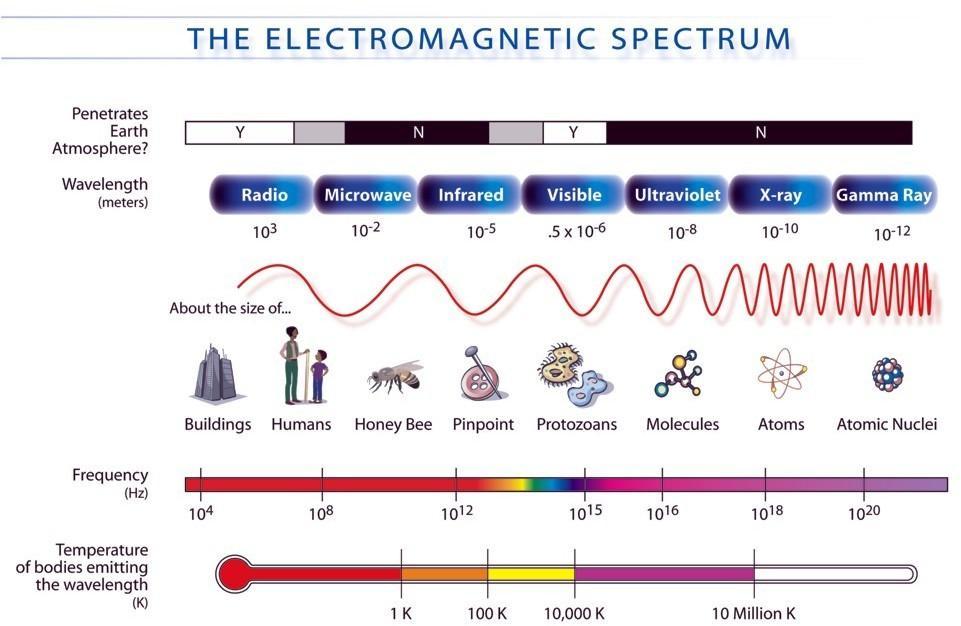
Figura 6: O espectro eletromagnético.
Transmissão de rádio
As
ondas de rádio podem percorrer longas distâncias, são fáceis de gerar e
penetram facilmente nos prédios, por isso são amplamente utilizadas
para comunicação, tanto em ambientes fechados como em locais abertos,
além disso, essas ondas são omnidirecionais: elas viajam em todas as
direções a partir da origem. As propriedades das ondas de rádio variam
de acordo com a frequência:
distância
da origem aumenta, pois a energia do sinal se espalha de forma mais
estreita por uma superfície maior, essa atenuação é chamada de perda no
caminho.
frequências altas: as ondas tendem a viajar em linha reta e a ricochetear nos obstáculos, a perda do caminho reduz a potência, além disso, essas ondas são absorvidas pela chuva e outros obstáculos.
Na
atenuação nas ondas de rádio, o sinal cai pela mesma fração enquanto a
distância dobra, isso significa que as ondas de rádio podem percorrer
longas distâncias, porém a interferência entre os usuários é um
problema, por isso os governos controlam o uso de transmissores de
rádio.
Transmissão de micro-ondas
A
transmissão de micro-ondas se baseia na concentração de toda a energia
em um pequeno feixe através de antenas oferecendo uma relação
sinal/ruído muito mais alta, porém, as antenas de transmissão e recepção
devem estar alinhadas com o máximo de precisão. Além disso, essa
direcionalidade permite o alinhamento de vários transmissores em uma
única fileira, fazendo com que se comuniquem com vários receptores
também alinhados sem que haja interferência.
Nessa
transmissão, se as torres estiverem muito longe, é necessário a
instalação de repetidores em intervalos periódicos, pois, como as
micro-ondas viajam em linha reta, a Terra pode ficar entre elas. Quanto
mais altas forem as torres, mais distantes elas podem ficar uma das
outras.
Diferentemente
das ondas de radio, as micro-ondas não atravessam muito bem as paredes.
Além disso, mesmo que o feixe esteja concentrado no transmissor, pode
haver divergência no espaço: algumas ondas podem ser refratadas nas
camadas atmosféricas mais baixa, tornando sua chegada mais demorada que a
das ondas diretas. Dessa forma, as ondas atrasadas podem chegar fora de
fase em relação a onda direta, e assim cancelar o sinal, esse efeito é
denominado enfraquecimento por múltiplos caminhos.
Para
a instalação das micro-ondas é necessário duas torres simples com
antenas em cada uma delas, tornando o seu uso relativamente econômico.
Esse tipo de transmissão é muito usado na telefonia de longa distância,
em telefones celulares, na distribuição de sinais de televisão, entre
outros.
Transmissão em Infravermelho
As
ondas de infravermelho são muito utilizadas na comunicação de curto
alcance: todos os dispositivos de controle remoto utilizados nos
aparelhos de televisão, videocassetes e equipamentos estereofônicos
utilizam esta comunicação.
Estas
transmissões são relativamente direcionais, econômicas e fáceis de
montar, porém, não atravessam objetos sólidos, e por essa razão esses
sistemas podem ser instalados em ambientes fechados pois não interferem
os sistemas semelhantes instalados em residências vizinhas, não sendo
possível controlar o aparelho de televisão do vizinho com o seu controle
remoto. Dessa forma, não é necessário nenhuma licença do governo para
operar um sistema de infravermelho.
Transmissão via luz
A
transmissão via luz consiste em conectar LANs em dois prédios por meio
de lasers instalados em seus telhados. Essa transmissão é unidirecional,
dessa forma, cada prédio precisa de um raio laser e um fotodetector.
Essa transmissão oferece uma largura de banda muito alta, além de ser
relativamente segura, sendo difícil interceptar um raio laser estreito.
Além disso, possui fácil instalação e não precisa de licença.
Esse
tipo de transmissão possui como desvantagem o feixe estreito, sendo
difícil apontar um raio de 1mm em uma distancia de 500 metros, para
minimizar essa dificuldade, são colocadas lentes no sistema para tirar
um pouco do foco do raio. Além disso, mudanças no vento e na temperatura
podem distorcer o raio, e os feixes de raio não atravessam chuva e
neblina espessa, mas normalmente funcionam bem em dias ensolarados.
Contudo, esses fatores não são problemas quando o uso é para conectar
duas naves espaciais.
Satélites de comunicação
Entre
os anos de 1950 e 1960, as pessoas tentavam configurar sistemas de
comunicações emitindo sinais que se refletiam em balões meteorológicos
metalizados, porém, os sinais recebidos eram muito fracos para que
tivessem algum uso prático. Após, foi estudado a Lua e observada como um
balão meteorológico permanente no céu, e posteriormente, foi criado um
sistema operacional para comunicação entre o navio e a base, utilizando á
Lua em suas transmissões.
Posteriormente
foi criado o primeiro satélite de comunicações, que possui como
principal diferença entre o satélite real a amplificação dos sinais
antes de enviá-los de volta. Esses satélites artificiais possuem algumas
propriedades que o tornam atraentes para várias aplicações, e podem ser
considerado um grande repetidor de micro-ondas no céu.
Esses
satélites são equipados com diversos transponders, cada um deles ouve
uma parte do espectro, amplifica os sinais de entrada e os transmite
novamente em outra frequência, para evitar interferência com o sinal de
entrada. O processamento digital pode ser acrescentado para manipular ou
redirecionar separadamente os feixes de dados na banda geral, ou
informações digitais ainda podem ser recebidas pelo satélite e
retransmitidas. A regeneração de sinais dessa maneira melhora o
desempenho em comparação com um canal em curva, pois o satélite não
amplifica o ruido no sinal ascendente. Os feixes descendentes podem ser
largos, cobrindo uma parte substancial da superfície terrestre; ou
estreitos, cobrindo uma área com apenas centenas de quilômetros de
distancia. Existem três tipos de satélites:
satélites geoestacionários (GEO – Geoestationary Earth Orbit): são satélites de alta órbita, possui aproximadamente 40 transponders, cada um com uma largura de banda de 36 MHz, e equipado com diversas antenas, dessa forma, os feixes descendentes podem ser focados em uma pequena área geográfica, e assim, podem acontecer diversas transmissões ascendentes e descendentes ao mesmo tempo. Outra propriedade importante desses satélites é que eles são basicamente meios de difusão. Enviar uma mensagem para milhares de estações localizadas na área de cobertura não custa nada a mais do que enviar a mensagem para apenas uma estação, o custo de transmissão de uma mensagem é independente da distância percorrida. Por outro lado, não existe segurança e nem privacidade, pois todo mundo pode ouvir tudo, sendo essencial o
uso de criptografia quando for necessário segurança.
satélites terrestres de orbita média (MEO – Medium-Earth Orbit): esses satélites podem ser vistos da Terra e se deslocam lentamente em longitude, levando cerca de seis horas para circular a Terra. Pelo fato de estarem mais baixos do que os satélites geoestacionários, possuem uma área de cobertura menor no solo e exigem transmissores menos potentes para alcançá-los.
satélites terrestres de orbita baixa (LEO – Low-Earth Orbit): pelo fato de estarem posicionados em uma altitude menor, se movimentam rápido e por isso, é necessário muitos satélites para formar um sistema completo. Pelo fato de estarem próximos a Terra, as estações terrestres não precisam de muita potência, e o atraso de ida e volta é de apenas alguns milissegundos, e o custo de lançamento é bem mais baixo.
Modulação
A
modulação é o processo de variação de amplitude, intensidade,
frequência, comprimento e da fase em uma onda, e refere-se ao processo
de conversão entre bits, dessa forma, é possível criar sinais digitais
para representarem os bits das informações digitais. Existem alguns
esquemas que convertem de forma direta os bits em sinal, esses esquemas
resultam em transmissão de banda base: o sinal ocupa frequências de zero
até um número máximo que depende da taxa de sinalização, como exemplo,
podemos citar o RZ, NRZ, Manchester, AMI, 4B/5B, e serão abordados no
capítulo 7.
Nesse
subcapítulo serão estudados os esquemas que regulam a amplitude, a fase
ou a frequência de um sinal da portadora para transportar bits, esses
esquemas resultam em transmissão de banda passante: o sinal ocupa uma
banda de frequências em torno da frequência do sinal da portadora. O uso
desses esquemas são comuns em canais sem fio e óticos, pois os sinais
devem residir em uma determinada banda de frequência.
Os
canais normalmente são compartilhados por vários sinais. Afinal, é
muito mais conveniente usar um único fio para transportar vários sinais
do que instalar uma fio para cada sinal. Esse tipo de compartilhamento é
chamado multiplexação, podendo ser realizado de diversas maneiras,
alguns métodos para multiplexação serão apresentados no capítulo 6.
GFSK
Para
suavizar os desvios de frequência positivos/negativos, que representam
um binário 1 ou 0, a camada física usa o GFSK (Frequency Shift Keyung
Gaussian – Chaveamento Gaussiam Deslocamento de Frequência), que é a
mudança de frequência de codificação que codifica os dados como uma
série de alterações de frequência de um transportador. Uma vantagem da
utilização de frequência para codificar dados é que o ruído normalmente
muda a amplitude de um sinal. Os sistemas de modulação que ignoram
amplitude, como por exemplo transmissão de rádio FM, tendem a ser
relativamente imune ao ruído. O uso do Gaussian no GFSK refere-se à
forma de impulsos de rádio, que tem limites de emissões para uma banda
espectral estreitos e portanto, é adequado para usos secundários.
Existem duas aplicações de GFSK, que são:
2-Nível GFSK – é a aplicação mais básica do GFSK, e utiliza duas frequências diferentes dependendo dos dados que serão transmitidos – 1 ou 0. Para transmitir um 1, a frequência da portadora é aumentada por um certo desvio. Para transmitir um 0, a frequência da portadora é
diminuída
pelo mesmo desvio. Em sistemas do mundo real, os desvios de frequência a
partir da transportadora são muito menores. A taxa à qual os dados são
enviados através do sistema são próximas a taxa de símbolos. Pelo fato
de demorar vários ciclos para determinar a frequência da transportadora
subjacente e se 1 ou 0 foi transmitido, a taxa de símbolo é uma fração
muito pequena da frequência portadora. Embora a frequência da portadora é
de aproximadamente 2,4 bilhões de ciclos por segundo, a taxa de símbolo
é de apenas 1 ou 2 milhões de símbolos por segundo. Mudanças de
frequência com GFSK não são mudanças bruscas. Mudanças de frequência
instantânea exigem componentes eletrônicos mais caros e de maior poder.
Mudanças de frequência graduais permitem o uso de equipamento de baixo
custo com vazamento de RF inferior.
4 Nível GFSK – utiliza a mesma abordagem básica do 2GFSK, porém com quatro símbolos em vez de dois. Os quatro símbolos correspondem cada um a uma frequência discreta, e, por conseguinte, 4GFSK transmite o dobro dos dados com a mesma velocidade de símbolo. Obviamente, esse aumento tem um custo: 4GFSK requer transmissores e receptores mais complexos. Através do processamento de sinal, o 4GFSK impulsiona vários bits em um único símbolo.
DSSS
DSSS (Direct Sequence Spread Spectrum -
sequência direta de espalhamento do espectro) é uma técnica de
modulação do espectro de propagação muito usaações militares. Fornece
uma densidade espectral da potência muito baixa espalhando a potência do
sda em aplicinal sobre uma faixa de frequência muito larga. Este tipo
de modulação requer, consequentemente, uma largura de faixa muito grande
para transmitir diversos Mbits/s.
Como
a largura de faixa disponível é limitada, esta técnica é ideal para
transmitir taxas de dados mais baixas nos cabos de energia elétrica,
essa técnica é usada nas redes locais sem fios WiFi 802.11b, 802.11a e 802.11g e na telefonia móvel de 3ª geração
W-CDMA (Wideband Code Division Multiple Access), e proporciona
criptografia por salto pseudo aleatório de frequência e resistência ao
ruído.
O
DSSS é restrito a 1 ou 2 Mbps, utiliza 11 canais para o uso em 2,4 GHz,
possibilitando o funcionamento de várias redes sem que elas interfiram
entre si. O DSSS combina um sinal de dados de envio pelo transmissor com
uma alta taxa de sequência de taxa de bit, permitindo aos receptores
filtrar sinais que não utilizam o mesmo padrão, incluindo ruídos ou
interferências. O transmissor gera um código de chip, e apenas os
receptores que conhecem o código são capazes de decifrar os dados. Essa
tecnologia utiliza um método conhecido como sequência de Barker para
espalhar o sinal de rádio através de um único canal, sem alterar as
frequências.
Transmissão em banda Passante
Para
canais sem fio, não pode ser enviado sinais de frequência baixos, por
que o tamanho da antena precisa ser uma fração do comprimento de onda do
sinal. Assim, para evitar interferências é necessário escolher a
frequência. Esse tipo de transmissão é denominado transmissão de banda
passante, pois uma banda de frequência arbitrária é usada para passar o
sinal.
A
modulação digital é realizada com a transmissão da banda passante
modulando um sinal de portadora sobreposto à banda passante. Podemos
modular a amplitude, a frequência ou a fase do sinal da portadora:
ASK (Amplitude Shift Keying – Chaveamento por Deslocamento de Amplitude): duas amplitudes diferentes são usadas para representar 0 e 1.
FSK (Frequency Shift Keying – Chaveamento por Deslocamento de Frequência): dois ou mais tons diferentes são usados.
PSK (Phase Shift Keying – Chaveamento por deslocamento da Fase): a onda da portadora é sistematicamente deslocada em 0 ou 180 graus em cada período de símbolo.
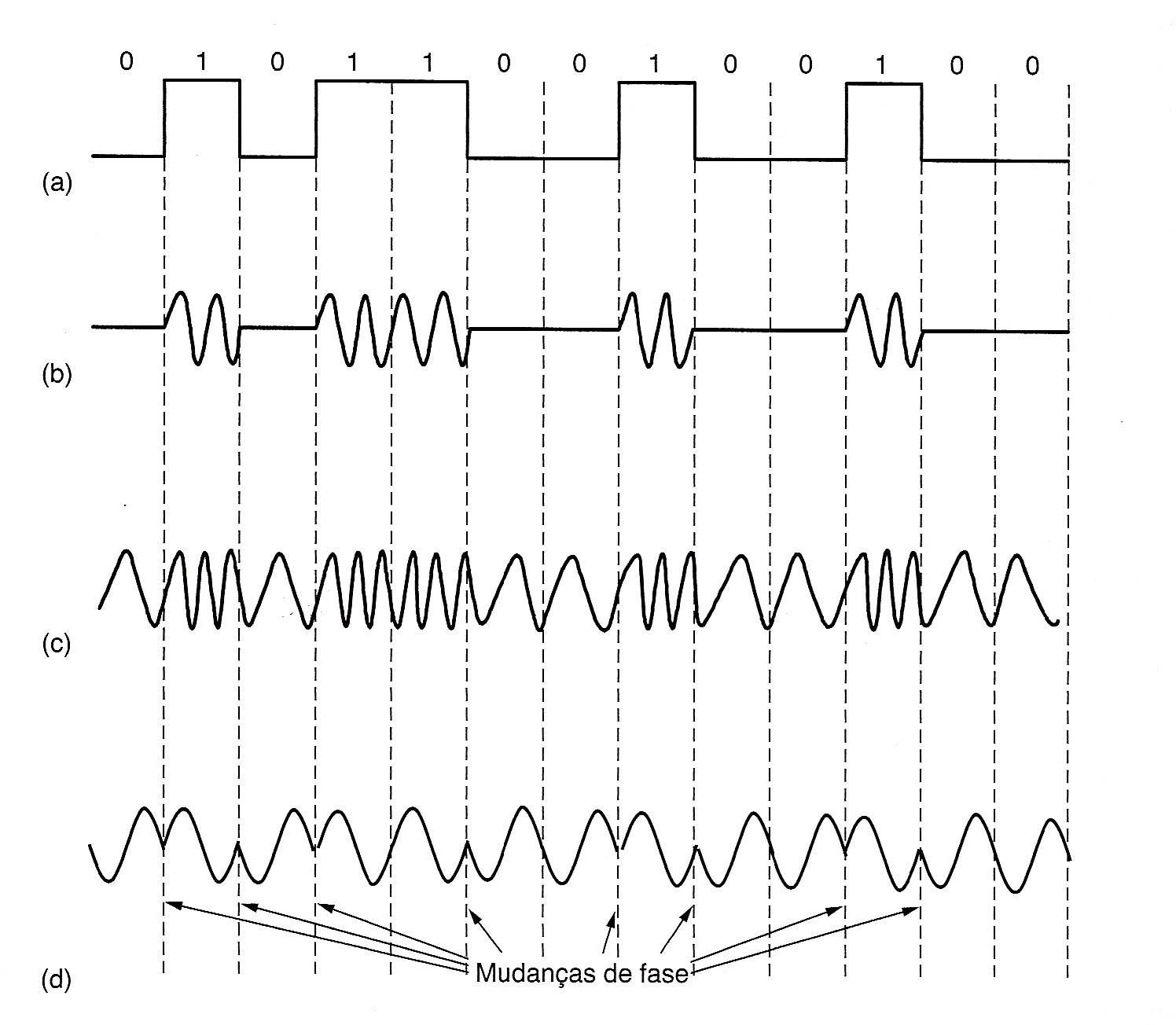
Figura 7: (a) Um sinal binário. (b) Chaveamento por deslocamento de amplitude.
(c) Chaveamento por deslocamento de frequência. (d) Chaveamento por deslocamento de fase.
Pelo fato de existirem duas fases, ela é chamada de BPSK (Binary Phase Shift Keying -
Chaveamento Binário por Deslocamento de Chave), o chaveamento binário
refere-se aos dois símbolos (figura 7). Outra forma, com quatro
deslocamentos (figura 8), que usa a largura de banda do canal de modo
mais eficiente para transmitir 2 bits de informação por símbolo é o QPSK
( Quadrature Phase Shift Keying - chaveamento por deslocamento de fase
em quadratura).

Figura 8: (a) QPSK. (b) QAM-16. (c) QAM-64.
É
possível fazer a combinação desses esquemas e assim, usar mais níveis
para transmitir mais bits por símbolo, modulando apenas a frequência ou a
fase, pois elas estão relacionadas, e normalmente, é a taxa de mudança
de fase com o tempo. É possível ver na figura 8a, a representação do
QSPK. A figura 8b mostra o esquema QAM-16 (Quadrature Amplitude
Modulation - Modulação por Amplitude de Quadratura), que são utilizadas
16 combinações de amplitudes e fase e pode transmitir 4 bits por
símbolo. A figura 8c mostra o esquema QAM-64, que são utilizadas 64
combinações diferentes e pode transmitir 6 bits por símbolo. Também
podem ser utilizadas QAMs mais altas.
Duplexação e Multiplexação
Os
tipos de comunicações estudadas no capítulo 3 (comunicações: serial,
paralela, síncrona e assíncrona), apresentam diferentes técnicas para
transferir dados. Junto a estas técnicas, existem três tipos de
transmissão de dados, que são:
Transmissão Simplex: neste método, os dados seguem apenas uma direção, ou seja, um dispositivo transmite e o outro recebe, e esta ordem não pode ser invertida. Como exemplo, podemos citar as transmissões de televisão: o transmissor envia o sinal e não espera por resposta.
Transmissão Semiduplex: neste método, os dados podem seguir nas duas direções, porém, somente um dispositivo pode enviar dados de cada vez, ou seja, quando um dispositivo está transmitindo, o outro dispositivo fica recebendo. Como exemplo, podemos citar o rádio amador: que pode ser usado como transmissor ou receptor.
Transmissão Duplex: neste método, os dados podem seguir em ambas direções, em transmissões separadas, mas paralelas, ocorrendo simultaneamente. Este tipo de transmissão pode ser vista como duas transmissões Simplex: uma em cada direção trabalhando simultaneamente. Este tipo de transmissão divide em:
TDD (Time Division Duplexing): A duplexação por divisão de tempo usa o tempo para fornecer um enlace direto e um reverso, ou seja, vários usuários compartilham o mesmo canal alternando somente o tempo. Na TDD, cada canal duplex possui um espaço de tempo direto e um reverso, assim, os usuários podem acessar individualmente o canal no espaço de tempo atribuído. Se estes espaços de tempo for pequeno, não será perceptível aos usuários.
FDD (Frequency Division Duplexing): A duplexação por divisão de frequência fornece duas bandas de frequências distintas para cada usuário. Na FDD, cada canal duplex consiste de dois canais simplex - um direto e um reverso, e um duplexador que permite a transmissão e a recepção simultaneamente, nos par de canais simplex.
Comparando
as técnicas FDD e TDD, alguns fatores influenciam na escolha entre as
técnicas. A FDD é usada em sistemas de comunicação de rádio, que alocam
frequências individuais para cada usuário e, pelo fato de transmitir e
receber simultaneamente os sinais de rádio que podem variar por mais de
100db, a alocação da frequência deve ser coordenada dentro do
transceptor (dispositivo que transmite e recebe). A TDD permite que o
transceptor funcione tanto como transmissor quanto receptor usando a
mesma frequência, não precisando ter bandas direta e reversa separadas,
mas a TDD possui uma latência de tempo, pois precisa de espaços de tempo
para transmitir e receber, esta latência cria sensibilidades inerentes a
atrasos de propagação dos usuários; devido a estes espaços de tempo
exigidos, esta técnica geralmente é limitada a telefone sem fio ou
acesso portátil em curta distância.
Multiplexação
A
multiplexação possibilita que dados de múltiplos canais de transmissão
compartilhem uma ligação comum, ou seja, combina dados de diversos
canais de entrada de baixa velocidade e os transmite através de um
circuito de alta velocidade único. Isso é feito com o uso de um
dispositivo denominado multiplexador – também conhecido como mux. A multiplexação é muito usada na
comunicação
de longa distância, onde são usados enlaces de fibra ótica, cabos
coaxiais ou micro-ondas de alta velocidade, esses enlaces podem
transportar grandes quantidades de dados, voz e vídeo simultaneamente.
O
multiplexador é conectado por um único enlace de dados com um
demultiplexador. O multiplexador possui n entradas, o que permite
multiplexar dados nas n linhas de entrada e transmitir por meio de um
enlace de dados de capacidade mais alta. O demultiplexador aceita o
fluxo de dados multiplexado, demultiplexa os dados de acordo com o canal
e os distribui para as linhas de saída apropriadas, este processo é
mostrado na figura 9.

Figura
9: A multiplexação combina diversos recursos de transmissão separados
em um único canal para fins de transmissão de dados.
Usando
a multiplexação, muitas transmissões diferentes podem ser feitas usando
um único meio, como exemplo, podemos citar um meio de comunicação que
pode ser dividido em três canais, um canal para transmitir dados, outro
para transmitir voz e o último para transmitir vídeo. Estas transmissões
ocorrem separadas e simultaneamente. Existem muitas estratégias para
multiplexação, que são:
TDM (Time Division Multiplexing): Os sistemas de Multiplexação por Divisão de Tempo, dividem o espectro de radio (intervalo de frequência) em espaços de tempo, e em cada espaço apenas um usuário tem permissão para transmitir ou receber. Os sistemas TDM transmitem dados em um método buffer-and-burst (guardar e enviar), onde a transmissão não é contínua para nenhum usuário. A transmissão de vários usuários é intercalada em uma estrutura de quadros repetitivos: um quadro consiste em uma série de espaços de tempo, cada quadro é composto por um preâmbulo, uma mensagem de informação e bits de fim. Na TDM, metade dos espaços de tempo no quadro da mensagem são usados para os canais do enlace direto e a outra metade para os canais do enlace reverso;
FDM (Frequency Division Multiplexing): Os sistemas de Multiplexação por Divisão de Frequência atribuem canais individuais a usuários individuais, ou seja, cada usuário recebe uma banda ou um canal de frequência exclusivo, estes canais são atribuídos por demanda aos usuários que solicitam o serviço, durante o período da chamada, nenhum outro usuário pode compartilhar o mesmo canal, nos sistemas FDD, os usuários recebem um canal como um par de frequências, uma usada para o canal direto e a outra usada para o canal reverso;
CDM (Code Division Multiplexing): Os sistemas de Multiplexação por Divisão de Código são uma forma de comunicação por dispersão espectral: um sinal de banda estreita é espalhado por uma banda de frequência mais larga, tornando-a mais tolerante as interferências, além de permitir que vários sinais de diferentes usuários compartilhem a mesma banda de frequência. Por essa última finalidade citada, a CDM também é conhecida como CDMA - Acesso Múltiplo por Divisão de Código (Code Division Multiple Access). O CDMA permite que cada estação transmita por todo o espectro de frequência o tempo todo. Várias transmissões simultâneas são separadas usando a teoria da codificação: os usuários deste sistema operam independentemente
sem
conhecimento dos demais usuários, porém, usam a mesma frequência de
portadora e podem transmitir simultaneamente, cada usuário possui uma
palavra código pseudo aleatória vertical a todas as outras palavras
código, o receptor detecta a palavra código desejada através de uma
operação de correlação de tempo, as demais palavras código aparecem como
ruído devido à descorrelação, ou seja, para esta detecção do sinal de
mensagem, o receptor deve conhecer a palavra código usada pelo
transmissor. Desse modo, a chave do CDMA é a capacidade de extrair o
sinal desejado e rejeitar todos os outros como ruído aleatório;
OFDM (Orthogonal Frequency Division Multiplexing): A Multiplexação Ortogonal por Divisão de Frequência é um meio de fornecer sinalização eficiente de potência para um grande número de usuários no mesmo canal: cada frequência na equação 6.128 é modulada com dados binários (ligado/desligado) para fornecer uma série de portadoras paralelas, cada uma contendo uma parte dos dados do usuário, ou seja, o fluxo de informações digitais de alta velocidade é dividido em vários fluxos de baixa velocidade, os quais são transmitidos nas subportadoras em paralelo. Essa divisão é importante porque é mais fácil trabalhar com as degradações do canal no nível da subportadora. Algumas subportadoras podem ser degradadas e excluídas em favor de subportadoras que são bem recebidas. A ideia da OFDM existe há muito tempo, mas começou a ser usada somente na última década. A OFDM é usada em 802.11, redes a cabo e redes por linhas de energia elétrica, e também é planejada para os sistemas de celular de 4ª geração;
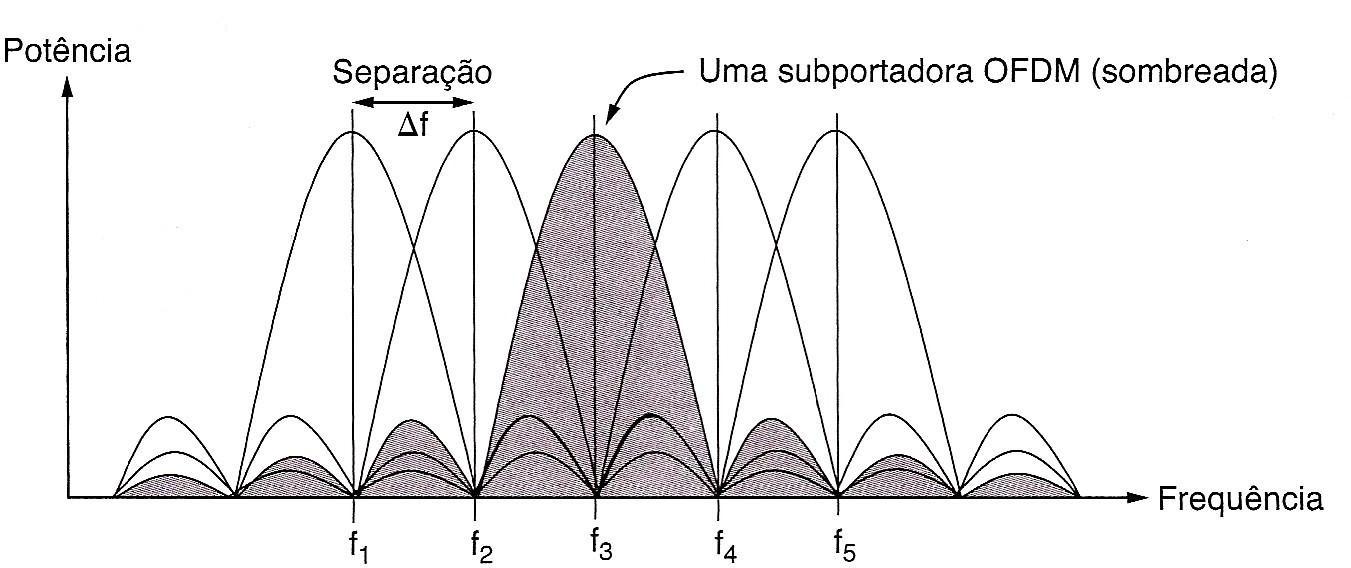
Figura 10: Multiplexação Ortogonal por Divisão de Frequência (OFDM).
WDM (Wavelengh Division Multiplexing): Os sistemas de Multiplexação por Divisão de Comprimento de Onda são usados em cabos de fibra ótica: sinais elétricos são convertidos em sinais óticos através de uma fonte luminosa, ou seja, um semicondutor que converte energia elétrica em luz. Para transmitir as fontes luminosas é necessário o uso de multiplexador WDM que transmite através de uma linha única, as ondas possuem comprimentos diferentes e em trânsito, são amplificados simultaneamente por amplificadores óticos. Na chegada dos sinais, é necessário um demultiplexador IWDM para separar e transmitir aos receptores. A WDM possui um baixo custo porque amplia a largura de banda sem a necessidade de instalação de novas fibras óticas, além de possuir um bom desempenho, pois congrega dados de canais separados em um único canal.
Duplexação + Multiplexação
FDM + TDD: No canal FDM, o TDD pode ser usado junto, ou seja, no sentido de transmissão feita em frequências diferentes (FDM), cada máquina transmite em tempos diferentes (TDD).
FDM + FDD: No canal FDM, o FDD pode ser usado junto, ou seja, no sentido de transmissão feita em frequências diferentes (FDM), cada máquina ganha mais uma subfaixa de frequência para coordenar a transmissão e recepção de dados (FDD).

Figura 12: Canais FDM + FDD
CDM + TDD: No canal CDM, o TDD pode ser usado junto, ou seja, dentro de uma onda padronizada para codificação (CDM) há a divisão de intervalos de tempo para recebimento e envio das informações. Assim, até 64 máquinas podem estar alocadas em cada espaço de tempo.

Figura 13: Canais CDM + TDD. Cada M pode alocar até 64 máquinas.
CDM + FDD: No canal CDM, o FDD pode ser usado junto, ou seja, em uma onda padronizada para codificação (CDM) há a divisão de frequências para recebimento e envio das informações. Assim, até 64 máquinas podem estar alocadas em cada faixa de frequência.

Figura 14: Canais CDM + FDD. Cada M pode alocar até 64 máquinas.
TDM + TDD: No canal TDM, o TDD pode ser usado junto, ou seja, no sentido de transmissão dos dados em tempos diferentes (TDM) em que cada máquina ganha um espaço de tempo do ponto de acesso, e dentro desse espaço há mais uma divisão de tempo para coordenar o envio e recebimento dos dados (TDD).

Figura 15: Canais TDM + TDD.
TDM + FDD: No canal TDM, o FDD pode ser usado junto, ou seja, no sentido da transmissão de dados em tempos diferentes (TDM), cada máquina transmite em uma frequência diferente (FDD).

Figura 16: Canais TDM + TDD.
Codificação Digital
Para
transmitir dados entre dois dispositivos através de um meio físico é
necessário converter os dados em sinais - as informações não podem ser
transmitidas diretamente na forma de 0 e 1, por isso, é necessário
codificá-los em forma de sinais. Os códigos mais comuns são:
RZ (Return-to-zero): o pulso retorna a zero dentro de cada período de bit, levando a ampliação espectral e melhorando o sincronismo de temporização.
NRZ (Nonreturn-to-Zero): o sinal permanece em níveis constantes por um período de bit, esse código é mais eficiente em espectro do que o código RZ, porém, oferece capacidades de sincronismo mais fracas.
NRZ-L (Nonreturn-to-Zero-Level): o sinal nunca retorna para a voltagem zero, e o valor durante um tempo de bit é uma voltagem de nível, esse código é usado normalmente para conexões curtas, como por exemplo, entre um computador e um modem externo ou entre um terminal e um computador próximo.
NRZI (Nonreturn-to-Zero-Invert on Ones): o sinal muda de estado após o toque do relógio somente quando o bit for 1, quando o bit for 0, o sinal não sofre mudança de estado. Esse código é usado em conexões ISDN (Integrated Services Digital Network) de baixa velocidade.
Manchester: possui uma transição no meio de cada período de bit, essa transição de meio bit serve como um mecanismo de sincronização e também como dados: uma transição de alto para baixo representa um 0, e de baixo para alto representa um 1. Esse código é usado em redes Ethernet e redes locais (LANs)(estas redes serão estudadas no capítulo 12).
Manchester Diferencial: a transição de meio bit é usada somente para fornecer sincronização. A codificação de um 1 é representado pela ausência de uma transição no início de um período de bit, e um 0 é representada pela presença de uma transição no início de um período de bit. Esse código é usado em LANs token ring.
AMI (Alternate Mark Inversion): retornam a zero entre dois símbolos consecutivos. No código AMI, os pulsos que carregam informação, podem ser positivos ou negativos, com relação a referência de 0V. Nesse código, os bits em 0 são representados por uma tensão de 0V, e os bits em 1 são representados por pulsos que se alternam entre uma tensão positiva e uma tensão negativa.
4B/5B: cada quatro bits são mapeados para 5 bits com uma tabela de tradução fixa, os padrões de 5 bits são escolhidos de forma que nunca haverá uma sequência de mais de três zeros consecutivos. Para isso, usa-se um embaralhador que realiza um XOR dos dados com uma sequência pseudoaleatória antes de serem transmitidos. O receptor realiza o XOR dos bits de entrada com a mesma sequência pseudoaleatória para registrar os dados reais.
Estes
códigos estudados podem ser classificados em Unipolares ou Bipolares.
Unipolares não possuem repouso e variam de 0V ~ +3V. Bipolares possuem
repouso e variam entre -3V ~ +3V.
Taxa de Sinalização X Taxa de TX
Na
transmissão de bits, o hardware remetente e receptor devem concordar no
comprimento de tempo em que a tensão será mantida para cada bit, ao
invés de especificar o tempo para cada bit (que é uma pequena fração de
segundo), é especificado o número de bits que podem ser transferidos por
segundo.
A
taxa de sinalização, mais conhecida como taxa de baud, é o número de
mudanças de sinal por segundo que o hardware gera. Para o esquema
RS-232, a taxa em bauds é igual ao número de bits por segundo, ou seja,
9600 bauds significa 9600 bits por segundo.
Nas
comunicações digitais, a largura de banda relaciona a taxa de dados (ou
taxa de TX – taxa de transferência de dados), que é a quantidade de
dados que podem ser transferidos por um meio de comunicação em um dado
período. A taxa de dados é medida em bps (bits por segundo) e pode
variar de um canal para outro. Como exemplo, podemos citar as redes
locais, que variam entre 4 à 1000 Mbps (milhões de bits por segundo ou
Megabits por segundo); a largura de banda de conexões discadas usando
modens varia de 300 à 33.600 bps; uma rede de longa distância pode
variar de 1.5 à 45 ou 622 Mbps ou até mais.
É
importante saber a diferença entre taxa de TX e taxa de Sinalização, a
taxa de Sinalização é uma unidade de velocidade de sinais – o número de
mudanças discretas em um período de um sinal, ou seja, um canal de
comunicações transmitindo a 300 bauds significa que a taxa de sinais do
canal está mudando 300 vezes por segundo. Assim, a taxa de baud
representa uma medida de velocidade de transmissão de dados, e a taxa de
TX corresponde ao número de bits transmitidos por segundo.
Enlace
A camada de Enlace é dividida em duas partes: a subcamada de acesso a meios (MAC – Media Access Control),
é a metade mais baixa da camada de enlace e fornece protocolos de
gerenciamento de acesso a meios para acessar meios compartilhados; e a
subcamada de controle lógico de ligações (LLC – Logical Link Control), é
a camada superior da camada de enlace, e possui diversas funções,
incluindo enquadramento, controle de fluxo e controle de erros.
Nesta camada, os enlaces podem ser feitos utilizando conexões ponto-a-ponto (estudada no capítulo 2) ou utilizando canais de broadcast. Neste capítulo estudaremos os canais broadcast,
que tem como principal função determinar quem tem o direito de usar o
canal quando há disputa pelo canal - o canal conecta cada usuário a
todos os outros e qualquer usuário que faz uso completo do canal
interfere na utilização que os outros também fazem dele. Os canais de broadcast, são conhecidos também por canais de multiacesso e canais de acesso aleatório.
Para
determinar quem será o próximo em um canal de multiacesso e evitar que
ocorra longas esperas em determinados momentos, são usados protocolos
que pertencem a uma subcamada da camada de enlace de dados, denominada
MAC (Medium Access Control – Controle de Acesso a Meios).
MAC
A
subcamada de controle de acesso a meios (MAC) oferece aos protocolos a
forma de como os nós compartilham o meio único de transmissão física.
A
forma tradicional de alocar um único canal entre vários usuários
concorrentes é dividindo a sua capacidade usando uma das estratégias de
multiplexação, como exemplo podemos citar a FDM, que o canal é dividido
em N usuários e cada um irá possuir uma banda de frequência, sem
interferência entre os usuários, se alguns usuários ficarem inativos, a
largura de banda destes usuários será perdida, e ninguém poderá usá-la. O
mesmo ocorre com a TDM, que cada usuário possui um espaço de tempo, e
se o usuário não usar, este espaço de tempo será perdido, pois nenhum
outro usuário poderá usar. Este tipo de estratégia é denominada alocação
estática e não é apropriada para a maioria dos sistemas de computadores
em que o tráfego de dados ocorre em rajadas.
Para resolver este problema, existe as alocações dinâmicas, que possuem 5 premissas fundamentais, que são:
Tráfego independente: consiste em N estações independentes, cada estação gera quadros para transmissão através de um programa ou usuário. Quando um quadro é gerado, a estação é bloqueada até que o quadro tenha sido transmitido.
Premissa de canal único: um único canal está disponível para todas as comunicações e todas as estações podem transmitir e receber por ele.
Colisões observáveis: um quadro que sofrer colisão deverá ser retransmitido. É denominada colisão quando dois quadros são transmitidos simultaneamente, esses quadros se sobrepõem no tempo e o sinal resultante é alterado.
Tempo contínuo ou segmentado (slotted): a transmissão do quadro pode começar a qualquer momento, por isso o tempo é considerado contínuo. O tempo pode ser segmentado ou dividido em intervalos discretos (slots). As transmissões dos quadros começam no início de um slot e pode conter 0, 1 ou mais quadros correspondente a uma transmissão bem-
sucedida, um slot ocioso ou a uma colisão.
Detecção de portadora (carrier sense) ou sem detecção de portadora: sem detecção de portadora, as estações transmitem e somente depois consegue determinar se a transmissão foi ou não bem-sucedida. Com a detecção de portadora, as estações conseguem detectar se o canal está sendo usado antes de transmitir, se for detectado que o canal está sendo usado, as estações irão esperar até que o canal fique livre.
Existem
muitos protocolos para alocar um canal de acesso múltiplo. Nos próximos
subcapítulos serão estudados alguns desses algoritmos.
Aloha
Criada
na década de 70 por Normam Abramson, pesquisador da Universidade do
Havaí, foi o primeiro protocolo de acesso múltiplo inventado. Surgiu da
necessidade de conectar usuários de ilhas remotas ao computador
principal de Honolulu, eles queriam uma solução diferente ao invés de
passar cabos sob o Oceano Pacífico. Como solução, Abramson usou rádios
de curta distância com cada terminal de usuário compartilhando a mesma
frequência para enviar quadros ao computador central. Por mais que,
inicialmente foi usado radiofrequência, a ideia básica é aplicável a
qualquer sistema em que usuários estão competindo pelo uso do canal
compartilhado. Existe dois tipos de protocolos de acesso múltiplo ALOHA:
ALOHA e ALOHA Discreta.
Aloha e Aloha Discreta
Aloha,
também conhecida como Aloha Original, permite que os usuários
transmitem sempre que tiverem dados para enviarem. É comum haver
colisões, e é necessário descobrir se isso aconteceu. Nesse protocolo,
após cada estação transmitir seu quadro para o computador central, esse
retransmite o quadro para todas as estações, assim, uma estação
transmissora pode escutar por broadcast – usando hub, para saber se
houve colisão ou não. Se houver colisão, é necessário esperar um tempo
aleatório para enviar novamente. É necessário que o tempo seja aleatório
para que, os mesmos quadros não fiquem colidindo repetidas vezes.
A Aloha Discreta, também conhecida como Aloha Slotted,
surgiu em 1972 por Roberts, que criou um método para duplicar a
capacidade do sistema Aloha, esse novo método divide o tempo em
intervalos discretos, chamados de slots, e cada intervalo corresponde a
um quadro. Nesse método, é necessário que os usuários concordem em
relação às fronteiras dos slots. Diferente do método Aloha, no Aloha
Discreto, um computador não tem permissão para transmitir sempre que o
usuário digita, é necessário esperar o início do próximo slot. Esse novo
método reduziu pela metade o período de vulnerabilidade.
CSMA
O protocolo CSMA (Carrier Sense Multiple Access)
é denominado Protocolo de Acesso Múltiplo com Detecção de Portadora,
pois escuta a portadora (transmissão) e funciona de acordo com ela.
Existe duas versões do CSMA:
CSMA Persistente: quando a estação quer transmitir dados, antes da transmissão, a estação escuta o canal para ver se está livre ou se alguém está transmitindo no momento. Se o canal estiver livre, as estações transmitem seus dados. Se o canal estiver ocupado, a estação espera até que o canal fique desocupado, e depois transmite um quadro. Se durante a transmissão ocorrer colisão, a estação espera um intervalo de tempo aleatório e começa tudo de novo.
CSMA Não-Persistente: quando a estação quer transmitir dados, antes da transmissão, a estação escuta o canal para ver se está livre ou se alguém está transmitindo no momento. Se o canal já estiver sendo ocupado, a estação não permanecerá escutando (o CSMA Persistente fica escutando para que, assim que o canal for desocupado, iniciar a transmissão), mas sim, aguardará um intervalo aleatório, e depois, repetirá o algoritmo. O CSMA Não-Persistente faz o uso melhor do canal, porém, há atrasos maiores do que no algoritmo anterior.
Os
protocolos CSMA Persistente e CSMA Não-Persistente são um avanço em
relação ao protocolo ALOHA, pois garantem que nenhuma estação irá
transmitir se perceber que o canal está ocupado. Mesmo nesses protocolos
podem haver colisões, pois se duas estações perceberem que o canal está
desocupado, estas estações irão transmitir simultaneamente e haverá a
colisão. Para tratar melhor esta colisão, surge o protocolo CSMA-CD.
CSMA-CD
O protocolo de acesso múltiplo com detecção de portadora CSMA/CD (CSMA with Collision Detection)
detecta as colisões rapidamente e interrompe a transmissão
abruptamente, diferente dos protocolos anteriores, que completavam a
transmissão. Se o canal estiver desocupado, qualquer estação pode
transmitir, se duas ou mais estações tentarem transmitir
simultaneamente, haverá a colisão. Neste protocolo, a estação deve
escutar o canal enquanto está transmitindo, se o sinal que ela ler for
igual ao que está enviando, a transmissão está correta, caso contrário,
ela saberá que estará havendo uma colisão. Neste último caso, a estação
cancela a transmissão, espera um tempo aleatório e tenta transmitir
novamente. Essa estratégia economiza tempo e largura de banda.

Figura 17: O CSMA/CD pode estar em um destes três estados: disputa, transmissão ou inatividade.
CSMA-CA
O CSMA/CA (CSMA with Collisiom Avoidance) previne a colisão, este protocolo possui quadros especiais: RTS (request to send - solicitação de envio) e CTS (clear to send –
liberação para envio). Assim como o CSMA-CD, as estações verificam o
canal para ver se ele está livre. Se a estação detectar que o canal está
livre, a estação emissora envia o RTS para a estação receptora, que ao
receber, envia o CTS, quando a estação emissora receber o CTS, pode
transmitir os dados. Assim que terminar de transmitir os quadros, a
estação receptora envia o ACK (acknowledgement – confirmação). Ou seja, quando uma estação envia o RTS, o canal é pré-alocado a ela.
A
estação que deseja transmitir um pacote, avisa sobre a transmissão e o
tempo para realizar a tarefa, assim, as demais estações não tentarão
transmitir, porque sabem que o canal estará ocupado e só tentarão
transmitir quando o meio estiver livre. Porém, transmitir a intenção de
trafegar pacotes aumenta o fluxo do meio e pode impactar no desempenho
da rede.
Passagem de bastão
A Passagem de Bastão, também conhecida como Passagem de Tokens, é um protocolo livre de colisão, onde a estação transmite uma pequena mensagem chamada de token (permissão para enviar) para a estação seguinte na mesma ordem predefinida. Quando a estação receber o token, se ela ter um quadro para transmitir, ela pode transmiti-lo antes de passar o token para a próxima estação, se ela não possuir quadros para transmissão, ela simplesmente passará o token. Depois de enviar um quadro, cada estação precisa esperar que todas as N estações transmitam o token a seus vizinhos.
LLC
A
subcamada de Controle Lógico de Ligações (LLC) é responsável por
implementar a camada do nível de enlace com a camada de redes. Esta
subcamada é responsável pela preparação de uma mensagem para
transmiti-la pelo fio ou pelo ar. Para as transmissões destas mensagens é
necessário realizar algumas operações como o enquadramento, controle do
fluxo, controle de erros, entre outros. Estes serviços serão estudados
nas subseções a seguir.
Enquadramento
Para
a camada de Enlace oferecer serviços a camada de Rede, ela deve usar o
serviço fornecido pela camada Física. A camada física aceita um fluxo de
bits brutos e entrega ao destino. A camada de enlace recebe esse fluxo
de bits sem garantia de estar livre de erros, sendo responsabilidade
desta camada, detectar e, se necessário, corrigir os erros.
A
estratégia usada na camada de enlace é dividir o fluxo de bits em
quadros distintos e usar um detector de erros (será estudado na subseção
8.3) para cada quadro. Quando este quadro chegar ao seu destino, o
detector de erros usado será comparado, se os resultados forem
diferentes, a camada de
enlace perceberá o erro e provavelmente, descartará o quadro defeituoso e o enviará novamente.
A
divisão do fluxo de bits em quadros é necessário para que, o receptor
encontre o início de novos quadros usando pouca largura de banda. Para
isso, existem quatro métodos, que são:
contagem de caracteres: utiliza um campo no cabeçalho para especificar o numero de bytes no quadro. Através desta contagem, a camada de enlace sabe quantos bytes serão transmitidos e quando terminará a transmissão do quadro. Esse algoritmo pode ter a sua contagem adulterada se houver erros de transmissão, a figura 18 (a), possui quatro quadros com os tamanhos 5, 5, 8 e 8 respectivamente, estes tamanhos referem-se a quantidade de bytes de cada quadro, incluindo o byte com o tamanho do quadro, ou seja, um quadro de tamanho 5 possui 1 byte que informa o tamanho e mais 4 bytes de dados, a figura 18 (b), mostra que, no quadro 2 houve um erro e o tamanho do bit foi alterado de 5 para 7, em virtude deste erro, o destino perderá a sincronização e não será capaz de localizar o próximo quadro. Quando acontece erros como esse, mesmo que o detector de erro mostre para o destino que o quadro está defeituoso, o destino ainda não saberá onde começa e termina o próximo quadro, e pedir que a origem retransmitir o quadro não é viável, pois o destino não sabe a quantidade de caracteres que deverão ser ignorados para chegar o início da retransmissão. Por esta razão, este método de contagem não é muito usado.
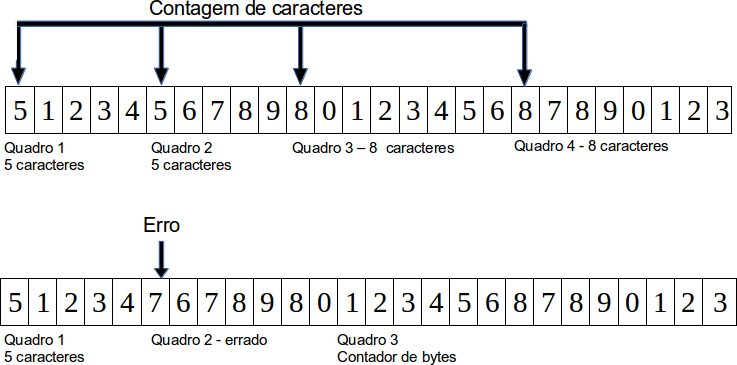
Figura 18: Fluxo de caracteres. a) Sem erros. b) Com erros
bytes de flag com inserção de bytes: este método insere bytes especiais no começo e término de cada quadro, esses bytes especiais são chamados de byte de flag, e foi criado para tentar resolver o problema do método de contagem de caracteres. Normalmente, o mesmo byte de flag é usado como delimitador de início e fim, onde dois bytes de flag consecutivos indicam o fim de um quadro e o início do próximo, assim, se o receptor perder a sincronização, ele pode procurar por dois bytes de flag para encontrar o final do quadro e o início do próximo quadro. Porém, ainda pode ocorrer de o byte de flag ocorrer nos próprios dados, interferindo o enquadramento. Para resolver este problema, quando o byte de flag ocorre nos próprios dados, é necessário que o transmissor insira um caractere de escape especial (ESC) antes de cada byte de flag acidental. A camada de Enlace da extremidade receptora remove o byte ESC antes de entregar os dados a camada de rede. Esta técnica é chamada de Inserção de Bytes (byte stuffing) e a figura 19 mostra alguns exemplos desta técnica.
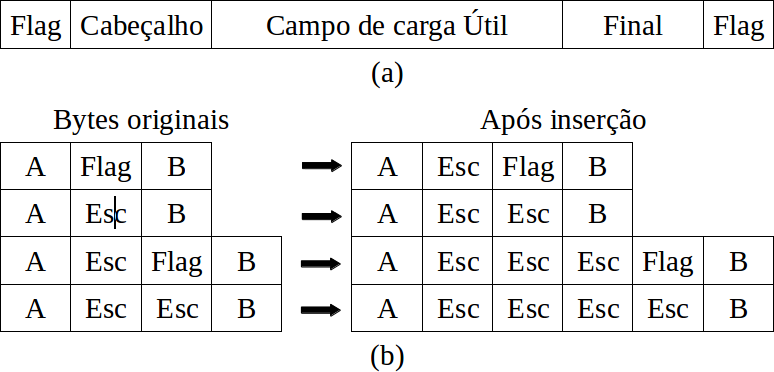
Figura
19: Exemplos de bytes de flag. a)Quadro delimitado por bytes de flag.
b)Quatro exemplos de sequências de bytes, antes e depois da inserção de
bytes.
flags iniciais e finais, com inserção de bits: o enquadramento também pode ser feito em nível de bit, ou seja, os quadros podem conter um número qualquer de bits, compostos de unidades de qualquer tamanho. Cada quadro começa e termina com um padrão de bits especiais: 01111110. Sempre que encontra uma sequência de cinco números 1 consecutivos nos dados, o transmissor insere um numero 0 no fluxo de bits que está sendo enviado. Essa inserção de bits é semelhante a inserção de bytes, e garante uma densidade mínima de transações, e assim, ajuda a camada física a manter a sincronização. Por esse motivo, o USB (Universal Serial Bus) utiliza a inserção de bits. A figura 20 mostra um exemplo desse método. Com esta inserção de bits, não existe ambiguidade pelo padrão de flags no limite entre dois quadros. Assim, se o receptor perder o controle dos dados, basta varrer a entrada em busca de flags, uma vez que eles nunca ocorrem dentro dos dados e sim, nos limites dos quadros.

Figura
20: Inserção de bits. a) Dados originais. b)Como os dados são exibidos
na linha. c)Como os dados são armazenados na memória após a remoção de
bits.
violações de codificação da camada física: este método usa um atalho da camada física, onde busca alguns sinais reservados para indicar o início e o final dos quadros, ou seja, são feitos violações de código para delimitar os quadros. Assim, por serem sinais reservados, é fácil encontrar o início e o final de cada quadro sem a necessidade de inserir bits nos dados.
Sequencialização
Na
camada de enlace, nem todos os protocolos podem transportar pacotes do
mesmo tamanho, variando entre pacotes grandes e pequenos, como por
exemplo, os quadros Ethernet não podem conter
mais
do que 1.500 bytes de dados enquanto quadros para alguns enlaces de
longa distância não pode conter mais de 576 bytes. Essa quantidade
máxima de dados que um quadro pode carregar é denominado MTU (Maximum Transmission Unit).
O
datagrama IP é encapsulado dentro do quadro da camada de enlace para
ser transportado de um roteador até o próximo roteador. A MTU estabelece
um limite estrito para o comprimento de um datagrama IP. Com isso surge
um problema: ao longo de uma rota entre remetente e usuário, os enlaces
podem usar diferentes protocolos de camada de enlace, e esses
protocolos podem ter MTUs diferentes.
Para
exemplificar melhor esse problema, imagine um roteador interligando
diversos enlaces com diferentes protocolos com diferentes MTUs. Quando o
roteador recebe um datagrama IP de enlace, o roteador verifica a sua
tabela de repasse para determinar o enlace de saída (o problema surge
neste momento), se o enlace de saída possuir uma MTU menor do que o do
datagrama IP recebido, o roteador não pode repassar o datagrama IP
recebido pois a sua MTU é menor, o que significa que, de alguma forma, o
roteador terá que diminuir o tamanho do datagrama. A solução a este
problema é fragmentar os dados do datagrama IP em partes menores e
depois, enviar esses datagramas menores pelo enlace de saída. Esses
datagramas menores são denominados fragmentos.
Esses
fragmentos precisam ser reconstruídos antes de chegarem ao seu destino
final (na camada de transporte no destino), porém, se a reconstrução
fosse dever dos roteadores, prejudicaria o desempenho (dos roteadores),
dessa forma, essa tarefa de reconstruir os fragmentos ficou sobre
responsabilidade dos sistemas finais, a figura 21 mostra a fragmentação e
reconstrução IP.
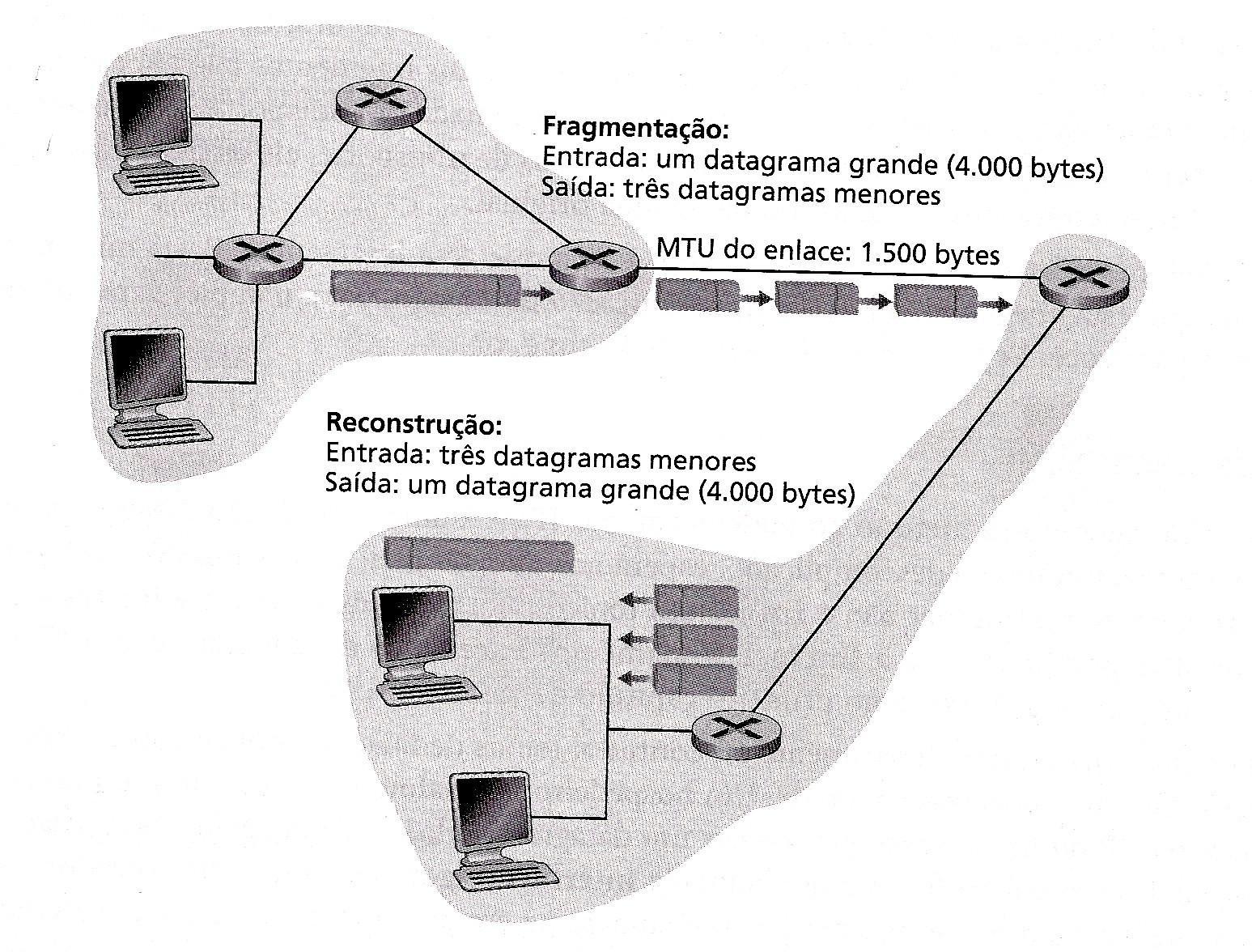
Figura 21: Fragmentação e Reconstrução IP.
Ao
receber vários datagramas da mesma fonte, o destinatário precisa saber
se esse datagramas são datagramas inteiros ou fragmentos de um datagrama
original de maior tamanho. Se forem fragmentos, o destinatário deverá
determinar quando recebeu o último fragmento e como deve ser
reconstruído os fragmentos para voltar a forma original do datagrama.
Para o destinatário conseguir realizar essas tarefas, existem campos de
identificação, flag e deslocamento de fragmentação no datagrama IP, a
figura 22 mostra o formato do datagrama IP.
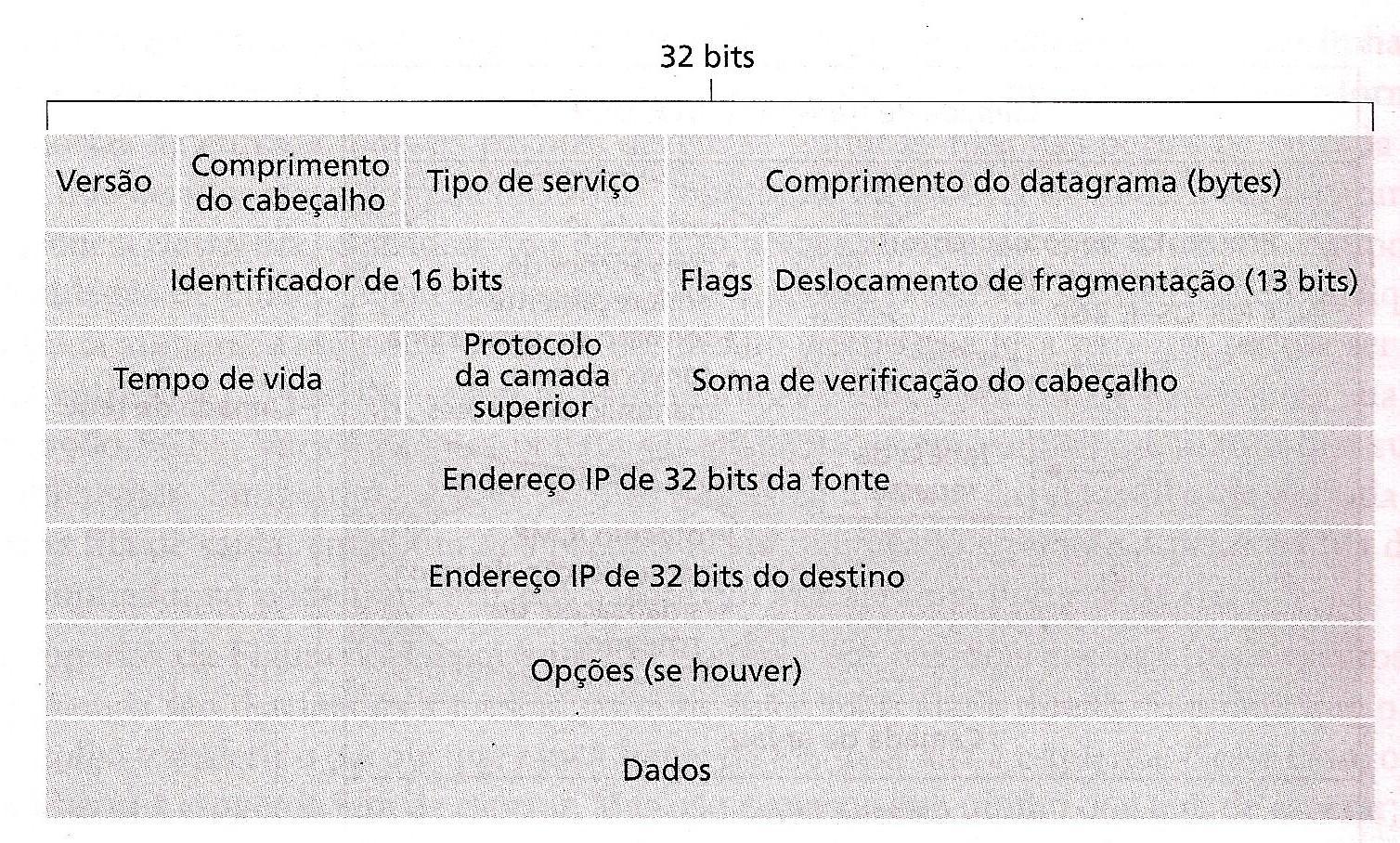
Figura 22: Formato do datagrama IPv4.
Quando
o datagrama for criado, o remetente deve colocar no datagrama o número
de identificação e o endereço da fonte e do destino. O remetente
incrementa o número de identificação para cada datagrama que envia.
Quando o roteador precisa fragmentar um datagrama, os fragmentos
resultantes são marcados com o endereço da fonte, o endereço do destino e
o número de identificação do datagrama original. Assim, quando o
destinatário receber uma série de datagramas de um mesmo remetente, o
destinatário pode verificar os números de identificação dos datagramas
para determinar quais são fragmentos de um mesmo datagrama de tamanho
maior.
Para
o destino ter certeza que chegou o último fragmento do datagrama
original, o último fragmento tem um bit de flag ajustado para 0 e os
demais fragmentos tem um bit de flag ajustado para
1.
Além disso, o campo de deslocamento específica a localização exata do
fragmento no datagrama IP original. O datagrama só é passado para a
camada de transporte após a camada de redes reconstituir os fragmentos
no datagrama original. Se um ou mais desses fragmentos não chegarem ao
destino, o datagrama incompleto será descartado.
Controle de Fluxo
Este
serviço é responsável por controlar o fluxo entre o transmissor e o
receptor, isso é importante, pois o transmissor pode transmitir quadros
mais rápido do que o receptor pode suportar, por exemplo, o transmissor é
um servidor rápido e potente e o receptor, uma máquina lenta e
inferior. Esta máquina lenta solicita uma página web do servidor, esse
por sinal, manda os quadros com as informações muito mais rápido do que a
capacidade do computador aguenta, e assim, o receptor irá perder alguns
quadros por não conseguir lidar com esta rapidez. Para evitar estas
perdas de quadros, pode ser usado duas abordagens:
do receptor.
controle de fluxo baseado na velocidade: o protocolo tem um mecanismo interno que limita a velocidade com que os transmissores podem enviar os dados, sem precisar usar o feedback do receptor, ou seja, o protocolo contém regras bem definidas sobre quando o transmissor pode enviar o quadro seguinte, essas regras impedem que os quadros sejam enviados até que o receptor tenha concedido permissão para a transmissão, implícita ou explicitamente. Como exemplo, podemos citar um receptor que pode informar quantos quadros ele pode receber, depois desses quadros transmitidos, o transmissor deve esperar que o receptor autorize novamente o envio de mais quadros.
Para-e-Espera
Essa
técnica de controle de fluxo é utilizada em comunicações semiduplex
(estudada no capítulo 6), por permitir somente tráfego alternado. Quando
o remetente envia um quadro, o destinatário, após verificar se
ocorreram erros de transmissão, envia um quadro de resposta aceitando ou
não o quadro recebido. No último caso, o remetente retransmite o último
quadro. O destinatário não pode enviar outro quadro até que o remetente
receba o quadro de resposta, somente depois, o destinatário pode enviar
a permissão para transmitir outro quadro. Se o destinatário não enviar o
quadro de resposta, o fluxo de dados entre o remetente e destinatário é
interrompido.
Esse
protocolo é ideal para transmitir quadros grandes, porém, os quadros
grandes geralmente são subdivididos em unidades menores para facilitar a
detecção de erros, reduzir a quantidade de dados a serem retransmitidos
no caso de um erro ser detectado, entre outros. Pela necessidade do
envio de quadros com aceitação ou rejeição do destinatário, o controle
de fluxo por para-e-espera torna-se pouco eficiente.
Janelas Deslizantes
Esta
técnica permite que o fluxo de mensagens mantenha-se praticamente
ininterrupto, desde que o transmissor seja capaz de manter o meio físico
repleto de quadros em trânsito, e o receptor capaz de aceitá-los. Para
isso, os quadros são numerados e transmitidos sequencialmente. Tanto o
transmissor quanto o receptor mantém janelas que indicam, no caso do
transmissor, quais quadros da sequência podem ser enviados, e no caso do
receptor, quais quadros ainda serão recebidos. O deslizamento destas
janelas mantém transmissor e receptor sincronizados além de permitir que
mais de um quadro esteja em trânsito pelo meio físico.
Esse protocolo utiliza o mecanismo de aceitação inclusiva –
determina que o receptor pode aceitar vários quadros por meio de uma
única mensagem de aceitação, ou seja, o receptor pode enviar uma única
mensagem indicando que, todos os quadros dentro da janela de recepção,
foram recebidos sem erros, e que o receptor está esperando pelo próximo
quadro.
Quando
a janela da recepção fica vazia, significa que todos os quadros foram
enviados e o transmissor deve aguardar uma mensagem de aceitação do
receptor para novos envios de quadros. Quando a janela do transmissor
fica vazia, pode significar que: a mensagem de aceitação ainda não
retornou (pode demorar devido a distâncias longas) ou o receptor não tem
condições de aceitar novos
quadros.
Essa técnica é considerado mais eficiente do que a técnica
para-e-espera e deve ser utilizado em canais de comunicação duplex.
Detecção de Erros
Nas
linhas telefônicas discadas, a taxa de erros é de 1 caractere errado
para cada 1000 enviados por transmissão assíncrona. Taxas de erros como
essa não são aceitáveis para muitas aplicações, podemos citar como
exemplo, em uma rede interna, essa taxa de erros inviabilizaria a
comunicação. Os métodos de detecção de erros serve para detectar o erro,
onde o transmissor deve computar um valor com base no conteúdo a ser
transmitido, o receptor, usando o mesmo algoritmo do transmissor,
calcula os dados recebidos: se os valores computado, do transmissor e do
receptor, forem iguais, significa que os dados foram recebidos sem
erro, caso contrário, provavelmente terá que retransmitir os dados.
Neste capítulo, serão descritas algumas técnicas de detecção de erro.
Teste de Paridade
O
teste de Paridade tem como função, enviar um bit a mais, denominado bit
de paridade, para a detecção de erros, esse bit a mais é calculado pelo
transmissor e enviado junto com os demais bits, quando o receptor
recebe a sequência de bits ele descarta o bit de paridade e faz o mesmo
cálculo que o transmissor e confere os resultados: se forem iguais, não
houve erro de transmissão, caso contrário, deve-se enviar novamente a
sequência de bits. Existem dois tipos de bit de paridade, que são:
Paridade Horizontal e Paridade Vertical, que serão estudadas nas
próximas subseções.
Paridade Horizontal
Também conhecido como Paridade Longitudinal (LRC – Longitudinal Redundancy Checking),
utiliza um bit de paridade para a detecção de erros de transmissão na
horizontal. A ideia do bit de paridade par é deixar a quantidade de
números 1 em par, na figura 23, a 5ª linha possui os números 00011010,
ou seja, possui três números 1, que é uma quantidade ímpar, então, é
adicionado um número 1 no final da sequência – 000110101 – ficando com
quatro números 1. A 6ª linha possui os números 11000110, que possui
quatro números 1, que é uma quantidade par, então, é só adicionar o
número 0. O transmissor computa esse bit adicional, e anexa-o a cada
caractere antes do envio, após todos os bits de um caractere serem
recebidos, o receptor remove o bit de paridade, executa o mesmo
procedimento que o transmissor, e confere se o resultado foi o mesmo
valor do bit de paridade. Dessa forma, se ocorrer a inversão do bit na
transmissão, o receptor detectará o erro, porém, se dois bits forem
invertido, o erro não será detectado.
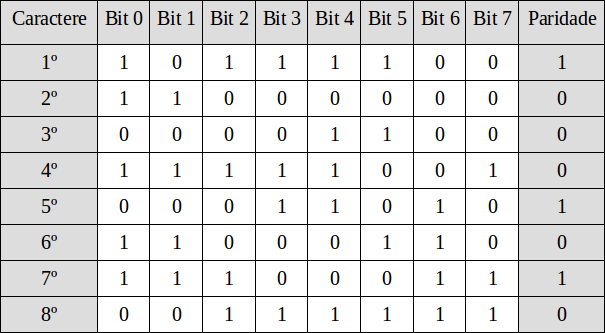
Figura 23: Exemplo de bit de Paridade Horizontal
Paridade Vertical
Também
conhecido como VRC (Vertical Redundancy Checking) ou Paridade Simples, é
idêntico ao Paridade Horizontal, porém o bit de paridade para a
detecção de erros de transmissão é na vertical. Analisando a figura 24, a
1ª coluna possui os números 10111100, ou seja, possui cinco números 1,
que é uma quantidade ímpar, então, é adicionado um número 1, ficando
assim, com seis números 1. A 2ª coluna possui os números 11000000,
possui dois números 1, que é uma quantidade par, então, é só adicionar o
número 0. Assim como na LRC, o transmissor computa esse bit adicional, e
anexa-o a cada caractere antes do envio, o receptor, após receber todos
os bits de um caractere, remove o bit de paridade, executa o mesmo
procedimento que o transmissor, e confere se o resultado foi o mesmo
valor do bit de paridade. Dessa forma, se ocorrer a inversão do bit na
transmissão, o receptor detectará o erro, porém, se dois bits forem
invertido, o erro não será detectado.
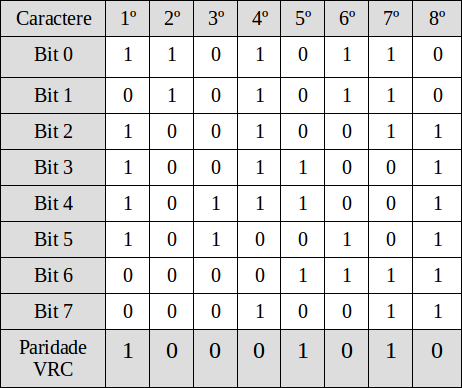
Figura 24: Exemplo de Bit de Paridade Vertical
Checksum
Para
calcular o checksum, o transmissor considera os dados como uma
sequência de inteiros binários, calcula a soma e coloca no final da
mensagem. Um exemplo de checksum é a soma da verificação de 16 bits –
usada em todos os pacotes de rede como parte do protocolo IP (Protocol
Internet) – para isso, as mensagens são divididas em conjuntos de 16
bits, esses 16 bits são divididos em blocos de 4 bits e somados
separadamente, no final é feito a soma dos resultados dos quatro blocos.
Neste método, ainda pode ocorrer erros, na figura 25, as duas primeiras
colunas mostram o checksum sem erros; a 3ª e 4ª coluna mostra como o
checksum pode falhar na detecção de erros na transmissão: se houver um
erro de transmissão e inverter o valor do segundo bit de cada
transmissão, quando o receptor for comparar os resultados, o valor total
da soma será a mesma que o transmissor enviou e o receptor concluirá
que na transmissão não ocorreu erros, porém os dados transmitidos não
foram os mesmos; a 5ª e 6ª coluna mostra como o checksum pode falhar e
ser perceptível a falha: houve um erro na transmissão e o 1ª bit foi
invertido, porém a soma final foi diferente e o receptor percebeu o
erro.

Figura 25: Detecção de Erro utilizando o Checksum
CRC
A técnica de Verificação de Redundância Cíclica (CRC – Cyclic Redundancy Checks) é mais eficiente do que o Checksum. Para isso, o hardware precisa de um registrador de deslocamento ( shift register)
e uma unidade OU exclusivo (XOR). O registrador de deslocamento possui
um número fixo de bits (por exemplos 16 bits), e estes bits passam de um
em um pelo registrador de deslocamento e só podem sair do registro
quando um bit novo entrar, cada registrador de deslocamento tem uma
saída que dá o valor do bit mais a esquerda. Sempre que o bit muda, a
saída muda.
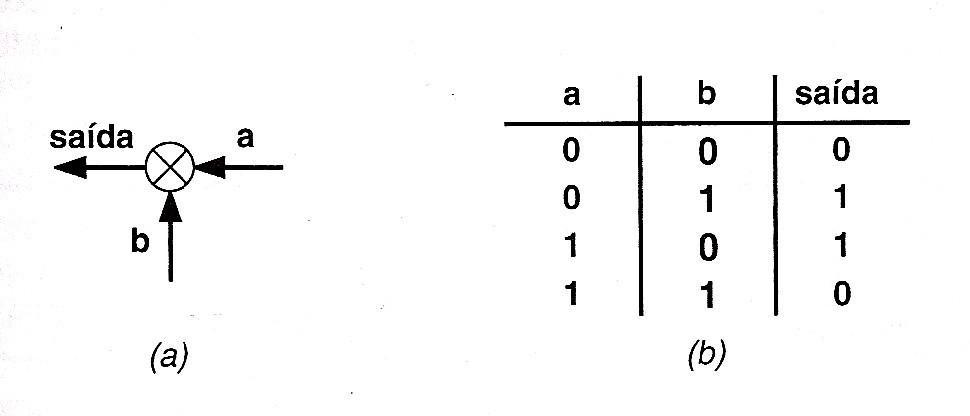
Figura
26: (a) Um diagrama de hardware que calcula um ou exclusivo e (b) o
valor de saída para cada uma das quatro combinações de valores de
entrada. Tais unidades de hardware são usadas para calcular uma CRC.
A
Figura 27 mostra um exemplo de CRC, que possui como entrada a mensagem
101010. Para a realização do CRC, é necessário fazer um OU exclusivo
entre o primeiro numero à direita do OU exclusivo e o primeiro número da
Entrada B e o resultado será deslocado uma casa à esquerda, após passar
por todos os três OU exclusivos da linha, os seus resultados são
armazenados na linha de baixo que novamente passará pelo processo, e no
final, a mensagem a ser transmitida é 10101011010110.
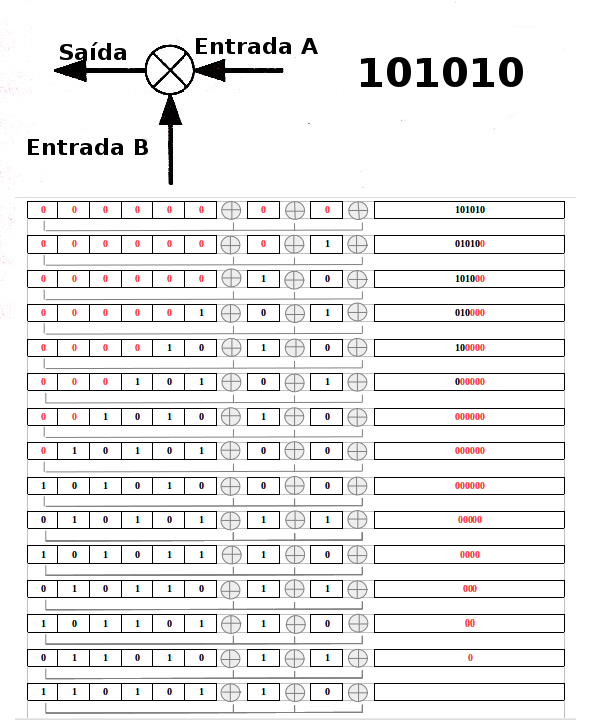
Figura 27: Exemplo de CRC.
Protocolo Kermit
Esse
protocolo serve para a transferência de arquivos entre computadores.
Suporta enlaces ponto-a-ponto com transmissões assíncronas semiduplex. É
um protocolo simples e robusto que permite a transferência de quaisquer
tipos de dados, tais como arquivos binários, executáveis e ASCII de
sete e oito bits.
O
protocolo Kermit está presente nas distribuições GNU-Linux na forma de
software de comunicação com o nome kermit, em algumas distribuições
Linux o software é chamado de c-kermit, e no Windows, o aplicativo
HyperTerminal suporta o Kermit, e funciona a uma taxa de 19.200 bps.
Esse protocolo permite a comunicação entre diferentes padrões de sistema
operacional, como por exemplo UNIX e Windows, isso é possível através
da Camada de Enlace, e pode ser empregado também para auxiliar na
configuração de modens externos.

Figura 28: Formato de quadro do Kermit.
de:
O formato dos quadros empregados nesse protocolo pode ser visualizado na tabela 1, e consiste
Cabeçalho: consiste em caracteres visíveis do alfabeto.
Marca: denota o início de um quadro.
Tamanho: define o número de caracteres em um quadro e inclui o campo TDP e, normalmente, não pode exceder 96 caracteres.
Sequência: usado para ordenar os quadros e consiste em um contador de módulo-64.
Tipos: indica o conteúdo do quadro e contém caracteres que identificam quadros de dados, aceitação, rejeitação, entre outros.
Dados: pode conter dados, informações de controle relacionadas a transferência de arquivos ou estar vazio.
TDP: usado para detectar erros de transmissão, podendo usar o teste de paridade longitudinal ou de divisão polinomial. O valor contido nesse campo é computado sobre todos os caracteres do quadro, exceto o campo marca e o próprio campo TDP.
No
protocolo kermit, há vários tipos de quadros, D, Y, N, S, F, B, Z, X,
A, T e E, que podem ser visualizados na figura 29, e alguns são
descritos à seguir:
Quadro Y: indica que o receptor aceitou o último quadro enviado.
Quadro N: indica a rejeição do último quadro recebido e sinaliza que a transmissão deve ser feita novamente.
Quadro X: indica que o campo de dados deve ser mostrado no terminal do receptor.
Quadro A: indica que os atributos de um arquivo incluem características como dono, datas e permissões.
Quadro S: são usados pelo transmissor e receptor para definir os parâmetros a serem utilizados durante a transferência de arquivos. Na definição de parâmetros, o receptor estabelece o tamanho máximo de quadro em função de sua capacidade de tratamento de quadros recebidos, o intervalo máximo de espera antes do início do tratamento de erros, entre outras variáveis.
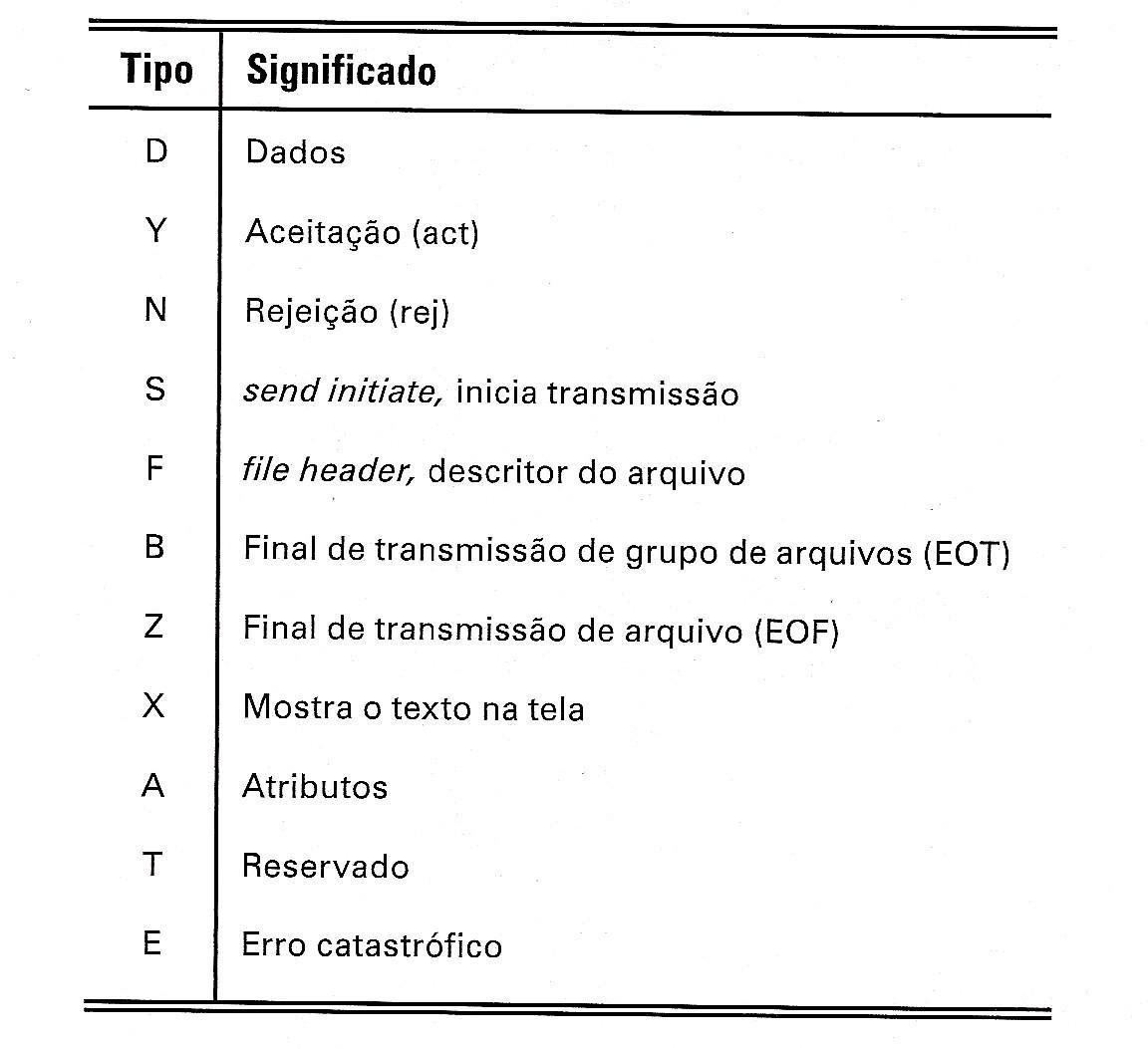
Tabela 1: Tipos de quadro do Kermit.
Os
caracteres no cabeçalho de um quadro deve ser visíveis, a contagem do
tamanho do quadro começa em 32, que corresponde ao caractere espaço.
Existem quadros mais curtos que contêm somente os campos sequência, tipo
e TDP e apresentam em seu campo tamanho o caractere '#'. Os quadros
mais longos possuem 96 caracteres, destes 96, transporta 91 em dados, e
apresenta no campo tamanho o caractere '}'. A sequência de quadros
inicia-se no caractere espaço e termina no caractere ' '.
Antes
do início da transmissão de dados, o kermit pré processa o conteúdo do
arquivo, afim de evitar que algum caractere presente no arquivo seja mal
interpretado pelos sistemas de comunicação das duas máquinas. Após,
inicia-se a conexão entre as máquinas e em seguida, a transferência de
arquivos. Pelo fato da comunicação ser semi-duplex, as máquinas alternam
os papéis de transmissor e receptor. A máquina que está enviando o
arquivo é chamada de remetente e a que está recebendo o arquivo é
chamada de destinatário, a figura 29 mostra a sequência de eventos na
transmissão de dados.
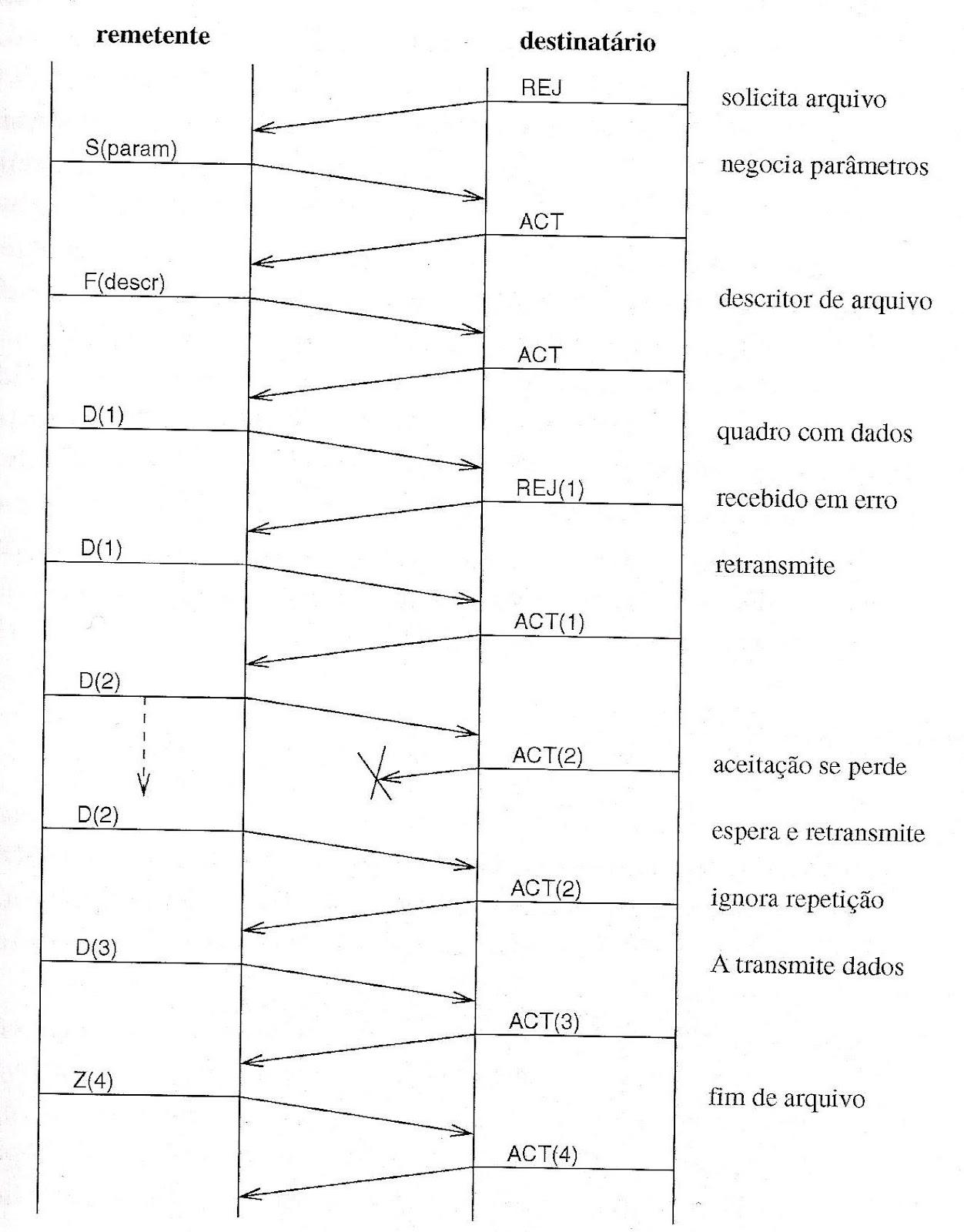
Figura 29: Transferência de arquivo com Kermit.
O
processo de transferência de arquivos tem início com um quadro N pelo
destinatário, depois, as duas máquinas negociam parâmetros de
transmissão e quando chegam a um acordo o remetente envia um quadro F
contendo o descritor do arquivo, incluindo seu nome e outros atributos.
Se o descritor for recebido corretamente, o remetente começa a
transferência do arquivo através de vários quadros D, que devem ser
aceitos e reconhecidos individualmente pelo destinatário. No final da
transferência, o remetente transmite um quadro tipo Z, sinalizando o fim
do arquivo. Durante a transmissão dos quadros, se o destinatário
detectar erro no quadro recebido, transmite um quadro N, e o remetente
deverá retransmitir o último quadro enviado.
Códigos Corretores de Erro
Esses códigos, também conhecidos como Códigos de Bloco são Códigos de Correção de Erro Direta (FEC – Forward Error Correction), e permitem que um número limitado de erros sejam detectados e corrigidos sem retransmiti-los.
Todos
os códigos acrescentam redundância às informações enviadas, ou seja, um
quadro consiste de m bits de dados (mensagem à ser enviada) e r bits
redundantes (verificação). Nesses códigos, os r bits de redundância são
calculados como uma função dos m bits de dados.
Para
entendermos o erro, vamos supor que duas palavras de código serão
transmitidas e recebidas – 10001001 e 10110001. Através da operação XOR,
é possível determinar quantos bits correspondente diferem. Na figura
30, através da operação XOR é possível identificar os três bits com
valor um, estes três bits são os divergentes.
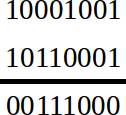
Figura 30: Bits divergentes.
O
número de posições em que duas palavras de código diferem entre si é
denominado Distância de Hamming e significa que, se duas palavras de
código estiverem a uma distância Hamming uma da outra igual a d, será
necessário corrigir d erros de bits.
Dado
os algoritmos de detecção de erros (Bit de Paridade, Checksum e CRC), é
possível construir uma lista das palavras de código válidas e assim,
encontrar as duas palavras de código com a menor distância de Hamming.
Tanto as propriedades de detecção quanto as de correção de erros de um
código, dependem de sua distância de Hamming. Para detectar d erros (de
forma confiável), é necessário um código de distância d + 1, com esse
código, não há como d erros de bits transformarem uma palavra de código
válida em outra.
Como
um exemplo simples, podemos citar um código com distância 5, o que
significa que ele pode corrigir erros duplos ou quádruplos, e contêm
apenas quatro palavras válidas:
1. 0000000000
2. 0000011111
3. 1111100000
4. 1111111111
Ao
receber uma mensagem 0000000111 e supormos erros de 1 ou 2 bits, o
receptor saberá que a palavra código original foi 0000011111. Porém,
pode ter acontecido um erro triplo que transformou 0000000000 em
0000000111, este erro não será corrigido de forma adequada. Porém, se
esperarmos todos esses erros, podemos detectá-los. Nesse exemplo, não
podemos corrigir erros duplos e detectar erros quádruplos, pois para
isso, seria necessário interpretar a palavra de código recebida de duas
maneiras. Neste capítulo iremos estudar o Código de Hamming e o Código
de Reed-Solomon.
Códigos de Hamming
O
código de Hamming foi muito usado para o controle de erros nos sistemas
de comunicações digitais. Esse código opera sobre bits individuais.
Nesse código, os bits da palavra de código são numerados
consecutivamente da esquerda para a direita, onde o bit mais da esquerda
é o 1, o próximo bit imediatamente à sua direita é 2, e assim por
diante. Os bits que são potência de dois (1,2,4,8,16,...) são os bits de
verificação, os demais bits (3,5,6,7,9,...) são preenchidos com os m
bits de dados. Cada bit de verificação força a paridade de algum
conjunto de bits a ser par ou ímpar. Um bit somente é verificado por
aqueles bits de verificação que ocorrem em sua expansão, ou seja, o bit
11 é verificado pelos bits 1, 2 e 8.
Nesse
exemplo, o código resultante é de distância igual a 3, ou seja, pode
corrigir erros simples ou detectar erros duplos. O receptor, ao receber
uma palavra de código, refaz os cálculos do bit de verificação,
incluindo os valores dos bits de verificação recebidos. Se os bits de
verificação estiverem corretos, e se a paridade for par, o resultado de
cada verificação deve ser igual a 0, e a palavra de código é válida,
caso contrário, se os resultados da verificação não for 0, um erro foi
detectado. Este conjunto de resultados é denominado síndrome de erro, e é
usada para localizar e corrigir o erro. A figura 31 mostra um exemplo
de erro de um bit.

Figura 31: Exemplo de um código de Hamming (11,7) corrigindo um único erro.
Códigos de Reed-Solomon
Os
códigos de Reed-Solomon operam sobre m símbolos de bit, diferentemente
dos códigos de Hamming, que operam sobre bits individuais, por esse
motivo, esse código é mais complicado do que o código de Hamming. Nos
códigos de Reed-Solomon, cada polinômio de grau n é determinado
unicamente por n + 1 pontos. Como exemplo, podemos imaginar dois pontos
de dados que representam uma linha, estes dois pontos são enviados com
mais dois pontos de verificação escolhidos para que se encontrem na
mesma linha. Se ocorrer erro em um desses pontos, pode-se recuperar os
dados passando uma linha pelos pontos recebidos. Os três pontos sem
erros estarão na linha, e o ponto com erro não estará. Encontrando a
linha, o erro será corrigido.
Esse
código funciona de maneira semelhante ao exemplo citado, porém, são
definidos como polinômios que operam em campos finitos. Para símbolos de
m bits, as palavras de código possuem 2 m – 1 símbolos de comprimento. Um jeito mais simples, é tornar m = 8, no qual os símbolos são bytes,
dessa
forma, uma palavra de código tem 255 bytes de comprimento. O código
(255, 233) é bastante utilizado, ele acrescenta 32 símbolos redundantes a
233 símbolos de dados, e por isso, pode corrigir até 16 erros de
símbolo – os símbolos podem ser consecutivos e ter 8 bits cada um,
assim, uma rajada de erros de até 128 bits pode ser corrigida. Por serem
baseados em símbolos de m bits, tanto o erro de um único bit como um
erro em rajadas de m bits são tratados como um erro de símbolo.
Os
códigos de Reed-Solomon são capazes de corrigir erros que aparecem em
rajadas, e por isso, são bastante usados na prática na DSL, dados sobre
cabo, comunicações por satélite, e de forma mais ubíqua em CDs, DVDs e
Blu-ray.
Compactação
A
compactação de dados, também conhecida como compressão de dados, é um
processo de redução do espaço ocupado por dados em um determinado
dispositivo. A ideia é diminuir a quantidade de bytes dos dados sem
causar alterações, ou seja, utilizar a compactação dos dados sem perdas e
representar o texto original em menos espaço. Para fazer isso, basta
substituir os símbolos do texto por outros que usam um número menor de
bits ou bytes.
A
compactação de dados é necessário para arquivos digitais muito grande
ocuparem menos espaço de armazenamento ou para ser possível a sua
transmissão por um meio de comunicação. Existem vários métodos de
compactação, porém, estudaremos apenas o LZW.
LZW
O algoritmo de compactação de dados LZW (Lempel-Ziv-Welch)
é baseado na localização e no registro das padronagens de uma
estrutura, foi desenvolvido e patenteado em 1984 por Terry Welch, e é
uma derivação do algoritmo LZ78 que foi desenvolvido por Abraham Lempel e
Jacob Ziv em 1978 , o algoritmo LZ78 se baseia na construção de um
dicionário que, no início se encontra vazio, e conforme o arquivo vai
sendo lido, caractere por caractere, cada sequência de caracteres não
encontrado no dicionário é adicionado ao dicionário e ganha um código.
As sequências que já se encontram no dicionário são substituídas pelo
seu código no dicionário.
O
algoritmo LZW é comumente utilizado em imagens que não podem perder a
definição original. O algoritmo lê os valores de pixels de uma imagem
bitmap e elabora uma tabela de códigos onde se representam as
padronagens repetidas dos pixels encontrados. O LZW, através da
compactação, reduz as imagens gráficas a 1/3 ou 1/4 do tamanho original.
Imagens com grandes blocos de cor contínua ou com cores repetidas podem
reduzir até 1/10 do tamanho original.
O LZW utiliza os formatos TIFF e GIF: o primeiro, TIFF (Tagged Image File Format), é o formato opcional, contém a descrição de cada pixel para imagens digitais – conhecido como bitmap no Brasil; e GIF (Graphics Interchange Format), é o formato padrão, possui um formato de imagem de mapa de bits tanto para imagens fixas quanto para animações.
O
algoritmo do LZW é uma variação do algoritmo LZ78, e elimina a
necessidade de emitir um caractere junto com o endereço do dicionário.
Para isso, o dicionário é inicializado com todos os símbolos do alfabeto
– na codificação ASCII existem 256 símbolos de 0 a 255. A entrada é
lida e acumulada em uma cadeia de caracteres que chamaremos de I, sempre
que a sequência contida em I não estiver no dicionário, é emitido o
código correspondente a versão anterior de I (sem o último caractere) e
adicionado I ao dicionário, I volta a ser inicializado com o último
caractere lido e o processo continua até que não haja mais caracteres na
entrada.
Pseudocódigo
O dicionário contém todos os símbolos do alfabeto e I está vazio;
c <= próximo caractere da sequência de entrada;
a string I + c existe no dicionário?
Se sim,
I <= I + c;
se não,
coloque a palavra código correspondente a I na sequência codificada;
adicione a string I + c ao dicionário;
I <= c;
existem mais caracteres na sequência de entrada?
Se sim,
volte ao passo 2;
se não,
coloque a palavra código correspondente a I na sequência codificada;
fim.
Pseudocódigo para descompactação
O dicionário contém todos os símbolos possíveis;
cw <= primeira palavra código na sequência codificada;
coloque a string (cw) na sequência de saída;
pw <= cw;
cw <= próxima palavra código da sequência codificada;
a string (cw) existe no dicionário?
Se sim,
coloque a string (cw) na sequência de saída;
P <= string (pw);
C <= primeiro caractere da string (cw);
adicione a string P + C ao dicionário;
se não,
P <= string (pw);
C <= primeiro caractere da string (pw);
coloque a string P + C na sequência de saída e adicione-a ao dicionário;
existem mais palavras código na sequência codificada?
Se sim,
volte ao passo 4;
se não,
fim.
Ethernet
A rede Ethernet é um protocolo para redes locais e foi desenvolvida na década de 1970 nos laboratórios do Xerox Palo Alto Research Center, posteriormente, foi revisado e melhorado em conjunto pelas empresas Intel, Xerox e Digital Equipment Corporation (DEC).
Em 1985, o IEEE (Institute of Electrical and Electronics Engineers –
Instituto de Engenheiros Eletricistas e Eletrônicos) publicou o padrão
IEEE 802.3 para estas redes locais de baixo custo.
A
Ethernet foi desenvolvida na década de 1970, porém, a origem da ideia
veio de Abramson quando desenvolveu a rede denominada Aloha, mostrando
que múltiplos nós na rede podiam usar o mesmo canal para comunicação e
enviar dados a qualquer momento. A principal diferença entre a Aloha e a
Ethernet é que, a primeira permitia que qualquer nó transmitisse dados a
qualquer momento e não permitia que um nó detectasse que outro nó
estava transmitindo dados e não lidava com as colisões (colisões ocorrem
quando dois dados tentam transmitir dados simultaneamente), exigindo
assim, muitas retransmissões; a segunda, Ethernet, foi projetada com
monitoramento de transporte e detecção de colisões.
A
Ethernet possui várias versões – 10 Mbps, 100Mbps, 1 Gbps e 10 Gbps–
diferenciadas principalmente pelo comprimento máximo que o sinal será
propagado. As seções a seguir estudarão essas 4 versões de Ethernet.
Redes Ethernet de 10 MBPS
A
Ethernet de 10Mbps usa a técnica de controle de acesso ao meio CSMA/CD,
essa rede foi muita usada em LANs e possui uma velocidade de
sinalização de 20MHz. Nestas implementações, os dados são codificados
usando o código de Manchester.
As redes Ethernet de 10 Mbps se dividem em várias especificações: 10Base2, 10Base5, 10Base-T, 10Base-FBb, 10Base-FLb e 10Base-FPb, estas especificações são descritas na tabela 2.
Descrição | Tipo |
10Base2 | 10Base5 | 10Base-T | 10Base-FBb | 10Base-FLb | 10Base-FPb |
Cabo | Coaxial Fino (RG-58) | Coaxial Grosso (RG-8) | UTP Categorias 3, 4 ou 5 | Fibra | Fibra | Fibra |
Topologia | Barramento | Barramento | Estrela | Ponto-a-ponto | Ponto-a-ponto | Estrela |
Conectores | BNC | Transceptores, cabo transceptor, AUI de 15 pinos | RJ-45, painéis, repetidoras | Transceptores de fibra ótica, ST | Transceptores de fibra ótica, ST | Transceptores de fibra ótica, ST |
Comprimento de Segmento Máximo | 185 metros | 500 metros | 100 metros | 2000 metros | 2000 metros | 500 metros |
Número máximo de nós por segmento | 30 – mínimo de 0,5 entre nós | 100 – espeçados em incrementos de 2,5 metros | 2 | 2 | 2 | 33 |
Diâmetro Máximo | 925 metros | 2500 metros | 500 metros | 2500 metros | 2500 metros | 2500 metros |
Outros | Terminação de 50 ohm no final de cada cabo; uma ponta aterrada. | Terminação de 50 ohm no final de cada cabo; uma ponta aterrada. | Cada nó é conectado direta ou indiretamente via hub. | Usada somente para interconectar repetidoras Ethernet; máximo 15 repetidoras. | Usado para interconectar estações de trabalho ou repetidoras; máximo 5 repetidoras. | Usado em instalações pequenas como redes locais para grupos de trabalhos. |
Tabela 2: Resumo das especificações IEEE 802.3 e Ethernet de 10Mbps.
Barramento
Nesta
topologia, todas as estações se conectam através de um meio de
transmissão linear (Barramento). Uma transmissão de qualquer estação se
propaga em ambas as direções no barramento e pode ser recebida por todas
as outras estações. Quando a transmissão chega nas pontas do
barramento, ela é removida através do terminador (conector especial que
deve ser instalado nas extremidades do barramento para absorver os
sinais das transmissões e evitar que estes sinais retornem na forma de
interferência).
Na
topologia Barramento, existe dois problemas: primeiro, como a
transmissão de qualquer estação pode ser recebida por todas as outras
estações, é necessário, de alguma forma, indicar para qual estação será a
transmissão; em segundo, é necessário um mecanismo para regular a
transmissão, ou seja, para não haver duas ou mais transmissões
simultaneamente e para evitar que uma estação decida transmitir
continuamente por um longo período, bloqueando o acesso de outros
usuários.
Para
solucionar o primeiro problema, cada estação ligada ao barramento,
recebe um endereço de destino. As estações transmitem dados em blocos
pequenos, denominados quadros, que é parte de dados que a estação deseja
transmitir com um cabeçalho contendo informações de controle e o
endereço de destino.
Como
exemplo podemos citar um esquema com 5 estações: A, B, C, D e E. A
estação D quer transmitir um quadro de dados para a estação A. À medida
que o quadro se propaga pelo barramento em ambas as direções, passa pela
estação E, que observa o endereço e ignora o quadro, passa pelas
estações C e B, que assim como a estação E, observam o endereço e
ignoram o quadro, porém, quando o quadro passar pela estação A, observa o
endereço e copia os dados do quadro enquanto eles passam.
A
estrutura de quadro também soluciona o segundo problema, a
regulamentação de acesso. Para isso, as estações se alternam de forma
cooperativa no envio de quadros usando o controle de acesso ao meio
CSMA/CD, ou seja, a estação que deseja transmitir escuta o meio para
verificar se
existe
outra transmissão em andamento, se o meio estiver ocioso, a estação
pode transmitir, caso contrário, se o meio estiver ocupado, a estação
deve continuar escutando até que o meio esteja ocioso e transmitir
imediatamente; se for detectada colisão durante a transmissão, a estação
deve transmitir um sinal de colisão para que as demais estações saibam
da colisão e depois, parar de transmitir; após, deve esperar um tempo
aleatório (denominado backoff), e depois tentar transmitir novamente.
Estrela
Nesta
topologia, cada estação é conectada ao hub (dispositivo que tem a
função de interligar os computadores de uma rede local) por meio de duas
linhas (transmissão e recepção), essa linha normalmente consiste em
dois pares trançados não-blindados. O hub atua como um repetidor, ou
seja, quando uma estação transmite, o hub repete o sinal na linha de
saída para todas as estações. Devido à alta velocidade de dados e às
qualidades de transmissão fracas do par trançado não-blindado, o
comprimento limita-se aproximadamente 100 metros.
Embora
esse esquema seja fisicamente uma estrela, na lógica possui os mesmos
conceitos de um barramento, pois uma transmissão de qualquer estação é
recebida por todas as outras estações e, se duas estações transmitem ao
mesmo tempo, haverá uma colisão.
Switches
A
Switche, também conhecida como Comutador Layer 2, é mais usada do que o
Hub e o Barramento principalmente em LANs de alta velocidade. Quando um
quadro é transmitido por determinada estação, esse quadro é direcionado
para a linha de saída desejada para ser entregue ao destino pretendido.
Enquanto isso acontece, as demais linhas que não estão sendo utilizadas
podem ser usadas para a comutação de outro tráfego.
Além
disso, a Switche possui alguns recursos, como por exemplo: cada
dispositivo conectado possui uma capacidade dedicada igual à da LAN
original inteira, para isso, a Switche deve ter capacidade suficiente
para acompanhar todos os dispositivos conectados; para usar a Switche
não é necessário mudança no software ou hardware dos dispositivos
conectados; podem ser conectados outros dispositivos na Switche,
aumentando a capacidade da Switche.
Uma
Switche pode ser vista como uma versão full-duplex (estudado na próxima
seção) do hub, podendo incorporar lógica que lhe permite funcionar como
uma ponte de múltiplas portas. Além disso, a Switche realiza as funções
de reconhecimento de endereço e encaminhamento de quadro no hardware,
além de possuir vários caminhos de dados paralelos e podendo lidar com
vários quadros ao mesmo tempo.
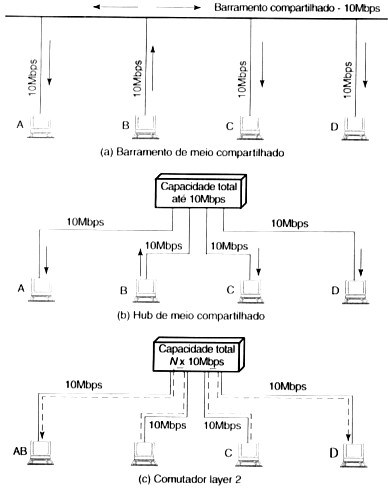
Figura 32: Diferença entre Barramento, Hub e Comutador.
A
figura 32 mostra a diferença entre a Topologia Barramento, a Topologia
Estrela e o uso de Switches. A figura 32a usa a topologia Barramento, e
mostra a estação B transmitindo, essa transmissão vai para ambas
direções e atravessa as linhas de acesso de cada uma das outras estações
conectadas, nessa configuração, todas as estações compartilham a
capacidade do canal de 10Mbps. A figura 32b usa a topologia Estrela, e
mostra a estação B transmitindo, essa transmissão sai de B para o hub, e
do hub para as linhas de recebimento em cada uma das outras estações
conectadas. A figura 32c usa a Switche, e mostra que B está transmitindo
um quadro para A e, ao mesmo tempo, C está transferindo um quadro para
D, dessa forma, a vazão atual na LAN é de 20Mbps, embora cada
dispositivo está limitado a usar 10Mbps.
Full-Duplex
A
Ethernet tradicional usa half-duplex para transmissão e recepção de
quadros, no qual não pode fazer os dois simultâneos, ou seja, a estação
transmite ou recebe um quadro. Com a operação full- duplex, uma estação
pode transmitir e receber simultaneamente. Desta forma, dobra-se a
velocidade de transferência, ou seja, uma rede Ethernet de 10Mbps
torna-se 20Mbps; a rede Ethernet de 100Mbps torna-se 200 Mbps, e assim
por diante.
Para
uma rede Ethernet trabalhar como full-duplex, algumas mudanças são
necessárias. As estações conectadas precisam ter placas adaptadoras
full-duplex. Se o ponto central for uma Switche, cada estação constitui
um domínio de colisão separado e, não existirá colisões, nesse caso, não
será mais necessário o uso do algoritmo CSMA/CD. Entretanto, o mesmo
formato de quadro MAC 802.3 é usado e as estações conectadas podem
continuar a executar o algoritmo CSMA/CD, porém nenhuma colisão será
detectada.
Redes Ethernet de 100 MBPS
Com
o passar do tempo, muitas instalações precisavam de maior largura de
banda, além da existência de diversas LANs de 10Mbps conectadas com
muitos repetidores, hubs e switches, parecendo um labirinto, e a largura
de banda máxima de um computador era limitada pelo cabo que o conectava
a Switche, com isso surgiu a necessidade de uma LAN mais rápida. Em
1992, a IEEE reuniu o comitê do 802.3, com instruções para produzir uma
LAN mais rápida sendo compatível com as LANs Ethernet existentes,
surgindo a 802.3u (também conhecido como Fast Ethernet) em junho de
1995.
A
Ethernet de 100Mbps permite a interconexão somente por hubs ou
Switches. É usado o algoritmo CSMA/CD para compartilhar o meio. Por
razões de velocidade e distância, surgiram apenas 3 especificações, que
são:
100Base-T4: usa o esquema de par trançado sem blindagem (UTP), da categoria 3, que emprega uma velocidade de sinalização de 25MHz e utiliza a codificação Manchester. Para atingir a largura de banda necessária, é exigido quatro pares trançados, um sempre é para o hub, um sempre é do hub e os outros dois são comutáveis para a direção da transmissão atual. Utiliza um esquema complicado que envolve envio de dígitos ternários com três níveis de tensão. Pelo fato da telefonia padrão usar quatro pares por cabo, pode-se usar a fiação já existente para esse esquema, não podendo usar junto com o telefone. Esse esquema pode atingir uma distância de até 100 metros.
100Base-TX: usa o esquema de par trançado sem blindagem de categoria 5, além do projeto ser mais simples, possui uma velocidade de sinalização de 125 MHz. São necessários apenas dois pares trançados por estação: um para o hub e outro a partir dele. Utiliza a codificação 4B/5B, onde quatro bits de dados são codificados e enviados a 125 MHz para fornecer 100Mbps. Esse sistema é full-duplex, ou seja, podem transmitir a 100Mbps em um par trançado e recebem em 100Mbps em outro par trançado ao mesmo tempo. Esse esquema pode atingir uma distância de até 100 metros.
100Base-FX: utiliza dois filamentos de fibra multimodo, um para cada sentido, sendo também full-duplex, com 100Mbps em cada sentido. Nesse sistema, a distância entre uma estação e a Switche pode ser de até 2Km.
Redes Ethernet de 1 GBPS
Após
o sucesso da Fast Ethernet, o comitê 802.3 começou a desenvolver uma
Ethernet ainda mais rápida, e em 1999 surgiu o padrão 802.3ab apelidada
de Gigabit Ethernet, dez vezes mais rápida do que a Ethernet anterior e
manteve a compatibilidade com os padrões Ethernet existentes. Essa nova
Ethernet ofereceu o serviço de datagrama não confirmado com unicasting e multicasting,
continuou com o mesmo esquema de endereçamento de 48 bits e manteve o
mesmo formato de quadro. Assim como a Fast Ethernet, a Gigabit Ethernet
continuou utilizando enlaces ponto-a-ponto. Admite os dois modos de
operação – half-duplex e full-duplex, sendo que, o modo normal é o
full-duplex, usado com uma switches central conectada a computadores ou a
outras switches. O modo half-duplex é usado quando os computadores
estão ligados a um hub.
A Gigabit Ethernet suporta cabeamento de cobre e de fibra, com diferentes distâncias de
segmentos, por isso, foi dividida em quatro especificações, que são:
1000Base-SX: usa o cabeamento de fibra ótica, possui uma distância máxima do segmento de 550 metros e tem como vantagem utilizar a fibra multimodo (50, 62 e 5 micra).
1000Base-LX: usa o cabeamento de fibra ótica, possui uma distância máxima do segmento de 5000 metros e tem como vantagem utilizar o modo único (10 micra) ou multimodo (50, 62 e 5 micra).
1000Base-CX: usa o cabeamento com 2 pares de STP, possui uma distância máxima do segmento de 25 metros e tem como vantagem utilizar o cabo de par trançado blindado.
1000Base-T: usa o cabeamento com 4 pares de UTP, possui uma distância máxima do segmentos de 100 metros e tem como vantagem o cabo UTP padrão na categoria 5.
Redes Ethernet de 10 GBPS
Após
a padronização da Gigabit Ethernet, o comitê começou a desenvolver a
Ethernet de 10 Gigabits, ou seja, mil vezes mais rápida que a primeira
Ethernet desenvolvida, e seguiu os mesmos padrões do que as Ethernet
anteriores.
Nessa
Ethernet, foram feitas cinco versões e todas só admitem operações
full-duplex, também deixou de usar o CDMA/CD, e busca detalhes da camada
física que podem trabalhar em velocidades altas, a compatibilidade
entre às Ethernet é considerada importante, por isso, a Ethernet de 10
gigabits consegue autonegociar e recuar para a velocidade mais baixa
admitida pelas duas extremidades da linha. As cinco versões são:
10GBase-SR: Utiliza o cabeamento de fibra ótica, possui a distância máxima de até 300 metros e tem como vantagem a fibra multimodo 0,85 μ.
10GBase-LR: Utiliza o cabeamento de fibra ótica, possui a distância máxima de até 10 quilômetros e tem como vantagem a fibra multimodo 1,3 μ.
10GBase-ER: Utiliza o cabeamento de fibra ótica, possui a distância máxima de até 40 quilômetro e tem como vantagem a fibra multimodo 1,5 μ.
10GBase-CX4: Utiliza o cabeamento de 4 pares de twinax, possui a distância máxima de até 15 metros e tem como vantagem o cobre twinaxial.
10GBase-T: Utiliza o cabeamento de 4 pares de UTP, possui a distância máxima de até 100 metros e tem como vantagem a UTP padrão da categoria 6a.
Hardware
Existem
vários dispositivos que são de uso comum, mas diferem em alguns
detalhes. Alguns destes dispositivos operam em camadas diferentes, isso é
importante pois, os dispositivos usam pedaços de informações diferentes
para decidir como realizar a interligação.
Um
exemplo para entender melhor os dispositivos de hardware é observar um
cenário real: o usuário gera dados para serem enviados para um servidor,
esses dados são repassados a camada de transporte que acrescenta um
cabeçalho e repassa o pacote resultante a camada de rede, essa camada
adiciona o seu cabeçalho e repassa para a camada de enlace, que adiciona
o seu cabeçalho e um
algoritmo
detector de erros e repassa para a camada física, essa camada transmite
o pacote, por exemplo, pela LAN. Os dispositivos que operam na camada
física são o hub e o repetidor, na camada de enlace são a bridge e a
switche, e na camada de rede o roteador, como iremos estudar somente a
camada física e a camada de enlace, só estudaremos os dispositivos
destas camadas nas próximas seções.
Repetidores
Os
repetidores são dispositivos analógicos que operam na camada física e
trabalham com sinais nos cabos que estão conectados. Cada repetidor
contém dois pontos de conexão e interliga dois segmentos de cabo,
fazendo com que todos os sinais recebidos por uma das suas entradas
sejam transmitidos pela outra, e vice-versa. O sinal é limpo,
amplificado e transmitido para o outro cabo. Os repetidores não
reconhecem quadros, pacotes ou cabeçalho e entendem os símbolos
codificados em bits como volts. Como exemplo de como os repetidores
funcionam podemos citar a Ethernet clássica, que foi projetada para
permitir no máximo quatro repetidores, que amplificam o sinal a fim de
estender o comprimento máximo do cabo de 500 para 2500 metros.
Hubs
O
hub também opera na camada física e possui várias interfaces de entrada
que ele conecta eletricamente. Qualquer quadro que chega a quaisquer
interface do hub são enviados a todas as outras interfaces, porém, se
dois quadros chegarem ao mesmo tempo, eles colidirão. Todas as linhas
que chegam a um hub devem operar na mesma velocidade. Os hubs não
amplificam os sinais de entrada e são projetados para conter várias
linhas de entrada, desta forma, diferindo dos repetidores. Assim como os
repetidores, os hubs não reconhecem quadros, pacotes ou cabeçalho.
Os
hubs podem ser posicionados no centro de uma rede com topologia em
estrela. Eles se comportam como segmentos multiponto: cada quadro gerado
por uma estação é propagado para todas as estações ligadas ao hub. Os
hubs e as switches também são chamados de concentradores.
Bridges e Switches
A
bridge opera na camada de enlace, tem a função de conectar duas ou mais
LANs e possui várias portas, cada porta é isolada para ser seu próprio
domínio de colisão e se a porta utilizar full duplex, não será
necessário o uso do algoritmo CSMA/CD. Quando um quadro chega, a bridge
extrai o endereço de destino do cabeçalho e examina uma tabela, a fim de
verificar para onde deve enviá-lo. A bridge pode enviar vários quadros
ao mesmo tempo e só envia o quadro ao destino correto, oferecendo um
desempenho melhor do que os hubs.
As
linhas de entrada das bridges podem trabalhar com diferentes
velocidades por possuir isolamento entre as suas portas, ou seja, a
bridge pode ter portas que se conectam à Ethernet de 10, 100
e
1000 Mbps. As bridges possuem um buffer que é responsável por receber
um quadro em uma porta e transmitir o quadro em outra porta. Se os
quadros forem recebidos mais rápido do que podem ser retransmitidos, a
bridge poderá ficar sem espaço em buffer e ter de começar a descartar
quadros, como exemplo, podemos citar um gigabit Ethernet enviando bits
para uma Ethernet de 10 Mbps, a bridge deverá manter estes bits em
buffer, porém, se a transmissão continuar, chegará um momento que não
terá mais espaço em buffer.
Originalmente,
as bridges visavam a união de LANs diferentes (por exemplo, LAN e Token
Ring), porém, pela fato das LANs possuírem muitas diferenças, essa
união nunca funcionou bem. Como diferenças, podemos citar que, algumas
LANs possuem criptografia na camada de enlace e recurso de qualidade de
serviços (por exemplo à LAN 802.11) e outras LANs não possuem esses
serviços (por exemplo à Ethernet). O uso de diferentes tamanhos máximos
de quadro também não possui solução, os quadros que devem ser
transmitidos e que estão fora do limite máximo, são descartados.
As
bridges foram desenvolvidas para serem usadas na Ethernet clássica, e
por isso, possuem poucas portas e pode unir poucas LANs. Por isso, foram
desenvolvidas as switches, que são as bridges modernas. Um conjunto de
bridges formam uma switche, ou seja, a switche possui mais portas, e por
isso, pode unir mais LANs que as bridges.
Meios de transmissão guiados
Existem
várias formas de transmitir bits de uma máquina para outra através de
meios de transmissão, com diferenças em termos de largura de banda,
atraso, custo e facilidade de instalação e manutenção. Existem dois
tipos de meios de transmissão: guiados e não guiados. São classificados
como meios de transmissão guiados os cabos de par trançado, cabo coaxial
e fibra ótica e como meios de transmissão não guiados as redes
terrestres sem fios, satélites e raios laser transmitidos pelo ar. Neste
capítulo iremos estudar apenas os meios guiados.
Cabos de Pares Trançado
Os
pares trançado é o meio de transmissão mais antigo e ainda mais comum
em virtude do custo e desempenho obtido. Consiste em dois fios de cobre
encapados e entrelaçados. Este entrelaçado cancela as ondas de
diferentes partes dos fios diminuindo a interferência. Os pares
trançados são comuns em sistemas telefônicos, que é usado tanto para
chamadas telefônicas quanto para o acesso a internet por ADSL, estes
pares podem se estender por diversos quilômetros, porém, quando a
distância for muito longa, existe a necessidade de repetidores. E quando
há muitos pares trançados em paralelo percorrendo uma distância grande,
são envoltos por uma capa protetora. Existem dois tipos básico deste
cabo, que são:
UTP (Unshielded Twisted Pair – Par trançado sem blindagem): utilizado em redes de baixo custo, possui fácil manuseio e instalação e podem atingir até 100 Mbps na taxa de transmissão (utilizando as especificações 5 e 5e).
STP (Shielded Twisted Pair – Par trançado com blindagem): possui uma utilização restrita
devido
ao seu custo alto, por isso, é utilizado somente em ambientes com alto
nível de interferência eletromagnética. Existem dois tipos de STP:
Estes
cabos podem ser usados para sinais analógicos ou digitais. A largura de
banda depende da espessura do fio e da distância percorrida e, por
isso, possui várias categorias, que são:
Categoria 3 ou Cat 3: é a categoria mais antiga e consiste em quatro pares trançados. Possui mais voltas por metro do que as demais categorias, resultando em menos interferências e um sinal de melhor qualidade por distâncias maiores. Permite velocidade de até 10 Mbps e Largura de Banda de 16 MHz, o tipo de cabo é somente UTP, e foi usado nas Redes de Telefonia Ethernet.
Categoria 4 ou Cat 4: é formado por quatro pares trançados, permite velocidade de até 16 Mbps e Largura de Banda de 20 MHz, o tipo de cabo é somente UTP, e foi usado nas Redes Token Ring.
Categoria 5 ou Cat 5: é formado por quatro pares trançados que podem ser usados de formas distintas nas diferentes tipos de LAN. A Ethernet de 100 Mbps usa somente dois pares, cada par em uma direção. A Ethernet de 1 Gbps usa os quatro pares nas duas direções simultaneamente. Permite velocidade de até 100 Mbps e Largura de Banda de 100 MHz, o tipo de cabo pode ser UTP ou FTP e trabalha somente nas redes de 10 e 100 Mbps.
Categoria 5e ou Cat 5e: é uma evolução da categoria 5, possui um melhor desempenho e melhor construção e a principal diferença entre os dois é que a Categoria 5e permite trabalhar nas redes 10 Mbps, 100 Mbps e 1 gigabit.
Categoria 6 ou Cat 6: Permite velocidade de até 300 Mbps e Largura de Banda de 200 MHz. Possui o nível de interferência mais baixo do que as categorias 3, 4 e 5 e pode suportar até 10 gigabit. Também existe a categoria 6a que é uma melhoria da categoria 6, essa categoria 6a suporta até 500 MHz, nas redes de 10 Gbps suporta até 55 metros e nas demais redes até 100 metros. Para sofrer menos interferências, os pares de fio são separados uns dos outros.
Categoria 7 (ou Cat 7): Esta categoria permite redes de 40 Gbps em uma distância de 50 metros e Largura de banda de 600 MHZ. Também existe a Categoria 7a que é uma melhoria da Categoria 6, essa categoria permite a criação de redes de 100 Gbps em uma distância de 15 metros.
Cabo Coaxial
O
cabo coaxial consiste em um fio condutor interno envolto por anéis
isolantes regularmente espaçados e cercado por um condutor cilíndrico
coberto por uma malha. O cabo coaxial é mais resistente à interferência e
linha cruzada do que os cabos de par trançado, além de poder ser usado
em distâncias maiores e com mais estações. Assim, o cabo coaxial oferece
mais capacidade, porém, é mais caro do que o cabo de par trançado
blindado.
Os
cabos coaxiais eram usados no sistema telefônico para longas distância,
porém, foram substituídos por fibras óticas. Estes cabos estão sendo
usados pelas redes de televisão a cabo e em redes
metropolitanas.
Fibra óticas
A
fibra ótica é formada pelo núcleo, vestimenta e jaqueta, o centro é
chamado de núcleo e a próxima camada é a vestimenta, tanto o núcleo
quanto a vestimenta consiste em fibras de vidro com diferentes índices
de refração cobertas por uma jaqueta protetora que absorve a luz. A
fibra de vidro possui forma cilíndrica, flexível e capaz de conduzir um
raio ótico. Estas fibras óticas são agrupadas em um cabo ótico, e podem
ser colocadas várias fibras no mesmo cabo.
Nas
fibras óticas, um pulso de luz indica um bit e a ausência de luz indica
zero bit. Para conseguir transmitir informações através da fibra ótica,
é necessário conectar uma fonte de luz em uma ponta da fibra ótica e um
detector na outra ponta, assim, a ponta que vai transmitir converte o
sinal elétrico e o transmite por pulsos de luz, a ponta que vai receber
deve converter a saída para um sinal elétrico.
As
fibras óticas possuem quatro características que a diferem dos cabos de
par traçado e coaxial, que são: maior capacidade – possui largura de
banda imensa com velocidade de dados de centenas de Gbps por distâncias
de dezenas de quilômetros; menor tamanho e menor peso – são muito finas e
por isso, pesam pouco, desta forma, reduz os requisitos de suporte
estrutural; menor atenuação – possui menor atenuação comparando com os
cabos de par trançado e coaxial, por isso, é constante em um intervalo
de frequência maior; isolamento eletromagnético – as fibras óticas não
sofrem interferências externas, à ruído de impulso ou à linha cruzada, e
estas fibras também não irradiam energia.
Esse
sistema das fibras óticas funciona somente por um princípio da física:
quando um raio de luz passa de um meio para outro, o raio é refratado no
limite sílica/ar. A quantidade de refração depende das propriedades das
duas mídias (índices de refração). Para ângulos de incidência acima de
um certo valor crítico ou acima é interceptado dentro da fibra e pode se
propagar por muitos quilômetros praticamente sem perdas. Podemos
classificar as fibras óticas em:
Monomodo: se o diâmetro da fibra for reduzido a alguns comprimentos de onda, a luz só poderá se propagar em linha reta, sem ricochetear, produzindo assim, uma fibra de modo único (fibra monomodo). Estas fibras são mais caras, porém amplamente utilizadas em distâncias mais longas podendo transmitir dados a 100 Gbps por 100 quilômetros sem amplificação.
Multimodo: se o raio de luz incidente na fronteira acima do ângulo critico for refletido internamente, muitos raios distintos estarão ricocheteando em diferentes ângulos. Dizemos que cada raio tem um modo específico, desta forma, na fibra multimodo, os raios são ricocheteados em diferentes ângulos.
Telefonia
Em
1876, foi creditada oficialmente a invenção do aparelho telefônico à
Alexander Graham Bell que recebeu a patente do aparelho telefônico. Bell
se baseou no sistema telegráfico para criar sua invenção que teve como
premissa converter o som em eletricidade, e acreditava que, se
conseguisse desenvolver um dispositivo de comunicação que fizesse a
corrente elétrica variar em intensidades, poderia telegrafar o som da
fala.
Antes
de desenvolver o dispositivo, Bell notificou o seu invento para
patentear, sendo arquivada em 14 de fevereiro de 1876, apenas algumas
horas antes de Elisha Gray notificar sua invenção para também patentear o
telefone. Pelo fato do princípio fundamental sobre o qual o experimento
de Bell se baseava (a resistência variável) não constar no texto
principal de sua proposta e estar escrito nas margens de sua notificação
e; uma semana depois, Bell desenvolver um modelo baseado em transmissor
líquido, esse conceito não estava na sua patente oficial. Tanto o
princípio fundamental que se baseava na resistência variável quanto o
modelo de transmissor líquido constavam na notificação de invenção de
Gray. Desta forma, algumas pessoas acreditam que foi Gray quem inventou o
telefone, porém, demorou para apresentar sua notificação. Gray
processou Bell por roubo de ideia, mas perdeu o caso.
Passados 16 meses, em 1877, Bell formou a 1ª companhia telefônica – Bell Telephone Company. Em 1879, a empresa se fundiu com a empresa New England Telephone, tornando-se National Bell Telephone Company, mudando em 1880 o nome para American Bell Telephone Company. Em 1885 foi criada a American Telephone and Telegraph (AT&T) como uma subsidiária da American Bell Telephone Company.
A
AT&T uniu todas as companhias locais de todo o país e se tornou
proprietária de todos os telefones e linhas de longa distância. Em 1893,
a patente inicial de Bell expirou, e em 1899 a American Bell Telephone Company juntou com a AT&T tornando-se oficialmente conhecida como American Telephone and Telegraph Company.
Em 1930, a empresa AT&T controlava 80% das chamadas locais (nos
Estados Unidos), 90% das instalações telefônicas do país e 95% das
linhas de longa distância.
Em
1956, foi criado o Decreto de Consentimento, que regulou os serviços de
telecomunicações, e passou a ser entendido pelos usuários como uma
entidade única, não havendo necessidade de distinguir companhias que
forneciam serviços locais das que forneciam serviços de longa distância.
Desta forma, os dados de voz e transmissões de dados através de limites
geográficos utilizavam a rede telefônica AT&T.
Em
1981 a AT&T se dividiu em dois grupos, serviços locais (companhias
de operação Bell locais) e de longa distância (AT&T), alterando em
1984 o decreto de Consentimento de 1956, as companhias de operação Bell
locais ficaram conhecidas como empresas locais, com permissão para
fornecer serviços telefônicos residenciais locais; e a AT&T teve
permissão para fornecer serviços de longa distância. Foram criadas sete
empresas de operações regionais, essas companhias regionais consistiam
de empresas locais operando na área geográfica específica de uma
companhia de operação Bell regional.
Ainda
em 1984, a AT&T ficou preocupada que as empresas locais tivessem
controle sobre os mercados de chamadas locais e de longa distância. Por
isso, foi dividido em 195 áreas de transporte e acesso local controladas
pelas empresas locais, essas empresas locais só poderiam fornecer
serviços dentro dessas 195 áreas. As demais chamadas deveriam ser
tratadas pelas empresas de longa distância.
Em
1996 foi criado o Ato das Telecomunicações, que tanto empresas locais
quanto empresas de longa distância poderiam envolver-se nos negócios uma
das outras. Esse ato tinha como objetivo enfraquecer a distinção entre
as empresas e induzir a criação de novas empresas para estimular a
competição e assim, reduzir preços para os consumidores, como resultado
do ato, houve várias fusões entre as empresas de telecomunicações, porém
a AT&T continua a ser uma das líderes nacionais entre os provedores
de serviços de Internet por linha discada analógica. Esse ato também
permite que empresas de TV a cabo ofereçam serviço de telefonia local e
acesso a internet.
A
transferência de informações na rede telefônica, também conhecida como
PSTN (Public Switched Telephone Network – Rede Telefônica Publica
Comutada), ocorre por linhas troncos terrestres compostas de cabos de
cobre, cabos de fibra ótica, enlaces de micro-ondas e enlaces de
satélite. As configurações de rede na PSTN são praticamente estáticas,
podendo ser alteradas somente quando o assinante mudar de endereço, e
isto requer reprogramação no escritório central local. A largura de
banda do canal disponível para redes fixas pode ser aumentada
instalando-se cabos de alta capacidade. A rede PSTN conecta mais de 70%
dos habitantes do mundo.
Existem dois padrões de linhas telefônicas com diferentes taxas de transmissão:
E1: padrão europeu criado pela ITU, é o padrão usado no Brasil e na Europa, possui taxa de transferência de 2 Mbps, podendo ser dividido em 32 canais de 64 Kbps cada.
T-Carrier: padrão norte-americano. Os dois padrões são equivalentes, porém, o padrão T- carrier possui diferentes taxas de transmissão, possui uma taxa de transferência de 1,544 Mbps, podendo ser dividido em 24 canais de 64 Kbps cada.
DSL e Cable Modem
Com
o crescente avanço tecnológico, cada vez mais, as pessoas preferem
ficar em casa ou no escritório acessando à internet através de browsers para fazer downloads,
acessar páginas sociais, ouvir músicas e vídeos, entre outros. Para
isso, existem dois tipos de tecnologias que oferece diferentes
funcionalidades e perfis de acesso para conexões à internet: as
tecnologias DSL e Cable Modem. Estas tecnologias serão estudadas nas
próximas seções.
A tecnologia DSL
A tecnologia DSL (Digital Subscriber Line) usa recursos já existentes, como por exemplo, fios de cobre e os protocolos Frame Relay,
ATM e IP (protocolos das camadas 2 e 3), além de suportar vários
serviços, esta tecnologia tenta eliminar o gargalo entre o usuário e o
provedor de serviços.
Nas
linhas telefônicas comuns, existem dois modens comuns, um em cada
ponta, que serve para converter o sinal: o computador transmite o sinal
digital, o modem converte esse sinal para analógico e transmite através
da linha telefônica, na outra ponta, o outro modem recebe o sinal
analógico e o converte para sinal digital novamente.
A
DSL transmite os dados digitais direto do computador para a central
telefônica. Depois o sinal entra na rede telefônica digital
interconectando as centrais (ATM ou Frame Relay). Algumas pessoas chamam
de “modem” DSL ou linha digital de assinante, porém estes dois termos
são errados, o primeiro é impróprio pois não faz modulação/demodulação
do sinal, e o segundo é impróprio pois, o que constitui a DSL não é a
linha e sim, o par de modens existentes nas pontas das linhas.
No
início, esta tecnologia foi projetada para usar par trançado telefônico
e suportar aplicações de vídeo e televisão interativa. O interesse na
DSL com par trançado aumentou pelo alto custo dos demais serviços de
transmissão de dados, que usavam cabos de alta capacidade como fibras
óticas e cabos coaxiais. Porém, com os avanços tecnológicos, a DSL
sofreu modificações e atualizações em sua infraestrutura, principalmente
com o uso de fibras óticas, aprimorando a qualidade dos serviços,
aumentando a capacidade de tráfego e reduzindo custos operacionais.
Componentes da DSL
Para
permitir a transferência de dados digitais em alta velocidade através
da rede telefônica, a arquitetura básica da DSL é composta por cabos de
par trançado e alguns equipamentos. Do lado do usuário, fica o
dispositivo chamado POTS splitter – separa os sinais de dados digitais
dos sinais de voz, nesse dispositivo é conectado o telefone e o modem
DSL. Para aumentar as estações de trabalho, pode ser conectado um hub
para compartilhar a conexão. A figura 33 mostra a arquitetura básica da
DSL.
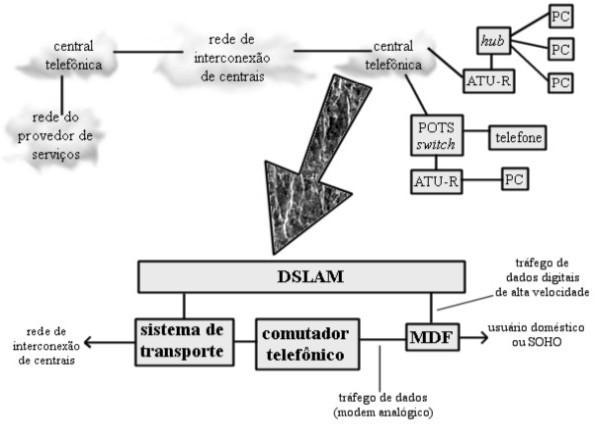
Figura 33: Arquitetura DSL.
Quando
a linha sai da casa do usuário, conecta-se a um armário de distribuição
e vai para a central telefônica. Dentro da central, entra no
multiplexador DSLAM, que separa o tráfego de voz e dados. Os dados são
enviados para uma rede, por exemplo ATM, enquanto o tráfego de voz é
passado ao comutador telefônico do POTS. Essa estrutura pode variar, em
função dos diferentes tipos de xDSL existentes. Os principais
componentes da DSL são:
Sistema de transporte: fornece a interface entre o backbone e o sistema DSLAM. Este dispositivo pode oferecer diversos tipos de serviços, como T1/E1, T3/E3, OC-1, OC-3, STS-1 e STS-3.
Rede de provedor de serviços (rede de acesso local): possui como base a rede que interconecta as centrais telefônicas e com o uso de equipamentos como switches, Frame Relay ou ATM, promove a conectividade entre os múltiplos provedores de serviços e os usuários.
DSLAM (Digital Subscriber Line Access Multiplexer): fica na central telefônica. É responsável por agregar o tráfego de dados dos múltiplos loops DSL no backbone. Fornece serviços a aplicações baseadas em pacotes, células ou circuitos, concentrando também os canais DSL em saídas 10Base-T, 100Base-T, T1/E1, T3/E3 ou ATM. Também suporta endereçamento IP dinâmico usando DHCP e uma grande quantidade de serviços, suporta codificações CAP, DMT e QAM.
ATU-R: equipamento que fica na ponta do usuário, disponibiliza várias configurações, dependendo do serviço a ser disponibilizado, além de oferecer funções adicionais para bridging (interconexão entre duas redes na camada de redes sem capacidade de roteamento), roteamento e multiplexação TDM ou ATM. Alguns modens possuem as funções do ATU-R.
ATU-R de bridging: oferece filtragem de dados e evita que o tráfego indesejado entre na rede do usuário.
ATU-R com roteamento: oferece flexibilidade do IP, podendo ser criadas sub-redes, a fim de segmentar a LAN remota e a identificação de tráfego unicast ou multicast.
POTS switch ou POTS splitter: é um dispositivo opcional, permite a transmissão simultânea de dados e voz, e existe tanto na ponta do usuário quanto na central telefônica. Pode ser ativo ou
passivo: ativo exige fonte de alimentação externa e passivo não necessita de alimentação.
Funcionamento da DSL
Para
permitir conversação (voz analógica) e transmissão de dados digitais na
mesma linha telefônica, sem que um interfira no outro, a DSL usa
frequências diferentes do espectro para transmitir voz e dados: a faixa
de 0 a 4KHz é usada para POTS e transmissões de fac-símile (fax), a
faixa de 30 a 138 KHz é usado para o envio de dados e a faixa de 138 Khz
a 1,1 MHz é usada para o recebimento de dados.
A
DSL é uma conexão ponto a ponto com linha e largura de banda dedicadas
entre o “modem” e a internet. É necessário o DSLAM para concentrar o
tráfego, pois este dispositivo suporta maior potência elétrica e maiores
frequências que um modem ou roteador DSL.
Na
DSL, existe o problema da atenuação do sinal que aumenta
proporcionalmente com a velocidade de transmissão, diminuindo a
distância máxima alcançada. Para aumentar o alcance da transmissão, pode
usar as técnicas de sinalização DMT e CAP:
DMT: os dados de chegada são coletados e distribuídos sobre um grande número de portadoras individuais, chamadas bins. A DMT cria estes canais usando uma técnica digital chamada Discrete Fast-Fourier Transform, aloca estes 256 subcanais com largura de banda de 4 Khz e modula um sinal separado em cada um deles, e assim, diminuir as perdas com ruído. Os sinais também são codificados usando-se QAM. DMT testa a qualidade da linha na inicialização para determinar a capacidade de transmissão de cada subcanal. Os dados que chegam são desmembrados e distribuídos por estes subcanais.
CAP: usada antes da DMT, tinha como problema a falta de padronização, gerando várias implementações de CAP proprietárias que não se comunicam uma com as outras. A CAP é mais simples que a DMT, com custo de implementação menor, necessitando de menos potência e assim, dissipando menos calor.
A
DMT tem como vantagem a alta tolerância a ruídos na linha e a
capacidade de adaptar-se às condições desta, apesar de ter padronização,
a sinalização varia de fabricante para fabricante, gerando novamente
problemas de comunicação entre equipamentos de marcas diferentes.
Com
QAM, dois sinais independentes são usados para modular duas portadoras
com frequências iguais, mas com amplitudes e fases diferentes. Os
receptores QAM conseguem discernir quando se deve usar mais ou menos
estados para superar ruído e interferências.
CAP
armazena partes do sinal modulado em memória e reconstrói estas partes
na onda modulada. O sinal da portadora é suprimido antes da transmissão,
pois não contém informação, e é remontada no modem receptor – por isso o
nome carrierless. Na inicialização, CAP testa a qualidade da linha de acesso e implementa a versão de QAM mais eficiente.
Tipos de DSL
Existem
vários tipos de DSL que diferenciam pelo tipo de serviço oferecido,
topologia dominante da rede já existente e planos para novos serviços no
futuro, estes vários tipos são conhecidos pelo nome xDSL. Os tipos de
DSL são classificados em: simétrico, transmitem os dados na mesma
velocidade nos dois sentidos; e assimétrico, transmite os dados do
usuário a uma velocidade maior do que os dados recebidos por este.
A
DSL assimétrica é mais utilizado por usuários domésticos, que desejam
usufruir da alta largura de banda para o acesso à internet. A DSL
simétrica é mais utilizado por empresas, filiais e provedores de
conteúdo. Os vários tipos de DSL são descritos a seguir:
ADSL (Asymmetric Digital Subscriber Line): permite a transmissão de dados e voz sobre o par de fios de cobre do sistema telefônico. É um protocolo assimétrico e foi projetado para entregar mais dados do que o usuário pode enviar, em uma proporção de 10:1, a ideia inicial era poder transmitir vídeo pela linha telefônica. Os modens ADSL usam técnicas de processamento de sinal que permite o tráfego de dados acima das frequências do serviço de transmissão de voz. Existem dois padrões de ADSL:
ADSL full rate: permite taxas de recebimento de dados de até 8 Mbit/s e taxas de envio de até 1 Mbit/s através de distância de até 5,5 km entre o usuário final e a companhia telefônica. Nesse padrão, é necessário a instalação de um separador (splitter) para separar a transmissão de dados da conversação telefônica, como mostra a figura 34.
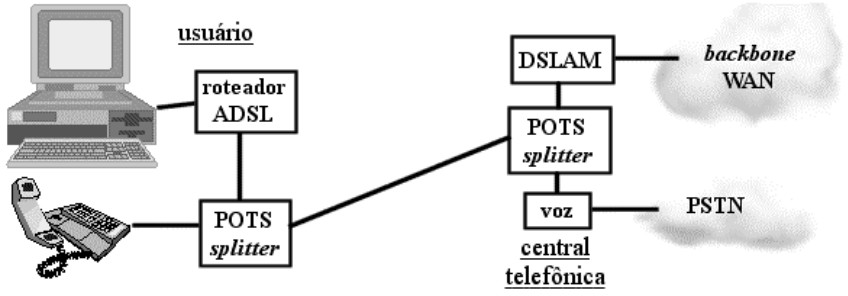
Figura 34: ADSL full.
ADSL lite: também chamado de ADSL universal ou splitterless, possui a largura de banda de 1,536 Mbit/s para recebimento e entre 384 e 512 Kbit/s para envio. Esse padrão não é necessário a instalação do separador na ponta do usuário para separar tráfegos de voz e dados, diminuindo os custos de instalação, como mostra a figura 35.
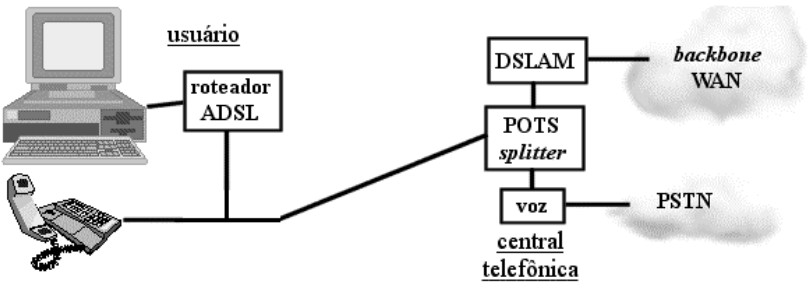
Figura 35: ADSL lite.
A
ADSL utiliza a FDM e a TDM. A FDM separa uma banda para envio e outra
para recebimento e a TDM divide a banda de recebimento em um ou mais
canais de alta velocidade. Além disso, o modem ADSL organiza o fluxo de
dados criado pela multiplexação dos canais e os agrupa em blocos e anexa
um código corretor de erros em cada bloco. A ADSL possui como padrão a
técnica DMT para serviços de vídeo em linha discada.
RADSL (Rate-Adaptive Digital Subscriber Line): possui capacidade de adaptação, ou seja, suporta aplicações simétricas e assimétricas, o canal de envio suporta até 1 Mbit/s. O RADSL utiliza FDM, o canal de envio de dados ocupa a banda acima do POTS, em 1,088 Mbit/s e o canal de recebimento ocupa a banda superior em 1,5 à 7 Mbit/s. Alguns equipamentos que não usam separadores, conseguem detectar quando o telefone está no gancho ou fora do gancho. Quando o telefone está fora do gancho, o equipamento desloca para cima as frequências de portadoras e atenua as frequências mais baixas do sinal digital para eliminar interferências com o sinal de áudio. Quando o telefone for colocado no gancho, o sinal digital é deslocado de volta, para sustentar altas taxas de dados.
SDSL (Symmetrical Digital Subscriber Line): as velocidades de transmissão – upstream e dowstream – são iguais e pode atingir até 2,3 Mbit/s. A SDSL é ideal para LAN e aplicações que necessitam de alta largura de banda como videoconferência, computação colaborativa, hospedagem de serviços HTTP, WWW e FTP. Usa a técnica de codificação 2B1Q, esta codificação tem como vantagem não causar interferência com os canais T1. Não necessita de separadores POTS, pois não suporta o tráfego de voz, para isso é necessário uma segunda linha telefônica.
HDSL (High-Bit-Rate Digital Subscriber Line): separa um canal T1 de 1,544 Mbit/s em dois canais de 784 Kbit/s, com isso, aumenta a taxa de transmissão, reduz o espectro de frequência e aumenta a distância atingida de até 3,7 km sem repetidores.
IDSL (ISDN Over Digital Subscriber Line): são adaptadores na central que se comunicam com os adaptadores existentes na outra ponta da linha e que fazem a terminação do sinal ISDN. Utiliza a modulação 2B1Q e transmite os dados através de uma rede dedicada, dispensando a necessidade de discagem e possui a velocidade de até 144 Kbit/s. É necessário uma linha separada para transmissão de voz. Esse serviço é cobrado mensalmente, diferente do ISDN, que é cobrado por pacote ou minuto de conexão.
MSDSL (Multi-Rate Symmetrical Digital Subscriber Line): provêm serviços disponíveis
praticamente em qualquer lugar. Usa o mesmo par da tecnologia SDSL e suporta mudanças na taxa de transmissão do transceiver,
e com isso ganha variações na distância alcançada. Pelo fato de alterar
automaticamente a taxa de transmissão – similar a RADSL – pode oferecer
aplicações simétricas. Possui a velocidade de 64 ou 128 Kbit/s à
distância de 8,9 km e 2 Mbit/s à distância de 4,5 km.
UDSL (Unidirectional Digital Subscriber Line): foi proposta por uma empresa europeia e consiste em uma versão unidirecional do HDSL. UDSL também significa Universal Digital Subscriber Line, que é apenas uma designação para o ADSL Lite.
VDSL (Very-High-Bit-Rate Digital Subscriber Line): é a tecnologia mais rápida sobre um par de fios, de 12,96 a 51,84 Mbit/s para envio e 1,5 a 2,3 Mbit/s para recebimento, porém o alcance é de 300 metros a 1,5 km. Suporta as mesmas aplicações que a ADSL, oferece transmissão HDTV (High-Definition Television – transmissão de televisão com resolução maior), vídeo sobre demanda e vídeo digital comutado. A VDSL é uma alternativa econômica para a FTTH (Fibre to the Home – rede onde a fibra ótica vai do comutador telefônico até as dependências dos usuários). Utiliza os códigos de linha CAP, DMT, DWMT e SLC (Simple Line Code).
MVLDSL (Multiple Virtual Lines Digital Subscriber Line): é uma versão proprietária desenvolvida pela Paradyne. Permite conectar até 8 modens em um par de POTS, cada um possui uma banda para envio e recebimento de 768 Kbit/s em uma distância de 9,1 km. Não usa splitter e também pode ser usado para conectar vários computadores dentro de um prédio, como se estes fizessem parte de uma LAN.
A tecnologia Cable Modem
Cable
Modem é um serviço de acesso à internet em alta velocidade, baseado na
infraestrutura de transmissão de televisão por assinatura, por meio de
cabos coaxiais, HFC e MMDS. Utiliza a tecnologia com acesso
compartilhado – não é dedicado como ISDN ou DSL, isto significa que a
largura de banda disponível é compartilhada entre os usuários da mesma
vizinhança, como se fosse uma rede LAN. Nas horas de pico é impossível
atingir velocidades altas, devido ao congestionamento.
Para
o usuário, é oferecido um conjunto de serviços diferenciados e um
conjunto de informações. A conexão em alta velocidade não é o produto
final repassado ao usuário, mas sim, reduz drasticamente o tempo exigido
para transferência de dados, e assim viabiliza serviços que não
poderiam ser oferecidos em conexões discadas convencionais, como jogos
online, download de software, trailers de filmes e chats de alta
performance. Existem três perfis de usuário, que são:
Assinatura residencial: O assinante contrata o serviço diretamente do provedor, a assistência técnica faz a instalação, é necessário que o assinante possua uma linha telefônica convencional para ter acesso aos serviços, essa linha será conectada ao cable modem integrado. Neste perfil, a assinatura refere-se somente a uma casa.
Assinatura coletiva: é utilizada em condomínios residenciais e comerciais, o responsável pelo contrato e pagamento do serviço é o administrador do condomínio. Essa assinatura é composta por um computador, um cable modem e equipamentos de comunicação, que serão instalados em uma área comum do prédio, o condomínio deverá possuir uma placa de rede padrão Ethernet. Essa assinatura possui o benefício de liberar a linha telefônica e acesso permanente.
Assinatura corporativa: Essa assinatura é destinada à empresas com um número pequeno de usuários. Essa modalidade é semelhante aos condomínios, podendo ser adaptada para a empresa com base no interesse e forma de utilização do serviço.
A
rede de televisão a cabo provêm os sinais de várias fontes, como
radiodifusão, transmissões de televisão via satélite e produções de
estúdios locais, esses sinais são recebidos e processados no head-end
(abordado na próxima seção). A operadora de cabo recebe diferentes
programas de fontes diferentes e os retransmite através de redes de
cabos coaxiais ou redes híbridas de cabos coaxiais e fibras óticas.
Esses
sinais são impulsos ou ondas eletromagnéticas que propagam-se na
atmosfera dentro de um espectro de frequências através do ar, cabo
coaxial ou cabo paralelo. Para transmitir um pacote de múltiplos canais a
partir do head-end até os clientes, é usado uma estrutura em árvore por
ser mais econômico e eficiente: um cabo tronco de alta capacidade
conduz os sinais a partir da operadora de televisão a cabo, nesse cabo
são conectados cabos menores que distribuem os sinais nos diversos
bairros de uma cidade – estes cabos são chamados de cabos
distribuidores, cabos coaxiais são ligados nos cabos distribuidores até a
casa do assinante e conectado a um aparelho de televisão ou no
decodificador/conversor de televisão a cabo.
A
televisão a cabo tem como propósito melhorar a transmissão dos sinais
analógicos de televisão, substituindo por radiodifusão. Essa tecnologia
surgiu nas décadas de 60 e 70, e foram instaladas de forma independente
uma das outras, a arquitetura que surgiu foi a árvore e tinha como os
principais componentes os itens descritos a seguir:
Head-end: concentra os sinais recebidos de fontes diferentes. Utiliza FDM para modular os sinais analógicos e mapeá-los para o espectro eletromagnético do cabo.
Tronco: é composto por cabos coaxiais de alta capacidade, que carregam o sinal por até 24 km.
Amplificadores: é usado ao longo da rede de distribuição para diminuir as perdas por atenuação ou pela divisão através das ramificações da rede, porém, o seu uso cria distorções no sinal original e, pelo fato de serem alimentados pela rede elétrica, deixa-os vulneráveis a falhas no fornecimento de energia elétrica.
Alimentadores e pontos de descida: conectam-se a residência do assinante através de cabos coaxiais de baixa capacidade.
Componentes do Cable Modem
Existem
três modelos de Cable Modem: externo, pode ser conectado através da
interface da rede Ethernet, esta interface pode ser usada para conectar
mais de um computador ou pode ser conectada através de uma interface
USB; interno, é uma placa conectada ao barramento PCI, é o modelo com o
custo menor, porém, só pode ser usado em computadores do tipo PC Desktop
e o conector do cabo não é isolado galvanicamente, podendo criar alguns
problemas com algumas redes de televisão a cabo e; terminal interativo,
que é um cable modem disfarçado, que tem como função oferecer um maior
número de canais de televisão ao mesmo número limitado de frequências,
sendo possível através do uso da codificação digital DVB.
Os modelos de Cable Modem são diferentes, mas a arquitetura básica é composta de alguns componentes básicos, que são:
conectado
diretamente ao terminal de antena da televisão a cabo e geralmente
possui um demultiplexador embutido, para ser capaz de trabalhar com os
sinais upstream e dowstream, e deve ser capaz de receber sinais digitais modulados em QAM.
Demodulador: realiza na recepção a conversão analógica/digital, a demodulação QAM 64/256, a correção de erros usando Reed-Solomon e a sincronização de quadros MPEG.
Modulador de rajada: realiza na transmissão a codificação Reed-Solomon dos dados transmitidos, a modulação QPSK/QAM-16 na frequência selecionada e a conversão digital/analógica.
Controlador de acesso ao meio (MAC): está presente na transmissão e na recepção e tem como finalidade compartilhar o meio de uma maneira inteligente. O MAC extrai os dados dos quadros MPEG, filtra os dados, roda o protocolo de acesso e determina a temporização da transmissão dos sinais. Pode ser implementado em hardware ou em uma combinação de hardware e software.
Interface: conecta o cable modem ao computador. Existem vários tipos de interface, como Ethernet RJ-45, USB, PCI, entre outras.
CPU (Unidade Central de Processamento): é necessário o uso da CPU em cables modens externos. Alguns modens internos usam o processador do próprio computador para realizar o processamento.
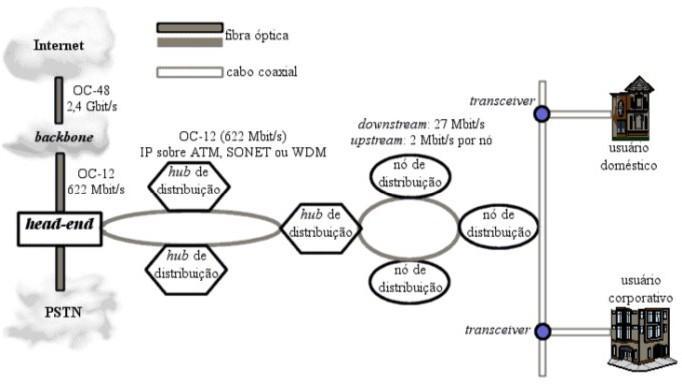
Figura 36: Estrutura de um sistema de cable modem.
A estrutura básica da rede de cable modem baseado na estrutura HFC é composta de cinco partes principais (figura 36), que são:
Head-end: atende de 200.000 à 400.000 residências e é o centro das operações da rede (figura 37). Um switch ou roteador IP faz a interface com o backbone da rede de dados, oferecendo conectividade aos servidores de conteúdo à internet. Este switch ou roteador também conecta- se com os CMTS, localizados nos hubs de distribuição. Se o operador de cabo oferecer o serviço de telefonia IP, as chamadas de voz podem ser direcionadas pelo roteador para uma porta de comunicação específica (gateway), que conecta-se com o PSTN.
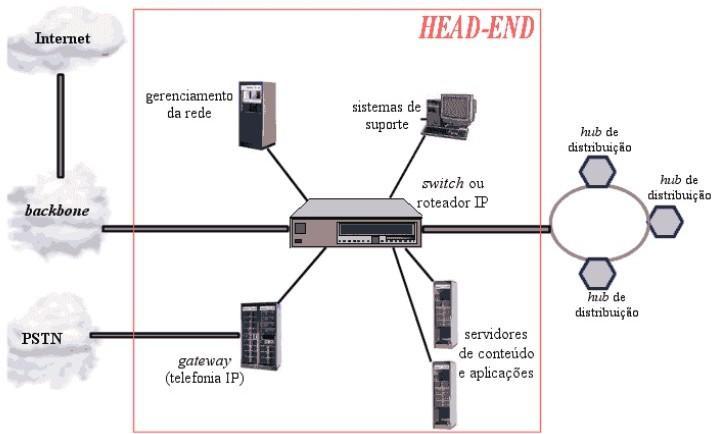
Figura 37: Head-end.
Hubs de distribuição: atende de 20.000 a 40.000 residencias em um anel de fibra e serve como ponto de interconexão entre a rede regional de fibra ótica e a rede HFC ( figura 38). No hub, o CMTS concentra os dados provenientes de uma WAN e modula os sinais digitais para transmissão através dos enlaces de fibra ótica da rede HFC. O CMTS oferece um canal dedicado de downstream de 27 Mbit/s e a largura de banda de upstream varia entre 2 e 10 Mbit/s por nó de distribuição.
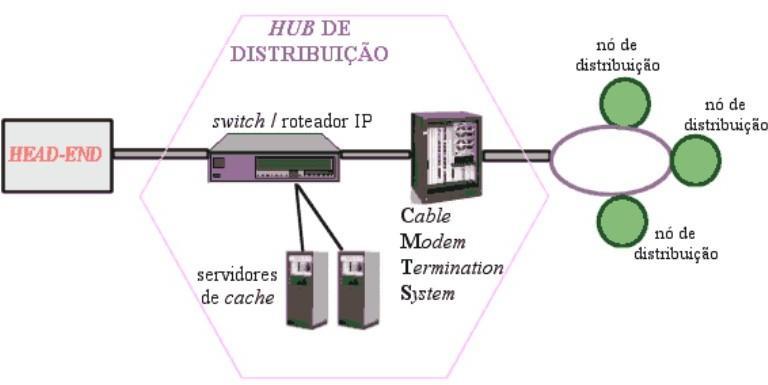
Figura 38: Hub de distribuiçao.
Nó de distribuição: atende de 500 a 1.000 domicílios e fica localizado na vizinhança do usuário.
Cabo: conecta-se ao transceiver e vai até a residência do usuário.
Equipamento terminal: interface entre a rede, o aparelho de televisão e o computador.
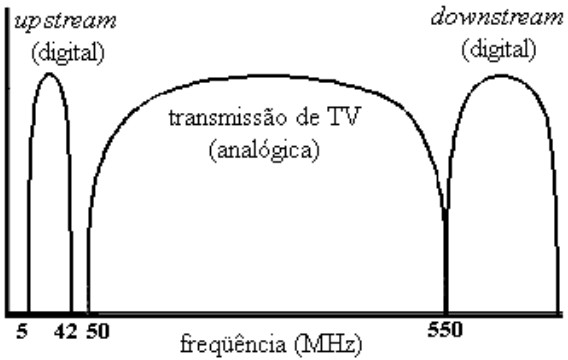
Figura 39: Upstream e downstream.
É chamado de downstream o
fluxo de sinal recebido pelo cable modem, as frequências variam de 42 a
850 MHz com largura de banda de 6 MHz por canal no padrão americano
(figura 39) e entre 65 e 850 MHz com largura de banda de 8 MHz por
canal. Para a modulação são utilizados os padrões: QAM-64 com 6 bits por
símbolo – o mais comum e QAM-256 com 8 bits por símbolo – o mais rápido
e mais sensível ao ruído. A taxa bruta de transferência de dados
depende da modulação e da largura de banda, como mostra a tabela 3.

Tabela 3: Taxa de transferência bruta.
É
chamado de upstream o fluxo de sinal enviado pelo cable modem, as
frequências variam de 5 a 42 no padrão americano e 5 e 65 no padrão
europeu. A largura de banda é de 2 MHz por canal. Para a modulação é
utilizado o padrão QPSK (Quaternary Phase Shift Keying) com 2 bits por símbolo e o QAM-16 com 4 bits por símbolo, este último é mais rápido porém, mais sensível ao ruído.
Telefonia Celular
Também
chamado de Telefonia Móvel, este sistema é capaz de efetuar chamadas
com os usuários em trânsito. Estes telefones não devem ser confundidos
com telefones sem fio, que consistem em uma estação-base e um aparelho
móvel, vendidos em conjunto para uso dentro de uma residência.
O
primeiro sistema móvel foi desenvolvido pela empresa AT&T, nos
Estados Unidos, e possuía um único sistema (analógico), porém, quando
chegou a Europa, cada país desenvolveu seu próprio sistema, resultando
em um fracasso. Ao surgir a tecnologia digital, as empresas padronizaram
um único Sistema Global para Comunicações Móveis – GSM (Global System for Mobile Communications),
ou seja, qualquer telefone móvel europeu funcionaria em qualquer lugar
da Europa obtendo assim, a liderança da telefonia móvel.
Os
Estados Unidos não participou da padronização da telefonia móvel,
resultando em diferentes fabricantes de equipamentos, produzindo tipos
distintos de telefone móveis. Em consequência disso, os Estados Unidos
possui dois importantes sistemas de telefonia móvel digital totalmente
incompatíveis em operação, além disso, os números dos telefones móveis e
telefones comuns não se diferem, não sendo possível distinguir as
ligações.
Com
medo que as pessoas ficassem receosas em usar o telefone, os Estados
Unidos achou como solução, fazer com que os usuários de telefones móveis
pagassem pelas chamadas recebidas, resultando em os usuários não
comprarem os telefones móveis por medo do valor no final do mês. Na
Europa, os números dos telefones comuns e telefones móveis se diferem,
podendo diferenciar as ligações recebidas dos telefones móveis dos
telefones comuns e os usuários também pagam pelas chamadas recebidas,
porém, diferentemente dos Estados Unidos, os telefones móveis são
pré-pagos, ou seja, o usuário coloca um crédito X e assim que acabar
esse crédito, é possível colocar um novo crédito. Os telefones móveis
passaram por 4 gerações, chamadas de 1G, 2G, 3G e 4G. As próximas seções
descreverão cada geração.
Primeira Geração – 1G
Esta
geração é baseada em tecnologia analógica e usava modulação de FM.
Durante essa tecnologia, foi desenvolvido vários sistemas, que são:
Radiotelefones: Inicialmente, nas primeiras décadas do século XX, eram usado nas comunicações militar e marítimas.
Aperte para falar (push-to-talk systems): foi desenvolvido em 1946, quando o usuário queria conversar, apertava um botão para ativar o transmissor e desativar o receptor, esse sistema foi instalado em diversas cidades, e só necessitava instalar um transmissor grande no alto de um prédio. Possuía somente um canal para transmitir e receber.
IMTS (Improved Mobile Telephone System – Sistema de Telefonia Móvel Aperfeiçoado): foi desenvolvido na década de 60, esse sistema possuía um transmissor com potência de 200 watts e possuía duas frequências – um para transmitir e outro para receber, possuía 23 canais com frequências entre 150 a 450 MHz, pelo fato de utilizar um canal para transmissão e outro para recepção, os usuários móveis não podiam ouvir uns aos outros, como tinham poucos canais,
algumas
vezes era necessário esperar muito tempo para obter uma ligação, e para
evitar interferência com o transmissor que possuía alta potência, os
sistemas adjacentes ficavam a vários quilômetros uns dos outros.
AMPS (Advanced Mobile Phone System – Sistema Avançado de Telefonia Móvel): surgiu em 1982, foi um avanço na época inutilizando os demais sistemas, o seu uso somente foi encerrado oficialmente em 2008, o entendimento desse sistema é importante para prosseguir no estudos das tecnologias 2G e 3G, que aperfeiçoaram o AMPS. Esse sistema dividia a região geográfica em células e cada célula possuía um espaço de 10 a 20km, uma célula receb ia uma frequência não utilizada por células vizinhas, como mostra a figura 40, que são agrupadas em unidades de sete células e cada letra indica um grupo de frequências, ou seja, existe um afastamento de duas células para repetir a frequência, proporcionando boa separação e pouca interferência. Se uma área possuir muitos usuários, deixando os sistemas sobrecarregados, as células sobrecarregadas podem ser divididas em células menores, denominadas microcélulas, estas microcélulas podem ser fixas (no caso de regiões com muitas pessoas) ou temporárias (para eventos esportivos, shows grandes, entre outros). No centro de cada célula há uma estação-base com um computador e um transmissor/receptor, conectados a uma antena, recebendo as transmissões de todos os telefones presentes na célula. As estações pequenas são conectadas à um dispositivo chamado MSC (Mobile Switching Center – Centro de Comutação Móvel), também conhecido como MTSO (Mobile Telephone Switching Office – Estação de Comutação de Telefonia Móvel), as estações grandes são conectadas a vários MSCs, que são conectados à MSCs de segundo nível e assim por diante, isso é necessário pois, cada telefone móvel ocupa “logicamente” uma célula específica, e ao deixar essa célula, a estação-base detecta o enfraquecimento do sinal do telefone móvel e verifica com as estações vizinhas referente a quantidade de energia que as estações estão recebendo referente ao telefone, a estação-base transfere o telefone móvel para a célula que ter o sinal mais forte. O telefone móvel é informado sobre essa transferência e se houver uma chamada em andamento, é passado para um novo canal, esse processo é denominado handoff e demora aproximadamente 300 ms. O MSC é responsável pela atribuição de canais e as estações-base são simplesmente retransmissoras de rádio.
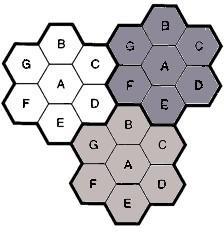
Figura 40: Frequências repetidas à aproximadamente duas células.
Canais: o sistema AMPS utiliza FDM para separar os canais, possui 832 canais full-duplex cada um consistindo de um par de canais simplex – esta composição é chamada de FDD, e cada canal simplex possui largura de banda de 30 KHz. Os 832 canais simplex usam a
frequência
de 824 a 849 MHz e são usados para a transmissão do aparelho móvel à
estação base. Os outros 832 canais simplex usam a frequência de 869 à
894 MHz e são usados para a transmissão da estação-base ao aparelho
móvel. Esses 832 canais são divididos em 4 categorias, que são:
Canais de controle: funcionam da base para a unidade móvel e é responsável por gerenciar o sistema.
Canais de localização: funcionam da base para a unidade móvel e é responsável por alertar os usuários referentes a chamadas destinadas a eles.
Canais de acesso: são bidirecionais e são responsáveis pelo estabelecimento de chamadas e atribuição de canais.
Canais de dados: são bidirecionais e são responsáveis por transportar voz, fax ou dados.
Destes
832 canais, 21 canais de cada célula são reservados para controle, e
como não pode ser utilizadas as mesmas frequências por células vizinhas,
o real número de canais disponíveis para voz em cada célula normalmente
é aproximadamente a 45 canais.
O
sistema AMPS pode ter cem células de 10 km na mesma região sendo capaz
de estabelecer de 5 a 10 chamadas por frequência, e o sistema ITMS pode
ter um alcance de 100Km e uma chamada por frequência. Além disso, as
células menores necessitam de menos energia, possibilitando
transmissores e receptores menores e mais econômicos.
Segunda Geração – 2G
Esta
geração é baseada em voz digital, com isso, possui uma capacidade maior
e permite que os sinais de voz sejam digitalizados e compactados, além
de permitir a criptografia tanto dos sinais de voz quanto dos sinais de
controle. Nessa geração também não houve padronização internacional e
com isso, foram criados diferentes sistemas, que são:
D-AMPS (Digital Advanced Mobile Phone – Sistema Avançado de Telefonia Móvel Digital): é a versão digital do AMPS, usa TDM para fazer várias chamadas no mesmo canal de frequência (FDM).
GSM (Global System for Mobile Communications – Sistema Global para Comunicações Móveis): é o sistema dominante, e assim como o D-AMPS, usa a mistura de TDM e FDM.
CDMA (Code Division Multiple Access – Acesso Múltiplo por Divisão de Código): não utiliza TDM e nem FDM, é completamente diferente dos demais sistemas. Apesar de não ter sido a versão dominante, se tornou base para a tecnologia 3G.
PCS (Personal Communications Services – Serviços de Comunicações Pessoais): é utilizado para indicar um sistema de segunda geração – digital.
Pelo
fato do sistema GSM ter dominado o mercado na tecnologia 2G, iremos
abrangê-la nos próximos parágrafos. O sistema CDMA será abordado na
próxima seção que aborda a tecnologia 3G.
O sistema GSM surgiu na década de 1980, porém só foram implantados a partir de 1991 e foi
dominante
nas redes 2G, esse sistema absorveu alguns conceitos das redes 1G: as
células, a reutilização de frequências pelas células e mobilidade com handoffs,
e adicionou algumas propriedades. Nessa rede, é necessário que o
aparelho móvel possua um chip removível, que possui informações do
usuário e da conta, denominado cartão SIM (Subscriber Identity Module –
Módulo de Identidade do Assinante), esse cartão possui a função de
ativar o aparelho, além de possuir um código que permite que a rede e o
aparelho se identifiquem e codifiquem as conversas. Esse cartão pode ser
inserido e removido a qualquer momento, assim como pode ser colocado em
um outro aparelho móvel.
Neste
sistema, as estações são conectadas ao BSC (Base Station Controller –
Controlador de Estação-Base), e os BSCs são conectados ao MSC. A função
do BSC é controlar os recursos de rádio das células e cuidar do handoff, e a função do MSC é direcionar as chamadas e conectá-las à PSTN. Os MSCs mantém dois banco de dados: VLR (Visitor Location Register –
Registrado de Local do Visitante) possui o banco de dados dos telefones
móveis nas vizinhanças que estão associados as células que ele
controla, para saber onde os aparelhos estão e assim, ser possível
transferir as chamadas; HLR (Home Location Register – Registrador de
Local Inicial) possui o banco de dados na rede móvel que indica o último
local conhecido de cada aparelho e assim, poder direcionar as chamadas
que chegam para os locais corretos. Esses bancos de dados são mantidos
atualizados enquanto os telefones móveis passam de uma célula para
outra.
Os
sistemas GSM trabalha em uma faixa de frequência internacional de 900,
1800 e 1900 MHz, usando canais de 200 Khz (o sistema AMPS usa 30 Khz),
desta forma, o GSM possibilita maior número de usuários do que o sistema
AMPS. Assim como o AMPS, o GSM é um sistema duplex por divisão de
frequência, ou seja, cada telefone transmite em uma frequência e recebe
em outra frequência mais alta. Diferentemente do sistema AMPS, no
sistema GSM, um único par de frequências é dividido pela multiplexação
por divisão em slots de tempo, podendo ser compartilhado por vários
aparelhos.
Desta
forma, um sistema GSM operando em 900 MHz possui 124 pares de canais
simplex, cada canal simplex possui 200 Khz de largura e aceita oito
conexões separadas, usando a TDM. Cada estação pode aceitar 992 canais,
porém, para evitar conflitos com canais vizinhos, muitos desses canais
não estão disponíveis. Cada estação recebe um slot de tempo em um par de
canais, a transmissão e a recepção não acontecem no mesmo slot de
tempo, pois não pode transmitir e receber ao mesmo tempo, além de levar
algum tempo para passar de um para outro. Alguns destes slots guardam
canais de controle usados para gerenciar o sistema, que são:
canal de controle de broadcast: fluxo contínuo de saída da estação-base, contendo a identidade da estação-base e o status do canal. Todas as estações móveis monitoram a intensidade de seu canal para verificar quando elas são transferidas para uma nova célula.
canal de controle dedicado: usado para atualização de local, registro e estabelecimento de chamadas. As informações necessárias para manter o VLR são enviadas no canal de controle dedicado.
canal de controle comum: é dividido em três subcanais:
canal de localização: as estações utilizam para anunciar as chamadas recebidas.
canal de acesso aleatório: permite aos usuários solicitarem um slot no canal de controle dedicado, se duas solicitações colidirem, elas serão adulteradas e terão de ser repetidas mais tarde.
canal de concessão: serve para anunciar o slot atribuído do canal de controle dedicado para estabelecer uma chamada.
Outra diferença entre o GSM e o AMPS é a forma de usar o handoff. No AMPS, o MSC
controla o handoff, no GSM, por usar slots de tempo, e pelo fato de que nem sempre os telefones estão enviando e recebendo, os slots
ociosos são usados para medir a qualidade do sinal até as estações-bases
nas proximidades e enviar ao BSC. O BSC pode usar essas informações
para saber quando um telefone móvel está saindo de uma célula e entrando
em outra, e assim, pode utilizar o handoff.
Segunda Geração e Meia - 2, 5G
A
rede 2,5G é a rede 2G melhorada, além de ser considerada o degrau de
transição entre as tecnologias 2G e 3G, porém o termo 2,5G não foi
oficialmente definido pela UIT ( União Internacional de Telecomunicações). Utiliza taxa de dados aperfeiçoados para evolução do GSM ou EDGE (Enhanced Data rates for GSM Evolution).
O EDGE é o GSM com mais bits por símbolo, porém, mais bits por símbolo
também significa mais erros por símbolo, assim o EDGE tem nove esquemas
diferentes para modulação e correção de erros, que se distinguem pela
proporção da largura de banda dedicada à correção dos erros introduzidos
pela velocidade mais alta.
Pelo
fato de utilizar tecnologias de pacotes, permite o acesso à internet
mais eficiente e flexível. No início, a telefonia celular permitiu
comunicação apenas por voz, porém com a tecnologia 2G possibilitou a
troca de mensagens e acesso à internet e, somente à partir da tecnologia
2,5G que estas funções começaram a atrair os usuários.
Terceira Geração - 3G
Esta
geração é baseada em voz e dados digitais (internet, correio
eletrônico, etc.). Muitos fatores contribuíram para este avanço: o
tráfego de dados já ultrapassava o tráfego de voz na rede fixa e estava
crescendo exponencialmente, enquanto que o tráfego de voz está
basicamente estabilizado; os setores de telefonia, entretenimento e
informática passaram para a tecnologia digital e estão convergindo
rapidamente. Muitas pessoas preferem usar o telefone móvel que possui
quase todas as funções de um computador (interface web, correio
eletrônico, música e vídeo, jogos, entre outros) e ainda atua como
telefone, tudo com conectividade mundial sem fios à internet em alta
largura de banda.
Essa ideia surgiu em 1992 pela ITU, que apresentou um projeto para alcançar a rede 3G denominado IMT-2000 (IMT – International Mobile Telecommunications – Telecomunicações Móveis Internacionais), os serviços básicos que a rede IMT-2000 deveria oferecer aos usuários eram:
Transmissão de voz de alta qualidade.
Serviços de mensagens: esse serviço substituía os serviços de correio eletrônico, fax, SMS, bate-papo, entre outros.
Multimídia: esse recurso serve para reproduzir musicas, exibir vídeos, exibir filmes, acessar canais de televisão, entre outros.
Acesso à internet: esse recurso serve para navegação na web, incluindo páginas com áudio e vídeo.
Outros serviços: videoconferência, telepresença, jogos em grupo e m-commerce (comércio
móvel, onde o usuário poderia pagar as compras de uma loja ou supermercado utilizando o seu telefone).
Esses
serviços deveriam estar disponíveis em âmbito mundial, com rede
terrestre e se esta não estivesse disponível, com comunicação automática
via satélite, de forma instantânea e com garantias de qualidade de
serviço.
A
ITU previu tudo isso em um único aparelho que pudesse ser vendido e
utilizado em qualquer lugar do mundo. Além disso, o número 2000
(referente ao nome IMT-2000) significava três coisas, porém nenhuma foi
concretizado:
o ano que o serviço deveria ser iniciado, mas não foi implementado no ano de 2000.
a frequência em que deveria operar (em MHz): a ITU recomendou que todos os países reservassem a frequência de 2 GHz para que os telefones móveis pudessem funcionar em todos os países, porém, somente a China reservou a largura de banda exigida.
a largura de banda que o serviço deveria ter (em kbps): a largura de banda de 2 Mbps não era viável para usuários que se movimentam muito, pela dificuldade de realizar handoffs com rapidez suficiente; e sim, 2Mbps para usuários que não estão em movimentos, 384 kbps para pessoas andando e 144 kbps para conexões em carro.
Várias propostas foram feitas, e após uma seleção, se reduziram a duas propostas principais, que
são:
CDMA de banda larga (ou WCDMA – Wideband CDMA): proposta pela Ericsson e adotada pela União Europeia, que o chamou de UMTS (Universal Mobile Telecommunications System – Sistema Universal de Telecomunicações Móveis), baseado no CDMA de banda larga, usa canais de 5 MHz.
CDMA2000: proposto pela Qualcomm, baseado no CDMA de banda larga, usa canais de 1,25 MHz.
Estes
dois projetos eram muito parecidos, mas a questão política os separava.
A Europa queria um sistema que trabalhasse junto com o GSM, e os
Estados Unidos queria um sistema que fosse compatível com um sistema já
amplamente desenvolvido no país – o IS-95, além disso, cada lado apoiava
sua empresa local: a Ericsson, sediada na Suécia e a Qualcomm na
Califórnia.
O
CDMA usa FDM E TDM, ou seja, o usuário usa a mesma banda de frequência
ao mesmo tempo, originalmente quando foi proposto, as empresas teve uma
reação negativa a essa ideia, porém, pela insistência da empresa
Qualcomm, o CDMA originou na tecnologia 2G e se tornou base para a
tecnologia 3G.
Para
a tecnologia CDMA funcionar, devemos codificar as sequências que são
ortogonais umas às outras em todos os deslocamentos possíveis, e não
apenas quando estão alinhadas no início, pois isso dificultaria a
sincronização dos telefones móveis independentes, e as transmissões
poderiam chegar na estação-base em momentos diferentes, sem garantia de
ortogonalidade. Para resolver isso, existe longas sequências que possuem
baixa correlação cruzada entre si, ou seja, quando a sequência é
multiplicada por outra e somada para calcular o produto interno, o
resultado será pequeno, permitindo assim, que o receptor filtre
transmissões indesejadas do sinal recebido.
A
potência de transmissão nos telefones móveis deve ser controlada para
reduzir a interferência entre sinais concorrentes, pois a interferência
limita a capacidade de sistemas CDMA. Os níveis de potência recebidos em
uma estação-base dependem da distância em que os transmissores se
encontram
e
também de quanta potência eles transmitem, pode haver muitas estações
móveis em distâncias variadas da estação-base, para resolver isso, uma
estação móvel recebendo um sinal fraco da estação- base usará mais
potência do que outra obtendo um sinal forte, e para aumentar a
precisão, a estação- base também oferece feedback a cada unidade móvel para aumentar, diminuir ou manter constante sua potência de transmissão. O feedback é em torno de 1.500 vezes por segundo para controlar a potência e assim reduzir a interferência.
Esse
CDMA permite que diferentes usuários enviem dados em diferentes taxas,
para isso, são fixados as taxas em que os chips são transmitidos e
atribuindo aos usuários sequências de chips de diferentes tamanhos. Além
disso, esse CDMA possui três vantagens, que são:
melhorar a capacidade, em uma ligação, uma parte fica em silêncio enquanto a outra fala, ou seja, em média a linha está somente 40% do tempo ocupada. O CDMA usa estes intervalos que a linha não está sendo ocupada para permitir um número maior de chamadas simultâneas, isso não é permitido nos sistemas FDM e TDM.
cada célula usa as mesmas frequências, por isso, a FDM não é necessária para separar as transmissões de diferentes usuários, tornando mais fácil para a estação-base usar várias antenas direcionais em vez de uma antena omnidirecional, concentrando um sinal na direção desejada e assim, reduzindo a interferência em outras direções e por isso, aumentando a capacidade.
facilita o soft handoff, ou seja, a unidade móvel é aceita pela nova estação-base antes da estação anterior se desconectar, isso é possível por quê todas as frequências são usadas em cada célula.
hard handoff: a estação-base antiga libera a chamada antes de ela ser aceita pela nova, e se a nova estação não poder aceitar, a chamada será desconectada de forma brusca, isso pode ocorrer no caso de não existir nenhuma frequência disponível, os usuários notam a interrupção, mas ela é inevitável com a estrutura atual. É um padrão em FDM para evitar o custo de fazer a unidade móvel transmitir ou receber em duas frequências simultaneamente.
Quarta Geração - 4G
As
redes 4G utilizam a tecnologia LTE (Long Term Evolution – evolução de
longo prazo), alguns recursos propostos pela 4G incluem: alta largura de
banda; ubiquidade (conectividade em toda parte); integração
transparente com outras redes IP com e sem fios, incluindo pontos de
acesso 802.11; gerenciamento adaptativo de recurso e espectro; e alta
qualidade de serviço para multimídia.
Essa
geração oferece serviços baseados em banda larga móvel: MMS (Multimedia
Messaging Service), video chat, mobile TV, conteúdo HDTV, DVB (Digital
Video Broadcasting) e serviços de voz e dados, todos esses serviços
possuem o conceito de poder usá-los em qualquer local e a qualquer
momento. Além disso, as redes 4G oferecem otimização do uso do espectro,
troca de pacotes em ambiente IP, grande capacidade de usuários
simultâneos, download de 100Mbps para usuários móveis e 1 Gbit/s para
usuários em repouso, upload de 50Mbps (a rede 3G possuía 384 Kbps para
download e upload para pessoas em movimento) e interoperabilidade entre
os diversos padrões de redes sem fio.
A
tecnologia LTE foi desenvolvida com base nas tecnologias GSM e WCDMA,
porém, a diferença entre essas três tecnologias é que a LTE prioriza o
tráfego de dados, enquanto que a GSM e a WCDMA prioriza o tráfego de
voz. Dessa forma, a tecnologia LTE proporciona uma rede de dados mais
rápida e estável, diferenciando assim, a rede 4G das gerações
anteriores. Além disso, a rede 4G
permite
uma maior quantidade de usuários na rede, em 5 MHz de espectro permite
até 200 acessos simultâneos, quase o dobro das redes 3G.
No
brasil, as redes 4G são operadas na faixa de frequência de 2,5GHz,
porém, a cobertura nesta frequência é menor e mais cara, pois necessita
de mais antenas, além disso, os aparelhos produzidos nos Estados Unidos e
Europa não funcionam aqui, pois estes aparelhos só funcionam na
frequência de 700MHz, como exemplo podemos citar: Apple iPad 3, Apple
iPad 4, Apple iPad mini e iPhone 5. Além disso, os fabricantes da
tecnologia 4G recomendam o uso da frequência de 700MHz na América
Latina. No Brasil, a faixa de 700MHz é utilizado pela Televisão
Analógica, mas com a mudança para Digital (entre o ano de 2016 e 2018),
as emissoras irão trabalhar em outra frequência, liberando assim, a frequência de 700MHz para as redes 4G.
Gerenciamento de Chamadas
Cada
telefone móvel possui uma PROM (Programmable Read-Only Memory - Memória
Programável Somente de Leitura), que fica armazenado o numero de série
de 32 bits e o número do telefone em 34 bits. Quando um telefone
estabelece conexão, ele percorre uma lista pré-programada com 21 canais
de controle e seleciona o canal com o sinal mais forte, e transmite uma
mensagem contendo o seu número de série e número de telefone. Esse
pacote com essas informações é enviado várias vezes em formato digital e
com um código de correção de erros, apesar de os próprios canais de voz
serem analógicos.
Quando
a estação-base recebe a mensagem, avisa ao MSC, que registra a
existência do telefone móvel e informa a localização atual do telefone
ao MSC local. Durante esse processo, o telefone móvel envia os dados a
cada 15 minutos aproximadamente.
Quando
o usuário do telefone móvel deseja realizar uma chamada, com o telefone
ligado, digita o número desejado e aperta a tecla 'ligar'. Após isso, o
telefone transmite no canal de acesso o número a ser chamado e sua
própria identidade, se houver colisão, o telefone tenta novamente após
um determinado tempo. Quando a estação-base recebe a solicitação, ela
informa ao MSC, que procura um canal disponível para a chamada e envia o
número do canal disponível para o canal de controle. Em seguida, o
telefone móvel se conecta automaticamente ao canal de voz selecionado e
aguarda até que a parte chamada atenda ao telefone.
As
chamadas recebidas funcionam de forma diferente, ou seja, todos os
telefones inativos (que não estão em uma chamada) ouvem continuamente o
canal de localização para detectar as mensagens destinadas a eles.
Quando é feita uma chamada para um telefone móvel (independente de quem
fez: telefone fixo ou móvel), um pacote é enviado ao MSC local do
telefone chamado para localizá-lo. Após isso, é enviado um pacote à
estação-base em sua célula atual, e após, envia um pacote de difusão no
canal de localização para saber se o telefone móvel realmente está no
canal, com o formato: “Unidade, você está aí?”. Se o telefone chamado
responder “Sim” no canal de acesso, a base transmite uma mensagem com o
número do canal para a realização da chamada, por exemplo: “Unidade 14,
chamada para você no canal 3”. E assim, o telefone chamado se conecta ao
canal informado e emiti sinais sonoros para que seu usuário perceba a
chamada.
FDDI / TOKEN RI-Y
Neste
capítulo iremos estudar em seções diferentes as redes FDDI e Token Ring
e posteriormente, fazer uma breve comparação entre as duas redes.
FDDI
As redes FDDI (Fiber Distributed Data Interface –
Interface de Dados Distribuídos em Fibra) criadas em 1986 para
interconexão de sistemas de computadores e dispositivos de rede em
topologia anel, usam o cabeamento de fibra ótica e possui uma largura de
banda de 100 Mbps que permite melhor flexibilidade para alocar os seus
recursos.
A
FDDI possui aplicações como conectar estações e servidores em um grupo
de trabalho e servir como um tronco de alta velocidade para conexões a
outras redes em um prédio, campus ou cidade. Um exemplo é a conexão
entre servidores de alta velocidade – servidores de vídeo muito grande
conectados usando a difusão com Ethernet de 10 Mbps ou Token Ring
(abordada na próxima seção) não são eficientes, mas com a taxa de dados
do FDDI de 100 Mbps, a conexão é adequada para transmissão do servidor.
Até
o ano de 1996 o FDDI era muito utilizado em redes que precisavam de
capacidade de 100 Mbps. Entretanto, as tecnologias Ethernet de 100 Mbps e
1000 Mbps tomaram o lugar da FDDI, porém as redes FDDI continuaram
sendo usadas nas grandes companhias e empresas de telecomunicações.
O FDDI possui alguns atributos, que são:
pode ser configurado como duas redes em anel independentes e contrárias – chamadas de classe A, aumentando a confiabilidade da rede, pois, com diversos caminhos de fibra para as redes, fica difícil destruir a rede com um ou mais cortes na fibra, esta configuração é mostrada na figura 41.
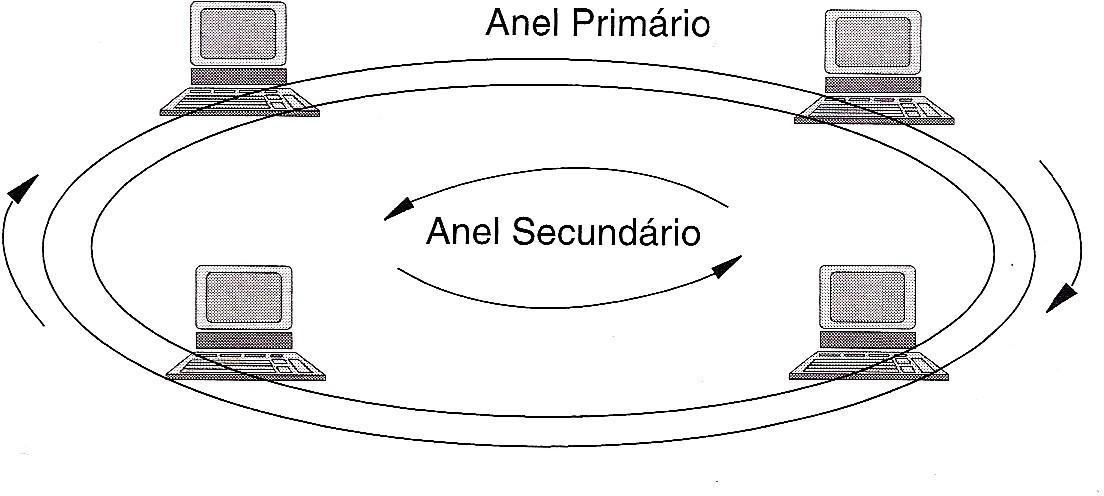
Figura 41: Exemplo de uma arquitetura em anel de rotações contrárias do FDDI.
menos suscetível a um rompimento da rede, pois possui a habilidade de auto cura. Se a topologia for cortada em um único ponto, esse corte é corrigido pelo estabelecimento de uma conexão de laço para o anel inativo, criando um anel virtual único. Desta forma, a rede FDDI continua funcionando em velocidade total. Se a topologia for cortada em dois pontos diferentes, o resultado serão duas redes curadas. No caso de duas falhas, os componentes de rede que manterão a conexão são determinados pelos nós que precisão manter a conectividade e também de como a rede foi projetada. A figura 42 mostra um exemplo da auto cura.
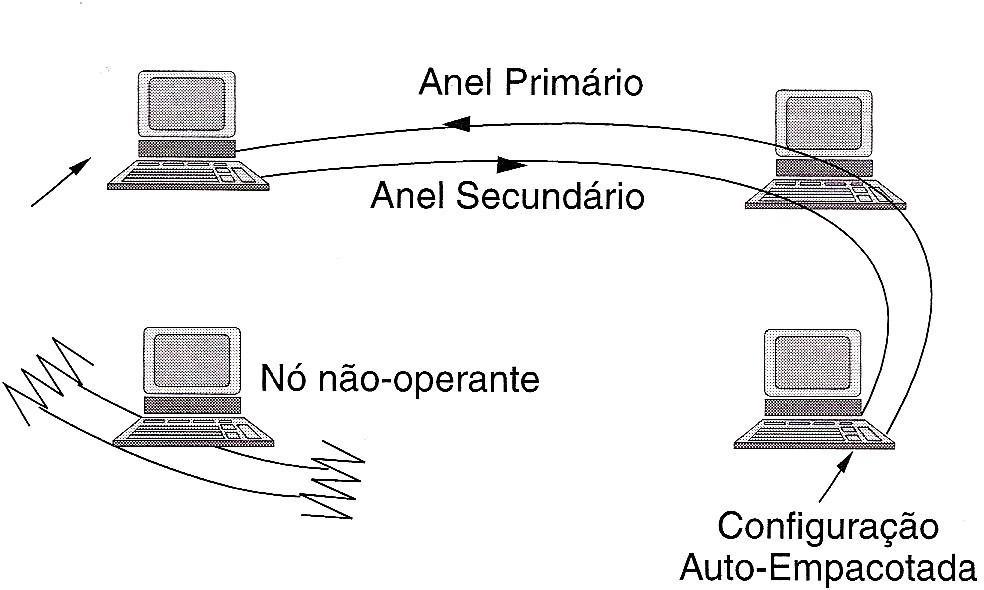
Figura 42: Exemplo da capacidade de "autocura" do FDDI.
transmite informações em quadro de até 4500 bytes, aumentando a confiança da rede e diminuindo a carga dos protocolos.
codifica dados de forma diferente de outras redes, aumentando a eficiência da transmissão.
As
redes FDDI usam dois tipos de quadros: quadro e sinalizador (quadro
especial que permite que um nó acesse o anel). As redes FDDI usam
símbolos em vez de bits, cada símbolo é definido por no mínimo, 4 bits.
quadro: consiste de um preâmbulo (PA) de dezesseis ou mais símbolos I, um campo delimitador de início de um par de símbolos JK, um campo de controle de quadro de dois símbolos, endereços de destino e de origem (DA – destination address e SA – source address) com quatro ou doze símbolos cada um, um campo de informação de zero ou mais pares de símbolos para dados de usuário, uma sequência de checagem de quadro (FCS – frame check sequence) de oito símbolos, um delimitador de final de um símbolo T e um estado de quadro de três ou mais símbolos R ou S. Esse formato é mostrado na figura 43.

Figura 43: Formato do quadro FDDI.
sinalizador: consiste de um preâmbulo (PA) de 16 ou mais símbolos I, um delimitador de início (SD – starting delimiter) de um par de símbolos JK, um controle de quadro (FC – frame Control) de dois símbolos e um campo delimitador de final (ED – ending delimiter) de dois símbolos T. Esse formato é mostrado na figura 44. Apenas um sinalizador é permitido no anel. Portanto, somente um nó pode transmitir dados. Há duas classes de sinalizadores:

Figura 44: Formato do sinalizador FDDI.
sinalizador restrito: permite que dois nós especificados usem toda largura de banda não usada ou não reservada da rede pela duração da transmissão de dados.
sinalizador não-restrito: é usado para operação normal.
Token Ring
Token
Ring é uma tecnologia para redes locais baseada em tokens para controle
de acesso a meios. Uma rede local Token Ring é implementada como um
anel lógico usando uma topologia física em anel (figura 45) ou como uma
estrutura de anel lógico sobre uma configuração física em estrela.
Também é possível ampliar a configuração (figura 46) para incluir um
anel constituído por diversos hubs interconectados.
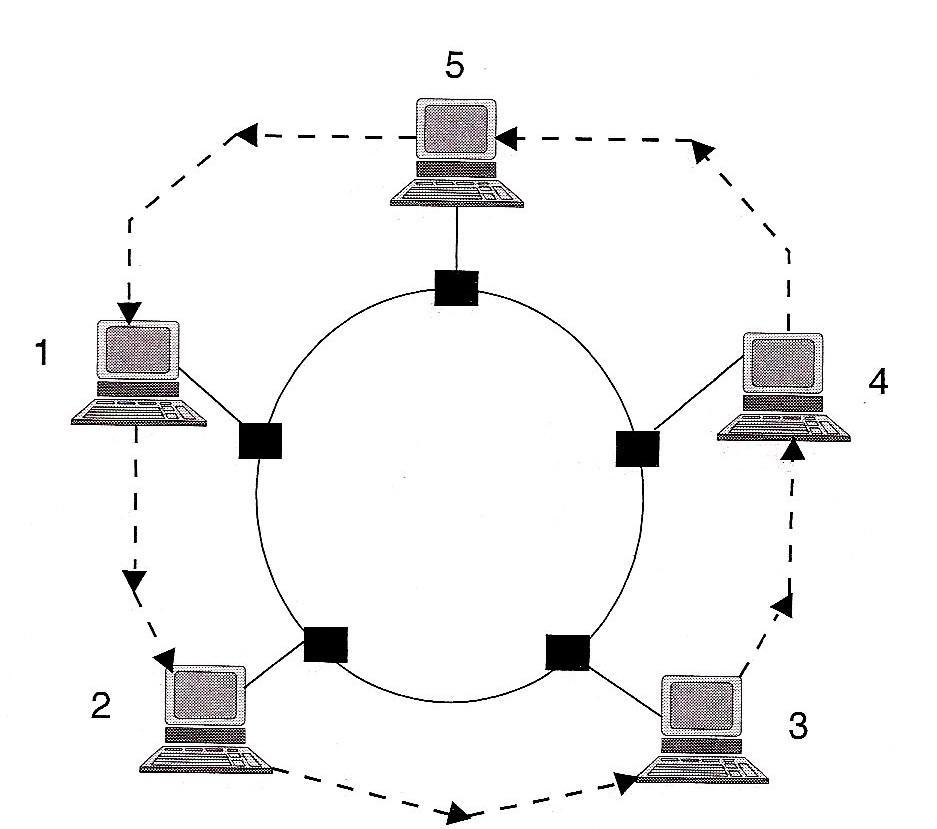
Figura 45: Rede Token Ring.
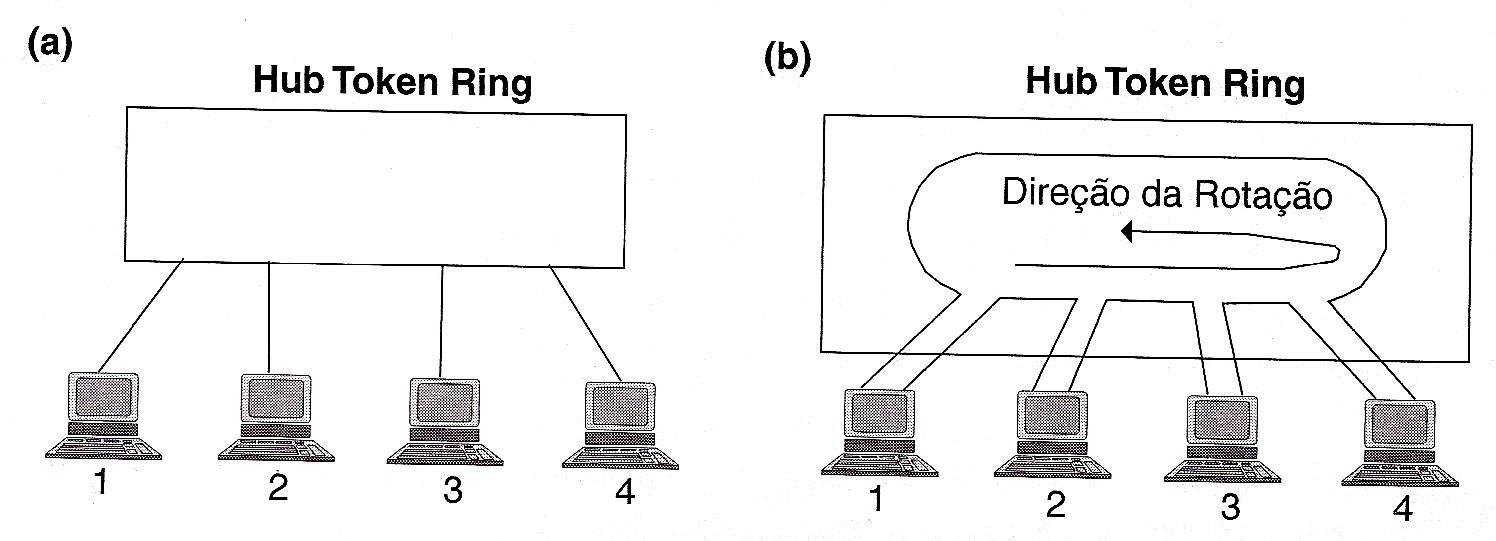
Figura
46: (a) Uma rede Token Ring típica constituída por nós conectados a um
hub em configuração física de estrela. (b) Internamente, os nós na
realidade são interconectados usando um anel lógico.
Os
quadros de dados de uma rede Token Ring são transmitidos de nó para nó,
no sentido dos ponteiros do relógio ou no sentido inverso, por ligações
ponto-a-ponto.
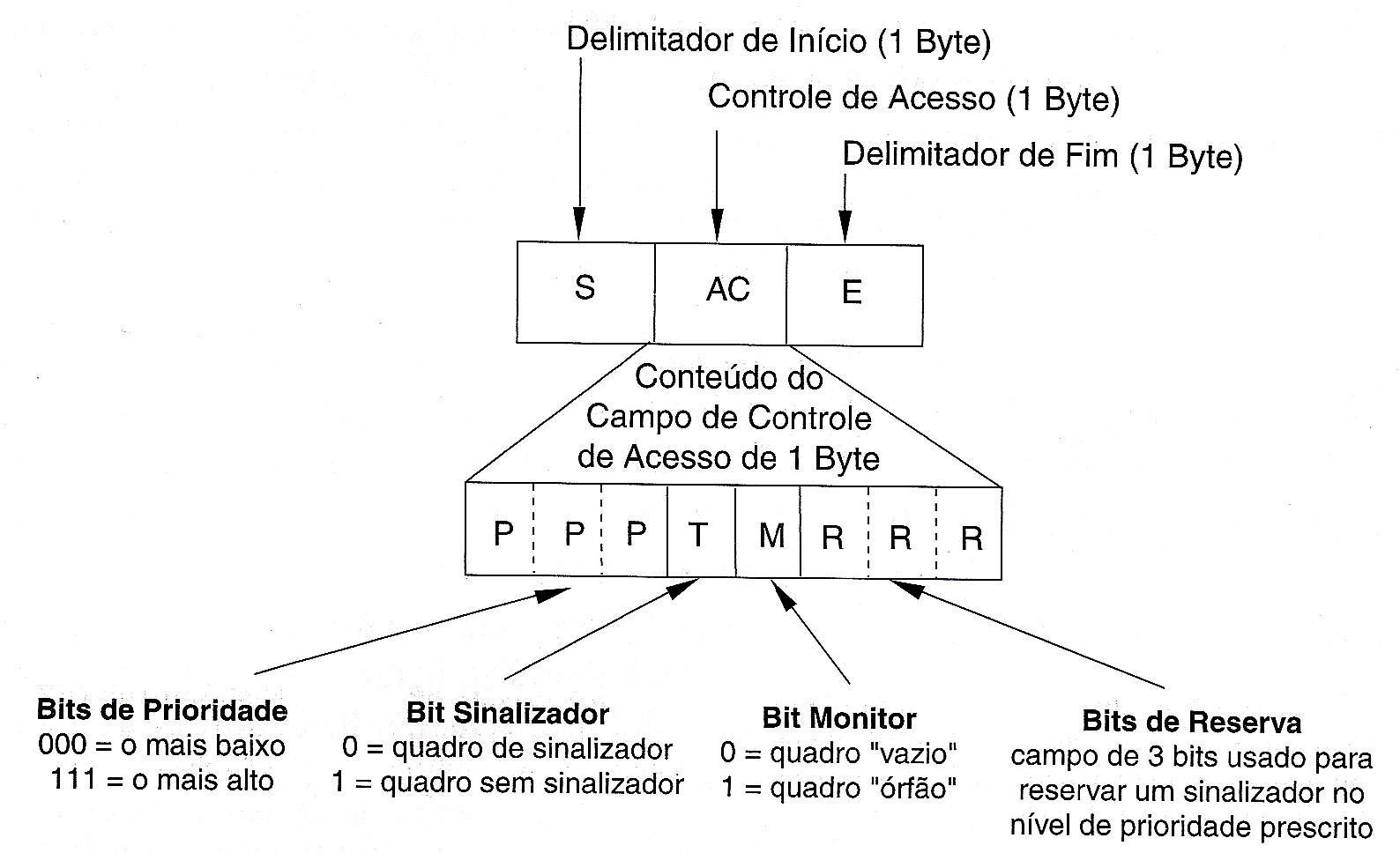
Figura 47: Formato e conteúdo de um quadro de sinalizador IEEE 802.5.
A
rede Token Ring usa dois tipos de quadros: o quadro sinalizador
especial e o quadro de dados. O quadro sinalizador especial é
constituído por (figura 47):
delimitador de inicio de quadro de um byte constituído pela cadeia JK0JK000.
campo de controle de acesso de um byte, constituído por oito bits:
três bits de prioridade (P), que podem ser ajustados de 0 (000) a 7 (111), ou seja, a rede Token Ring pode ter 8 prioridades relativas à transmissão de dados
um bit sinalizador (T), que identifica o quadro como sinalizador (T = 0) ou de dados (t = 1). Se o T for igual a 0, é considerado um sinalizador livre e só pode haver um no anel, o nó que possuir este sinalizador livre tem permissão para transmitir dados.
um bit monitor (M), é usado pelo nó denominado estação monitora para desconsiderar o estado de um sinalizador, ou seja, quando o nó transmite dados ou quando o sinalizador está livre, M recebe o valor 0, quando a estação monitora recebe um quadro de dados, M recebe o valor de 1. Se a estação monitora recebe um quadro de dados em que M vale 1, ela sabe
que
o nó transmissor não extraiu os dados do quadro após uma passagem por
todo o anel. A estação monitora então remove este quadro do anel e gera
um novo sinalizador.
delimitador de fim de quadro de um byte constituído pela cadeia JK1JK10E.
J e K são símbolos conhecidos como violação de código, e ocorre quando não temos uma transição no meio de um sinal de bit.
Violação J: quando a ausência de transição for detectada no início e no meio de um tempo de bit.
Violação k: quando a ausência de transição for detectada no início de um tempo de bit, mas está ausente no meio do tempo de bit.
E é o bit de detecção de erros, que deve valer 0.
O
quadro de dados token ring é apresentado na figura 48, na verdade esse
quadro é um muito parecido com o quadro sinalizador. Os três primeiros
campos do quadro de dados são equivalentes aos do quadro de sinalizador.
Quando o sinalizador livre chega a um nó que possui dados para
transmitir, esse nó muda o bit do campo de controle de acesso para 1 e
acrescenta ao quadro de sinalizador um campo de controle de quadro,
endereços de origem e de destino, dados de usuário, checagem de soma CRC
e um campo de estado de quadro.
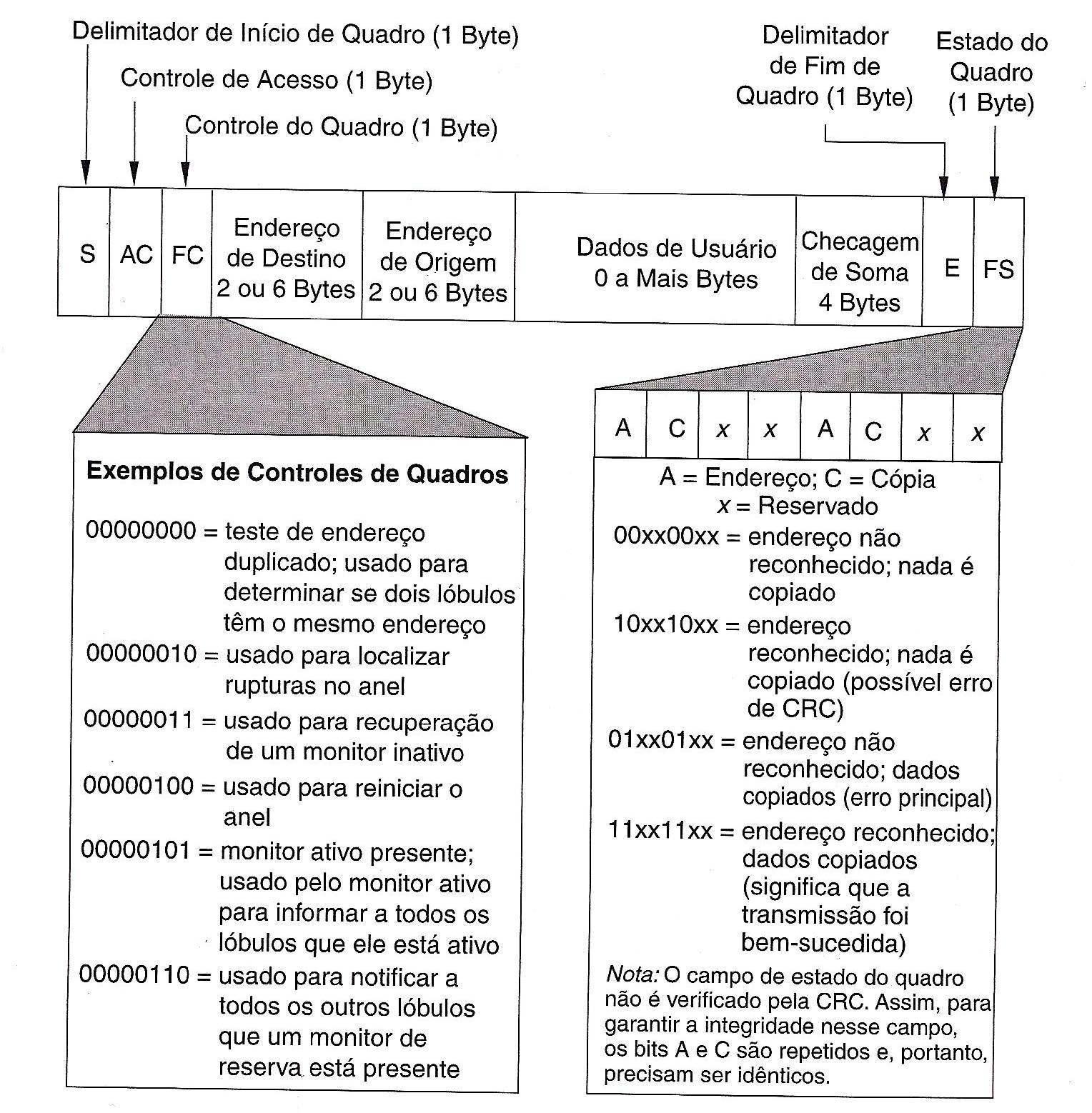
Figura 48: Formato e conteúdo de um quadro IEEE 802.5.
Quando
um nó recebe o quadro de dados, através do bit sinalizador ele
identifica o quadro como de dados, então, verifica o endereço de destino
do quadro, se o endereço do receptor não for o seu, deve ser novamente
colocado o quadro no anel. Somente quando o nó desejado recebe o quadro,
ele copia o quadro em memória, ajusta os bits A e C do campo de estado
do quadro para 1 e coloca todo o quadro de volta no anel, onde ele
continuará a ser transmitido de nó em nó.
Quando
o nó emissor recebe o quadro de novo, ele examina o campo de estado do
quadro. Se os bits A e C têm valor 1, a transmissão de dados ocorreu com
sucesso. Caso contrário, o quadro é retransmitido. Se a transmissão é
bem sucedida, o nó remove os dados do quadro e muda o valor do bit
sinalizador para 0. Nesse caso, o quadro de dados é transformado de
volta em quadro sinalizador livre e colocado de novo no anel e enviado
para o próximo nó.
FDDI versus Token Ring
Nesta seção, veremos algumas diferenças entre redes FDDI e Token Ring, que são:
As redes Token Ring possuem um único anel enquanto que as redes FDDI podem ter dois anéis de fibra ótica com as rotações contrárias, permitindo configurações para redes confiáveis.
Redes token ring, através de prioridade, é possível “reservar” o sinalizador, as redes FDDI não possuem esse esquema.
As redes FDDI possuem um tamanho máximo de dados de 4500 octetos por quadro evitando que um nó obstrua o cabo, as redes Token Ring não possuem tamanho de dados explícito.
Redes FDDI podem suportar a recuperação no caso de cortes no anel.
Os campos do FDDI são definidos por no mínimo, quatro bits e podem ser definidos por um byte de informação.
As redes token ring possuem um técnica opcional que é implementada como uma característica no FDDI: o conceito de liberação prévia de sinalizador.
Nas redes FDDI os sinalizadores não são modificados para um início de quadro diferentemente das redes Token Ring.
Redes sem fio 802.11
O
padrão 802.11 é o principal padrão de LAN sem fio. Escritórios,
aeroportos, lugares públicos utilizam LANs para que usuários de
smartphones, computadores e PDAs possam se conectar à internet. As LANs
também podem ser usadas para que dois ou mais computadores vizinhos se
comuniquem sem usar a Internet, chamada de rede ad hoc, a figura 49
mostra esses dois tipos de uso das redes LANs.
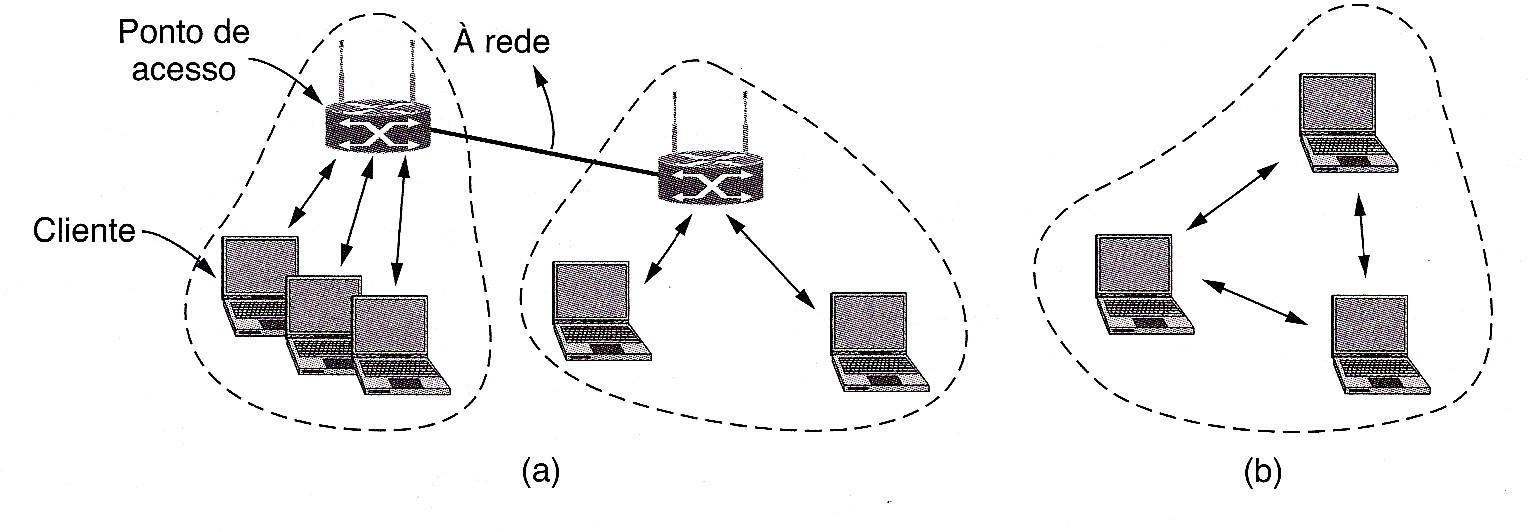
Figura 49: Arquitetura 802.11. (a) Modo da infraestrutura. (b) Modo ad hoc.
802.11
surgiu em 1997, e usava técnicas de infravermelho e salto de frequência
na banda de 2,4 GHz. Essas técnicas não são mais usadas. Outra técnica
também usada no início, foi o espectro de dispersão de sequência direta a
1 ou 2 Mbps na banda de 2,4 GHz, porém foi alterada para trabalhar em
velocidades de até 11 Mbps, conhecida como 802.11b. A partir de 1999
começou a ser utilizada a técnica OFDM, conhecida como 802.11a e utiliza
uma banda de frequência de 5 GHz. Em 2006, surgiu a 802.11g, com banda
de frequência à 2,4 GHz. Tanto a 802.11a como à 802.11g oferecem
velocidades de até 54 Mbps. Em 2009, surgiu a 802.11n, essa técnica usa
simultaneamente várias antenas no transmissor e no receptor para
aumentar a velocidade, que podem chegar a velocidade de até 600 Mbps.
Todas
as técnicas do padrão 802.11 utilizam rádios de curto alcance para
transmitir sinais nas bandas de 2,4 ou 5 GHz, essas bandas não são
licenciadas, e é disponível gratuitamente a qualquer transmissor.
Protocolos usados na subcamada MAC
O
padrão 802.11 exige que todos os quadros transmitidos sejam
reconhecidos, e se qualquer parte da transferência falhar, o quadro é
considerado perdido. Pela complexidade referente à comunicação sem fio,
os protocolos da subcamada MAC são diferentes da Ethernet: a comunicação
é half-duplex; o sinal recebido pode ser mais fraco que o sinal
transmitido; o padrão 802.11 tenta evitar colisões com o protocolo
CSMA/CA.
Como
exemplo, podemos citar uma transmissão de quadros usando o OFDM, as
estações que possuem quadros para transmitir fazem um backoff aleatório,
o número de slots a recuar é escolhido entre 0 e 15, a estação que quer
transferir quadros espera até que o canal esteja inoperante, detectando
que não existe sinal por um curto período, conta de forma regressiva os
slots inoperantes, interrompendo quando os quadros forem enviados.
Quando o contador chegar a 0, a estação envia seu quadro. Assim que o
destinatário receber o quadro envia uma confirmação, o não recebimento
desta
confirmação é um indicativo de erro, o transmissor dobra o período de backoff e envia novamente.
A
figura 50 exemplifica a transmissão: a estação A está transmitindo um
quadro para D e as estações B e C estão prontas para enviar, mas sabem
que o canal está ocupado e esperam até que fique livre. Quando A receber
a confirmação de D, o canal é liberado. As estações B e C, em vez de
enviar um quadro imediatamente e colidir, realizam um backoff. C escolhe
um espaço de tempo menor e, por isso, transmite primeiro. B interrompe
sua contagem enquanto C estiver usando o canal e assim que C receber a
confirmação do destinatário, B retoma sua contagem e após, transmite seu
quadro. Esse processo é chamado de DCF:
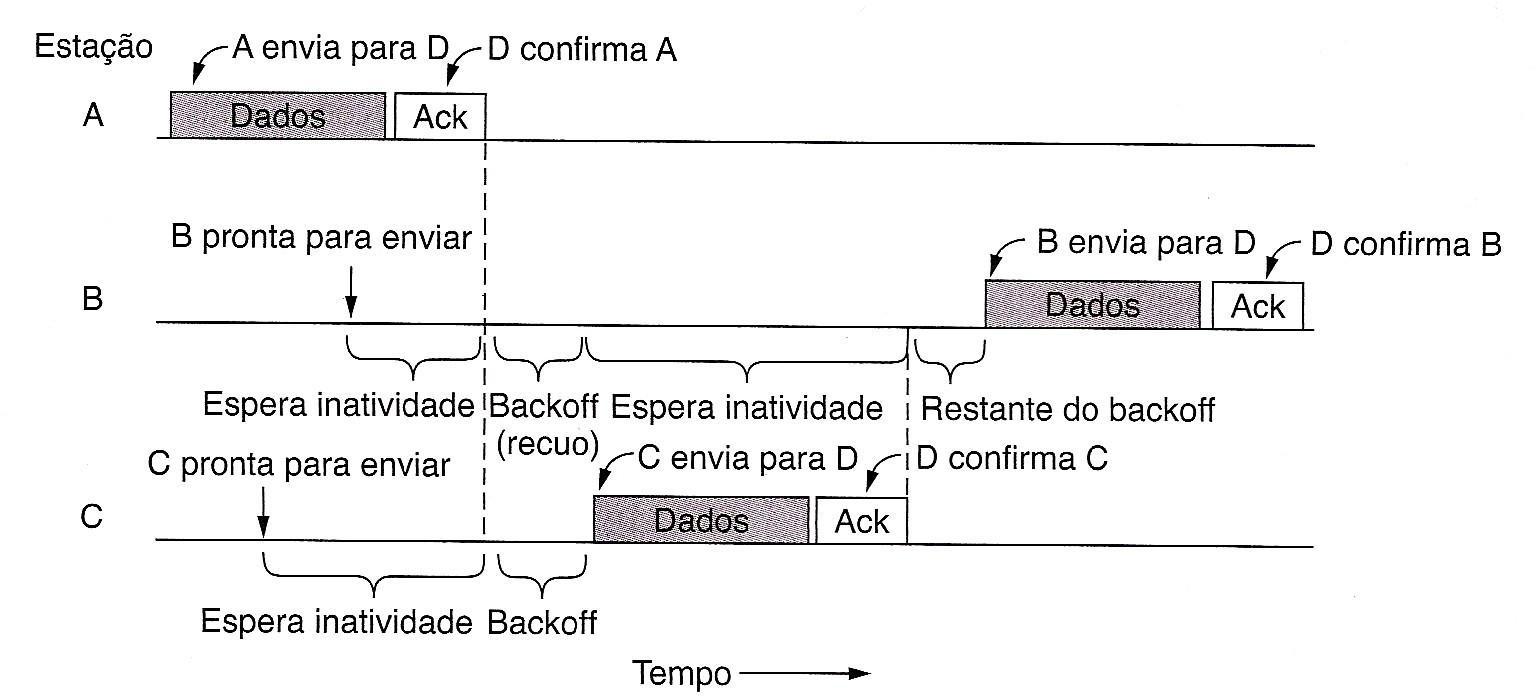
Figura 50: Transmitindo um quadro com CSMA/CA.
DCF (Distributed Coordination Function - Função de Coordenação Distribuída): cada estação atua de modo independente, sem nenhum tipo de controle central. A DCF é a base do CSMA/CA padrão. Esse processo verifica se o canal está livre, e se estiver, realizam backoff para evitar colisões.
PCF (Point Coordination Function – Função de Coordenação de Ponto): modo opcional, o ponto de acesso controla toda a atividade em sua célula (como a estação base de celular). O PCF não é usado na pratica porque não tem como impedir que as estações em outra rede vizinha transmitam um tráfego simultâneo.
Para
diminuir equívocos referente à qual estação está transmitindo, o padrão
802.11 define a detecção do canal de maneira física e virtual: o
primeiro verifica o meio para ver se existe um sinal válido e; o
segundo, cada estação mantém um registro lógico de quando o canal está
em uso rastreando o NAV (Network Allocation Vector - vetor de alocação
de rede). Todos os quadros possuem o campo NAV que informa o tempo de
conclusão da sequência em que o quadro faz parte. Dessa forma, as
estações que estão escutando o canal sabem que o canal está ocupado por X
período indicado no NAV.
Como
parte da prevenção de colisões, as estações atrasam a transmissão até o
canal tornar-se inativo. Existe níveis de prioridade para o tráfego de
quadros, possibilitando que os quadros de alta prioridade não esperem
tanto tempo depois que o canal esteja inativo. Existem três tipos de
quadro, que são:
intervalo,
ou seja, é usado para as transmissões de maior prioridade, que são:
mensagens ACK, sequências de quadro de controle ou rajadas de
fragmentos.
DIFS (DCF Interframe Space – Espaçamentos entre quadros DCF): são os quadros regulares, sem prioridades alta ou baixa. Todas as estações podem tentar adquirir o canal para enviar um novo quadro quando o canal está ocioso por DIFS.
EIFS (Extended Interframe Space – Espaçamento Estendido entre Quadros): somente é usado por uma estação que tenha acabado de receber um quadro com erro na transmissão.
Fragmentação
Para
transmitir quadros grandes pelo canal, é necessário reparti-lo em
fragmentos. A fragmentação também ajuda na minimização de
interferências, ou seja, a interferência pode afetar pequenos fragmentos
ao invés de um quadro inteiro, resultando em uma maior taxa de
transferência eficaz. Os fragmentos possuem o mesmo número de sequência
de quadro e possuem também, números sequenciais que ajudam na remontagem
do quadro.
Os
fragmentos e as suas confirmações são separados pelos SIFS. O NAV é
usado para assegurar que outras estações não utilizem o canal quando os
fragmentos de um quadro estão sendo enviados. O RTS/CTS definem o NAV a
partir do momento esperado para a extremidade dos primeiros fragmentos
no ar, os fragmentos subsequentes formam uma cadeia. Cada fragmento
define o NAV para conter o meio até o final do reconhecimento para o
próximo quadro. Após o último fragmento e o seu reconhecimento forem
enviados, o NAV é alterado para 0 indicando assim, que o meio está
liberado.
Formato das Mensagens
Este padrão possui três tipos de quadros: dados, controle e gerenciamento:
Quadros de Dados: possui oito campos, que são:
Campo Controle de quadro, que possui onze subcampos, que são:
versão do protocolo: permite que versões futuras do 802.11 operem ao mesmo tempo na mesma célula.
Campo Tipo: informa o tipo de quadro (dados, controle ou gerenciamento).
Campo Subtipo: informa se é RTS ou CTS.
Campos Para DS e De DS: indica se os quadros estão indo ou vindo.
Campo Mais Fragmento: significa que mais fragmentos virão em seguida.
Campo Repetir: indica uma retransmissão de um quadro enviado anteriormente.
Campo Gerenciamento de Energia: indica que o transmissor está entrando em modo de economia de energia.
Campo Mais Dados: indica que o transmissor possui quadros adicionais ao receptor.
Campo Quadro Protegido: especifica que o corpo do quadro foi criptografado por segurança.
Campo Ordem: informa ao receptor que a camada superior espera que a sequência de quadros chegue estritamente em ordem.
Campo Duração: informa a quantidade de tempo que o quadro e sua confirmação ocuparão o canal.
Campos Endereço: o quadro possui três campos endereços: o primeiro fornece o endereço do receptor, o segundo do transmissor e o terceiro indica ponto distante na rede.
Campo Sequência: permite que os fragmentos sejam enumerados.
Campo Dados: contém a carga útil até 2.312 bytes.
Campo Checksum do Quadro: possui o detector de erros.
Quadros de Gerenciamento: o formato é semelhante ao dos quadros de dados, mais um formato para a parte de dados que varia com o subtipo.
Quadros de Controle: são pequenos, possuem os campos controle de quadro, duração, checksum. Esse tipo de quadro pode conter apenas o endereço e nenhuma parte de dados.
Bluetooth + WiMax
Bluetooth
A
tecnologia Bluetooth (padrão 802.15) é uma conexão de rádio de curto
alcance e fica em um microchip. Bluetooth foi criado em 1994 pela
empresa de celulares Ericsson com a ideia de que, computadores laptops
pudessem fazer chamadas por meio do celular. Após, milhares de empresas
se juntaram para tornar o Bluetooth o padrão sem fio de curto alcance e
de baixa potência para uma ampla variedade de dispositivos.
O
bluetooth tem como conceito oferecer uma capacidade sem fio de curto
alcance, utiliza a banda de 2,4 GHz e pode compartilhar em uma distância
de 10 metros a capacidade de até 720 kbps. Além disso, o bluetooth
oferece suporte a várias aplicações, como por exemplo:
Usar o fone de ouvido para fazer chamadas conectado remotamente a um telefone celular.
Ligar computadores a impressoras, teclados e mouses sem o uso de fios.
Conectar players MP3 a outras máquinas para realizar downloads de músicas sem usar fios.
Monitorar remotamente o ar-condicionado, o forno e a internet das crianças.
Entre outros.
O
bluetooth pode operar em um ambiente de muitos usuários. Utilizando uma
rede chamada de Piconet, até oito dispositivos podem se comunicar, além
disso, dez redes Piconets podem existir na mesma faixa de cobertura do
Bluetooth. O bluetooth oferece suporte para três áreas de aplicações sem
fio de curto alcance, que são: Pontos de acesso de voz e dados:
facilita as transmissões de voz e dados em tempo real; Substituição de
cabo: elimina a necessidade das ligações de cabo para conexões de vários
dispositivos, o alcance é aproximadamente 10 m, podendo se estender até
100 metros com uso de amplificador e; Rede ad-hoc: o dispositivo que
possui rádio bluetooth pode estabelecer conexão instantânea com outro
dispositivo que possuir rádio bluetooth, se este estiver no seu raio de
alcance.
O Bluetooth é definido como uma arquitetura de protocolos em camadas, que consiste nos protocolos:
básicos: possui cinco camadas com os elementos:
rádio: especifica os detalhes de frequência, o uso de salteamento da frequência, esquema de modulação e potência de transmissão.
banda base: envolve o estabelecimento da conexão dentro de uma rede piconet, o endereçamento, o formato de pacote, a temporização e o controle de energia.
protocolo gerenciador de enlace (LMP): responsável pela configuração de enlace entre dispositivos Bluetooth e o gerenciamento de enlace em andamento, incluindo a autenticação, criptografia, e a negociação de tamanhos de pacote de banda base.
controle de enlace lógico e protocolo de adaptação (L2CAP): adapta os protocolos de camada superior à camada de banda base, fornecendo serviços sem conexão e orientados a conexão.
programa de descoberta de serviço (SDP): para ser possível a conexão entre dois ou mais dispositivos é necessário consultar as informações de dispositivo, serviços e as características dos serviços.
de substituição de cabo e controle de telefonia: possui dois protocolos, o RFCOMM que é o protocolo de substituição de cabo e o TCS BIN que é o protocolo de controle de telefonia:
RFCOMM: é projetada uma porta serial virtual para substituir as tecnologias de cabo de forma transparente, fornecendo transporte de dados binários e emulando os sinais de controle EIA-232 (também conhecido como RS-232) sobre a camada de banda base do bluetooth.
TCS BIN: é um protocolo baseado em bits que define a sinalização de controle de chamada para o estabelecimento de chamadas de fala e dados entre dispositivos Bluetooth e define procedimentos de gerenciamento de mobilidade para manipular grupos de dispositivos TCS Bluetooth.
adotados: são especificações emitidas por organizações criadoras de padrão e incorporados na arquitetura Bluetooth, tem como estratégia criar apenas protocolos necessários e usar padrões existentes sempre que possível. Os protocolos adotados são:
PPP (point-to-point protocol): protocolo padrão da internet para transportar datagramas IP por meio de um enlace ponto-a-ponto.
TCP/UDP/IP: protocolos básicos da família de protocolos TCP/IP.
OBEX: protocolo de troca de objeto e fornece funcionalidade semelhante à do HTTP de forma mais simples, exemplos de formato de conteúdo transferidos por esse protocolo são: vCard (cartão de visitas eletrônico) e o vCalender (entradas de calendário pessoais e informações de agenda).
WAE/WAP: o bluetooth incorpora o ambiente de aplicação sem fio e o protocolo de aplicação sem fio em sua arquitetura.
Piconets e scatternets
A rede piconet
consiste em um dispositivo mestre com até sete dispositivos escravos. O
dispositivo designado como mestre é responsável por criar a sequência de
salteamento de frequência e o offset de temporização (quando transmitir), e devem ser usados por todos os dispositivos na rede piconet. Os escravos só podem se comunicar quando tiverem permissão do mestre. Nas redes piconets, um dispositivo de uma piconet pode fazer parte de outra piconet e pode funcionar em ambas como escravo ou mestre, essa sobreposição é chamada de scatternet e permite um uso eficiente da largura de banda, além de permitir que muitos dispositivos compartilhem a mesma área física.
Os
sistemas bluetooth usam a frequência com espaçamento de 1 MHz, e
normalmente, são usadas até 80 frequências diferentes para uma largura
de banda total de 80 MHz, esse esquema é conhecido como salto de
frequência, e se não existisse esse esquema, um canal corresponderia a
uma banda de 1 MHz, ou seja, a largura de banda disponível é de 1 MHz
com até oito dispositivos compartilhando essa banda, porém, diferentes
canais lógicos podem compartilhar a largura de banda de 80 MHz.
Podem ocorrer colisões quando dispositivos em diferentes piconets, em diferentes canais lógicos, usarem a mesma frequência de salto no mesmo tempo. À medida que aumenta o número de piconets em uma área, o número de colisões cresce e o desempenho cai.
WiMax
A
rede WiMax é uma rede metropolitana sem fio de banda larga e surgiu no
interesse de não desperdiçar mais cabos de fibra, coaxiais ou mesmo de
par trançado até milhões de residencias ou escritórios. Essa tecnologia
consiste em uma grande antena - chamada de estação base, em um lugar
alto (de preferência fora da cidade) a antenas instaladas nos telhados
dos clientes.
O
primeiro padrão de rede WiMax foi aprovado em dezembro de 2001, como o
padrão 802.16, e oferecia terminal sem fios entre pontos fixos, com uma
linha de visão de um para outro. Em 2003, esse padrão foi revisado, e
usando tecnologias OFDM em frequências entre 2 e 10 GHz, poderiam dar
suporte a enlaces fora da linha de visão, tornando dessa forma, a
implantação muito mais fácil. Em dezembro de 2005, foi revisado
novamente para permitir mobilidade em velocidades veiculares.
A figura 51 demonstra a arquitetura do WiMax. As estações base se conectam diretamente à rede de backbone
do provedor, que está conectada à internet. As estações base se
comunicam com as estações por meio da interface com o ar, sem fios.
Existem dois tipos de estações:
Estações do assinante: local fixo, como exemplo, o acesso à internet de banda larga para residências.
Estações móveis: em movimento, como exemplo, um carro equipado com WiMax.
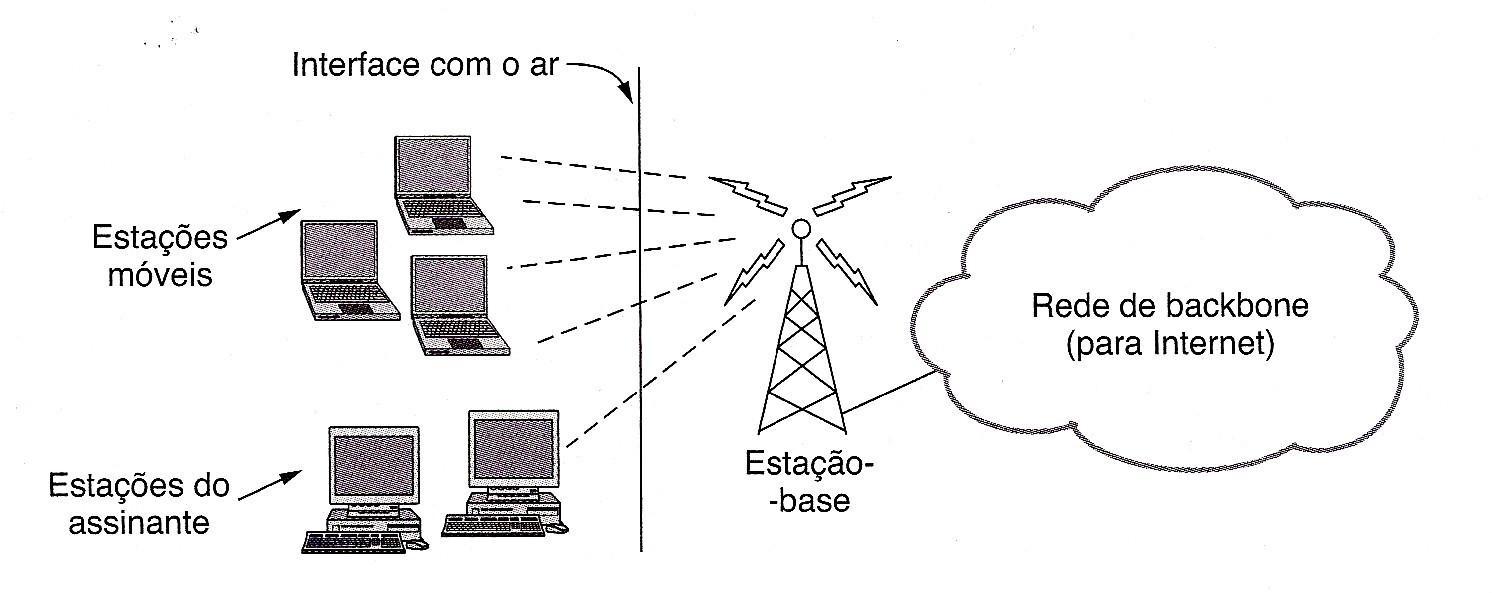
Figura 51: A arquitetura 802.16.
O
padrão 802.16 possui flexibilidade, ou seja, canais com diferentes
tamanhos são aceitos; por exemplo, 3,5 MHz para WiMax fixo e de 1,25 a
20 MHz para WiMax móvel. O WiMax utiliza a técnica OFDM para as
transmissões, que divide o canal em mais subportadoras para tolerar
maiores degradações do sinal sem fio, um exemplo de divisões é no WiMax
móvel, que existem 512 subportadoras para um canal de 5MHz, além disso,
pode ser utilizada as técnicas QPSK, QAM-16 OU QAM-64.
O WiMax também usa o OFDMA (Orthogonal Frequency Division Multiple Access) para
dividir
o canal entre as estações. Com o OFDMA, diferentes conjuntos de
subportadoras podem ser atribuídos a diferentes estações, de forma que
mais de uma estação pode enviar ou receber ao mesmo tempo, aumentando o
desempenho. O WiMax também permite usar os dois métodos: TDD, que
alterna o enviar e o receber e; FDD em que a estação envia e recebe ao
mesmo tempo, porém por ser mais fácil de implementar e mais flexível, o
TDD é mais usado.
A
estrutura de quadro (figura 52) possui um cabeçalho genérico, seguido
por uma carga útil opcional (não sendo necessária em quadros de
controle) e um detector de erros opcional (CRC), o detector de erros é
opcional em razão da correção de erros na camada física e pelo fato de
não ser feita nenhuma tentativa de retransmitir quadros em tempo real.
Os demais campos referem-se:
EC: informa se a carga útil está criptografada.
Tipo: identifica o tipo de quadro, informando principalmente se a compactação e a fragmentação estão presentes.
CI: indica a presença ou a ausência do detector de erros.
EK: informa qual das chaves de criptografia está sendo usada (se houver).
Tamanho: fornece o comprimento completo do quadro, incluindo o cabeçalho.
Identificador de conexão: informa a qual conexão esse quadro pertence.
CRC: é um detector de erros relativo apenas ao cabeçalho.

Figura 52: (a) Um quadro genérico. (b) Um quadro de solicitação de banda.
Referencias Bibliográficas
CARMONA,
Tadeu; HEXSEL, Roberto A. “Universidade Redes: Torne-se um especialista
em redes de computador”. São Paulo: Digerati Books, 2005.
COMER,
Douglas E. “Redes de Computadores e Internet”. 4ª ed. Porto Alegre:
Bookman, 2007. FERNANDES, Eduardo A. “Estudo Comparativo: DSL X Cable
Modem”. Porto Alegre, 1999.
GALLO,
Michael A.; HANCOCK, William M. “Comunicação entre Computadores e
Tecnologias de Rede”. São Paulo: Pioneira Thomson Learning, 2003.
GAST, Matthew S. “802.11 Wireless Network: The Definitive Guide”. 2ª ed. United States of America: O'Reilly, 2005.
KUROSE,
James F.; ROSS, Keith W. “Redes de Computadores e a Internet: Uma
abordagem top- down”. 3ª ed. São Paulo: Pearson Addison Wesley, 2006.
LABIOD, Houda; AFIFI, Hossam; SANTIS, Costantino De. “Wi-Fi, Bluetooth, ZigBee and WiMax”. The Netherlands: Springer, 2007
RAPPAPORT, Theodore S. “Comunicações sem fio: Princípios e Práticas”. 2ª ed. São Paulo: Pearson Prentice Hall, 2009.
STALLINGS,
William. “Redes e sistemas de comunicação de dados: teoria e aplicações
corporativas”. 5ª ed. Rio de Janeiro: Elsevier, 2005.
SWEENEY, Daniel. “WiMax Operator’s Manual: Building 802.16 Wireless Networks”. 2ª ed. United States: Apress, 2006.
TANENBAUM, Andrew S.; WETHERALL, David. “Redes de Computadores”. 5ª ed. São Paulo: Pearson Prentice Hall, 2011.
